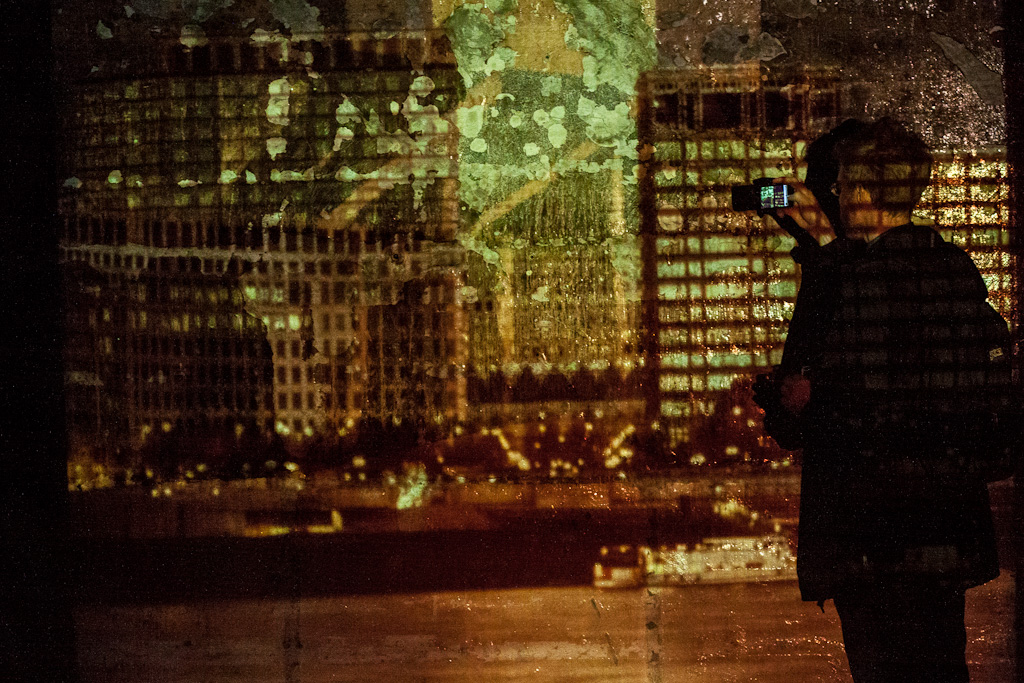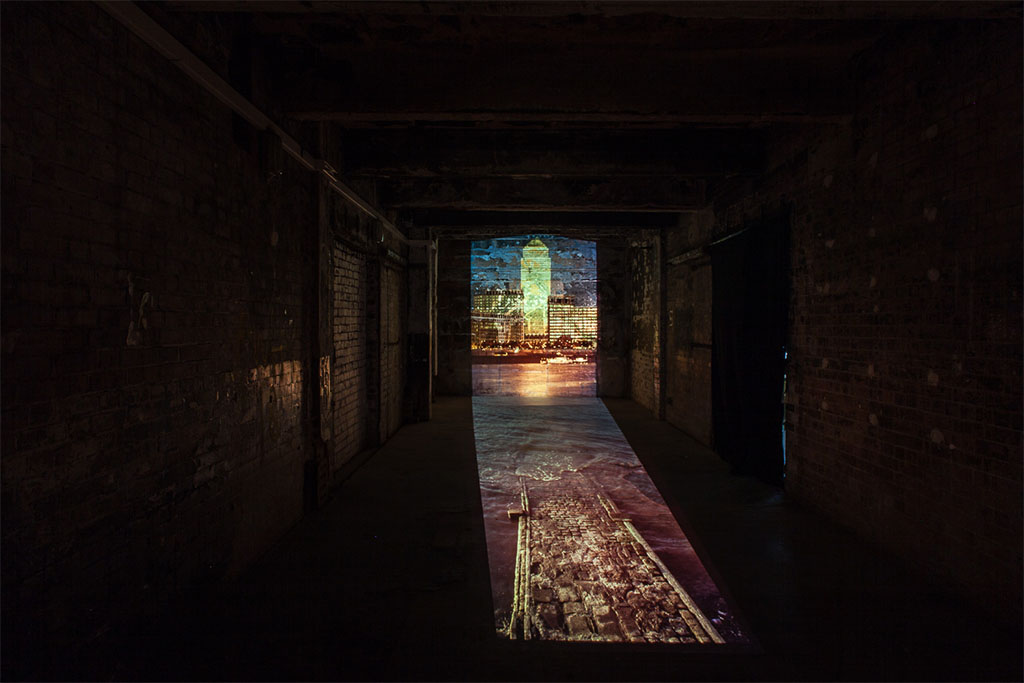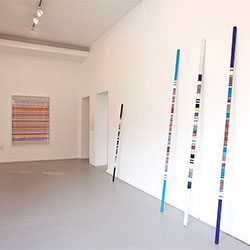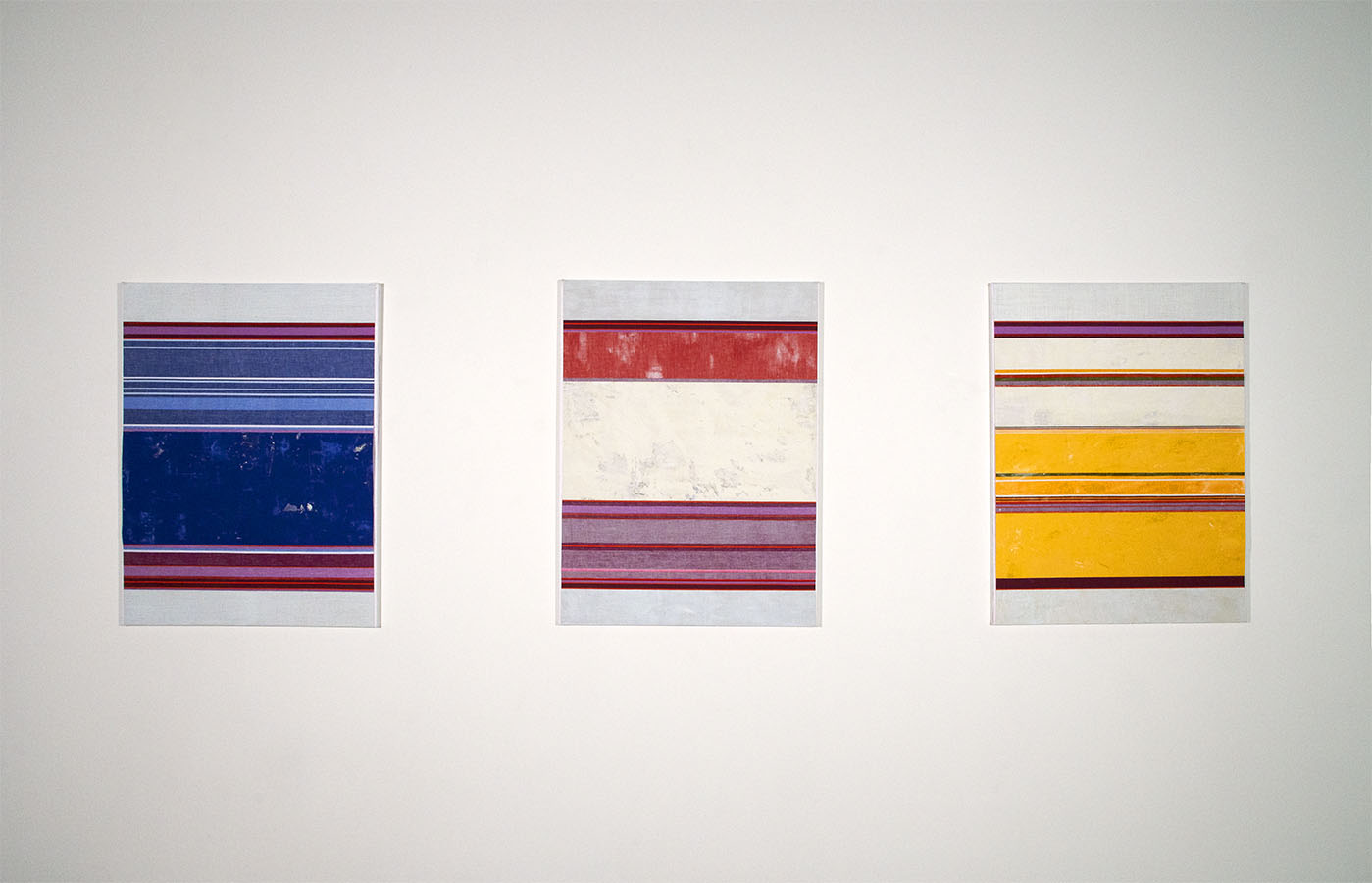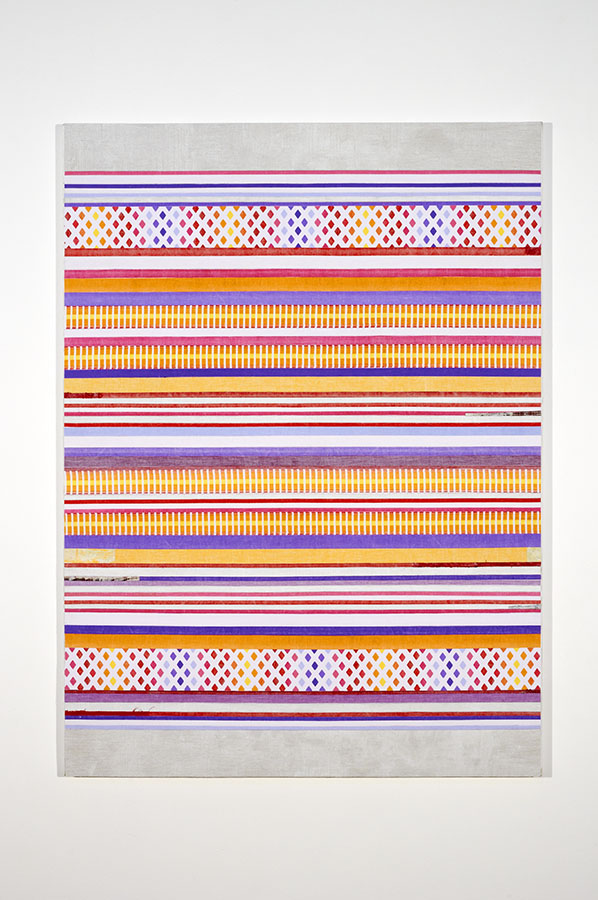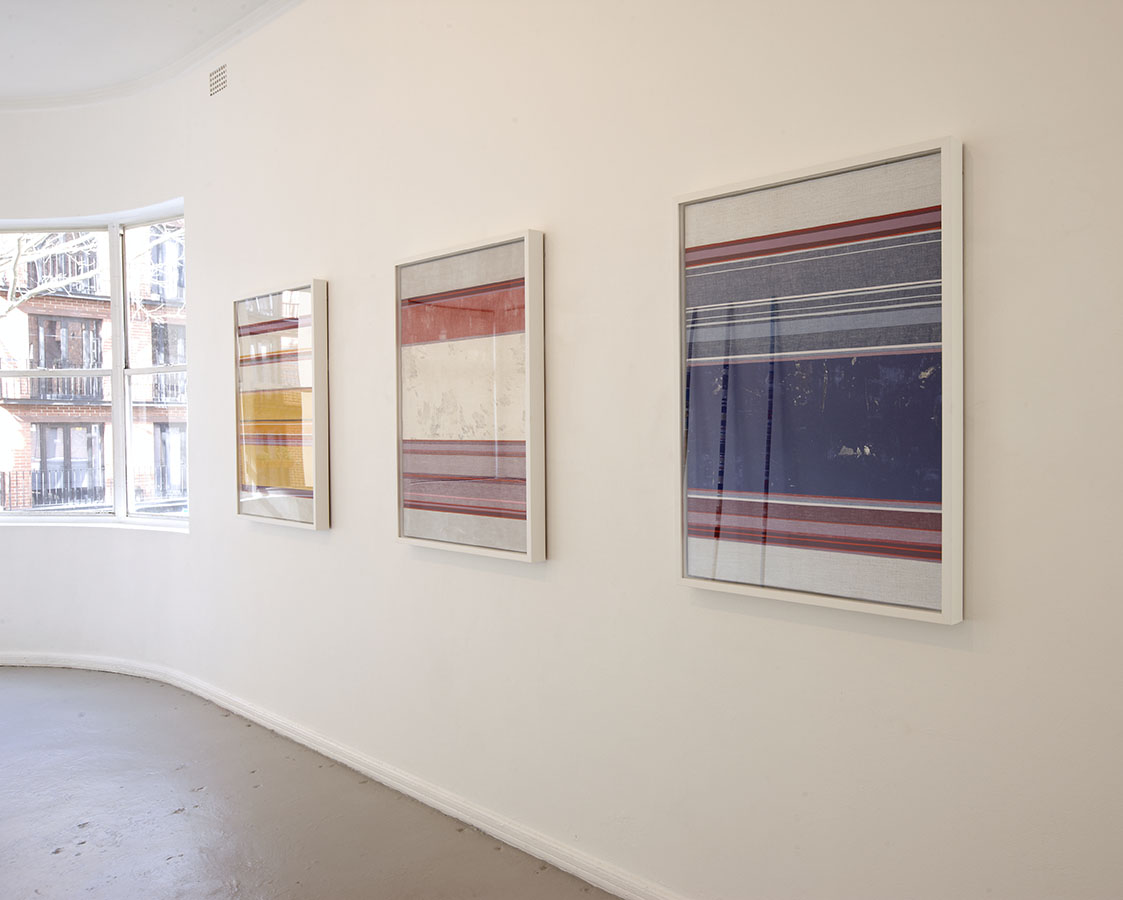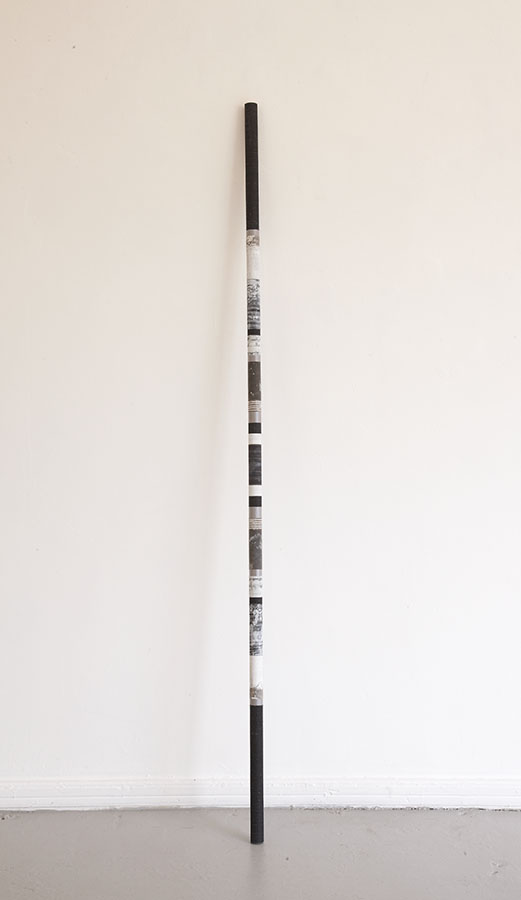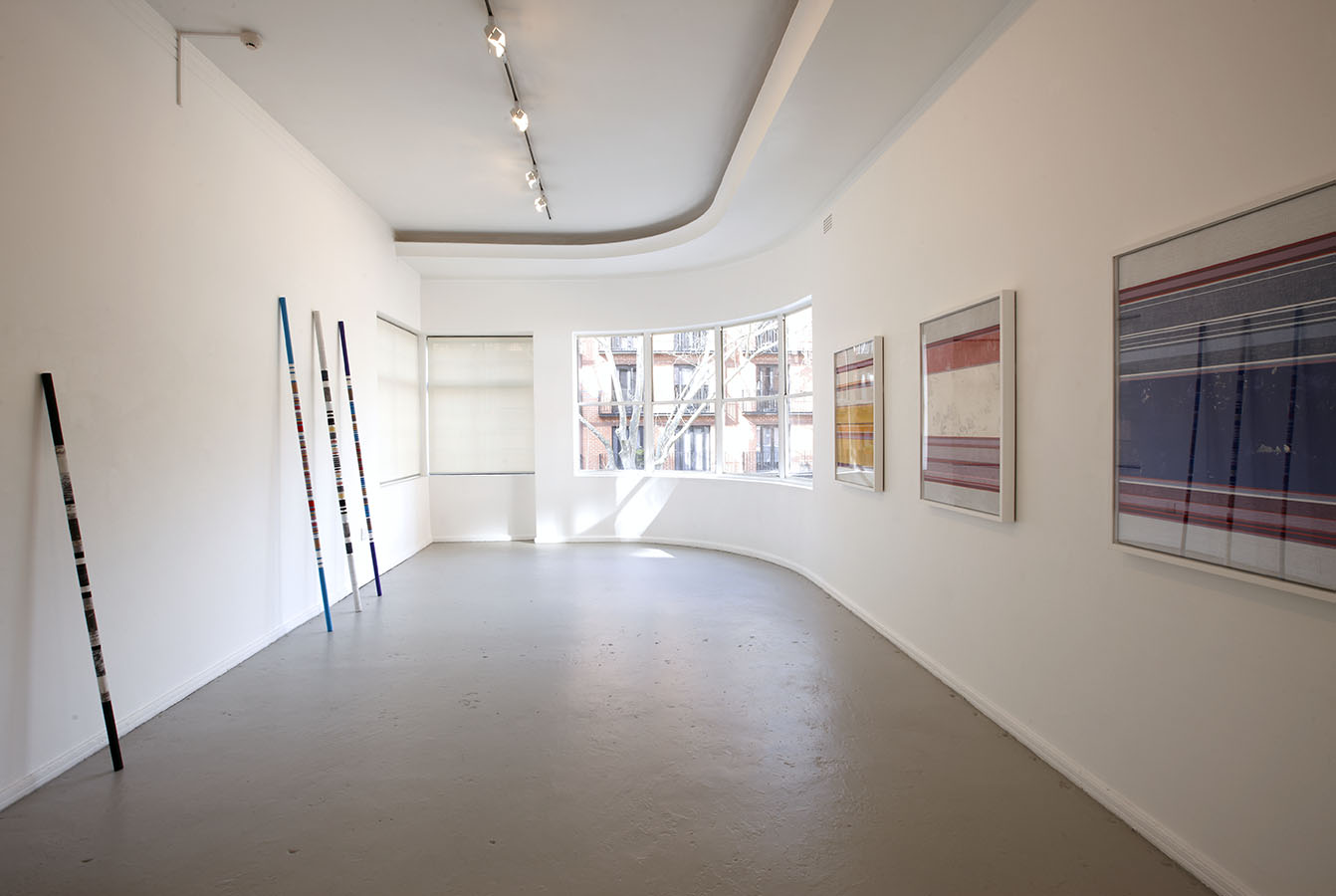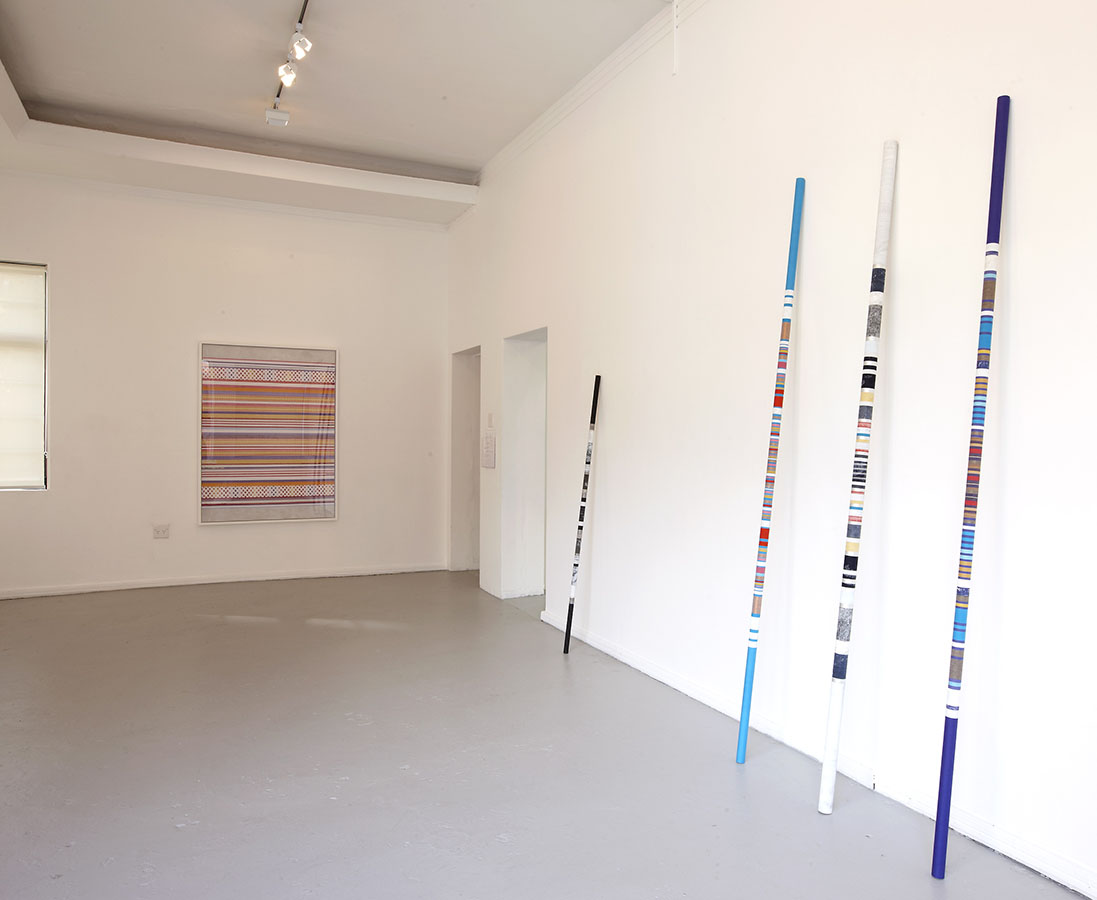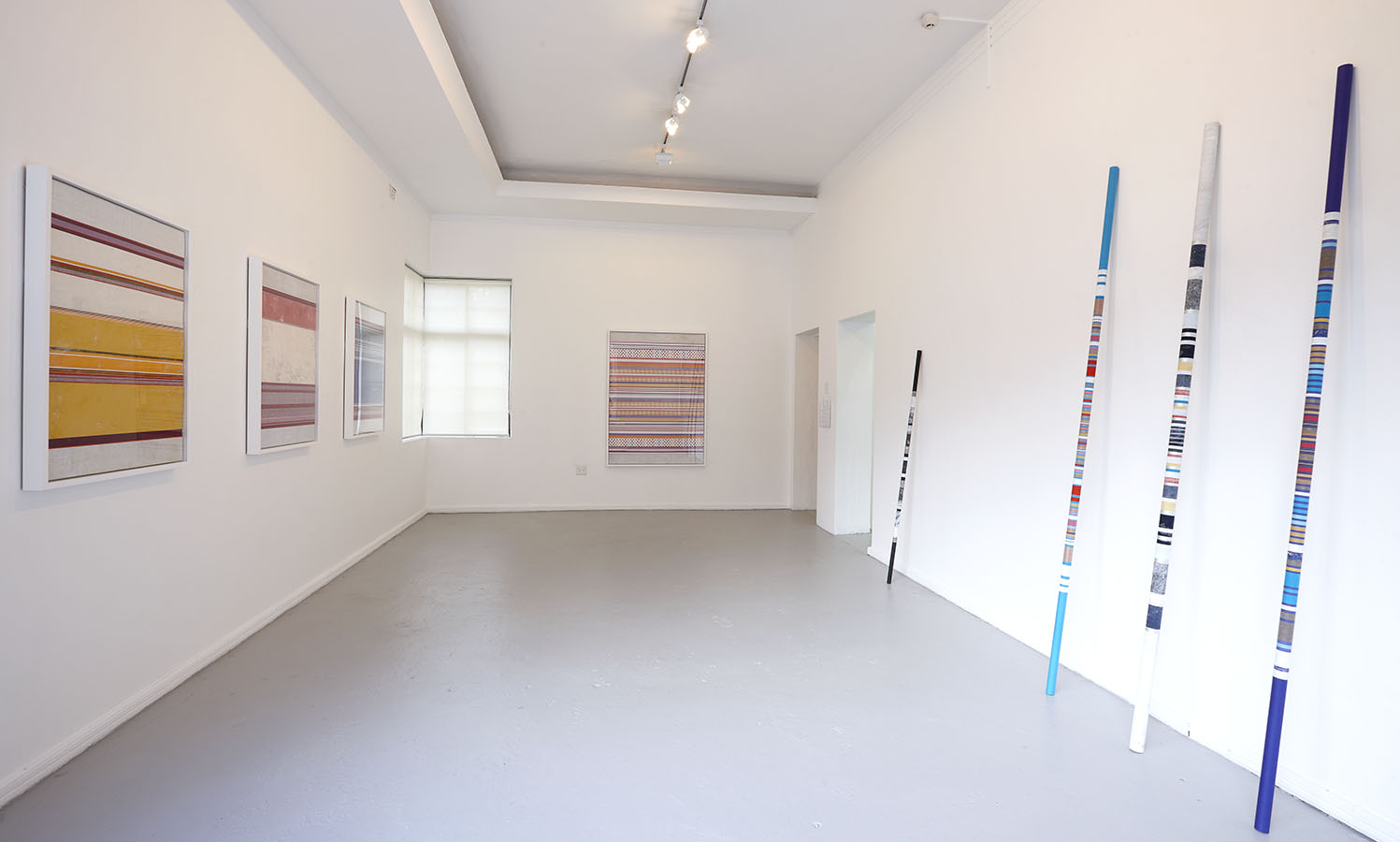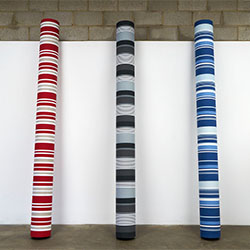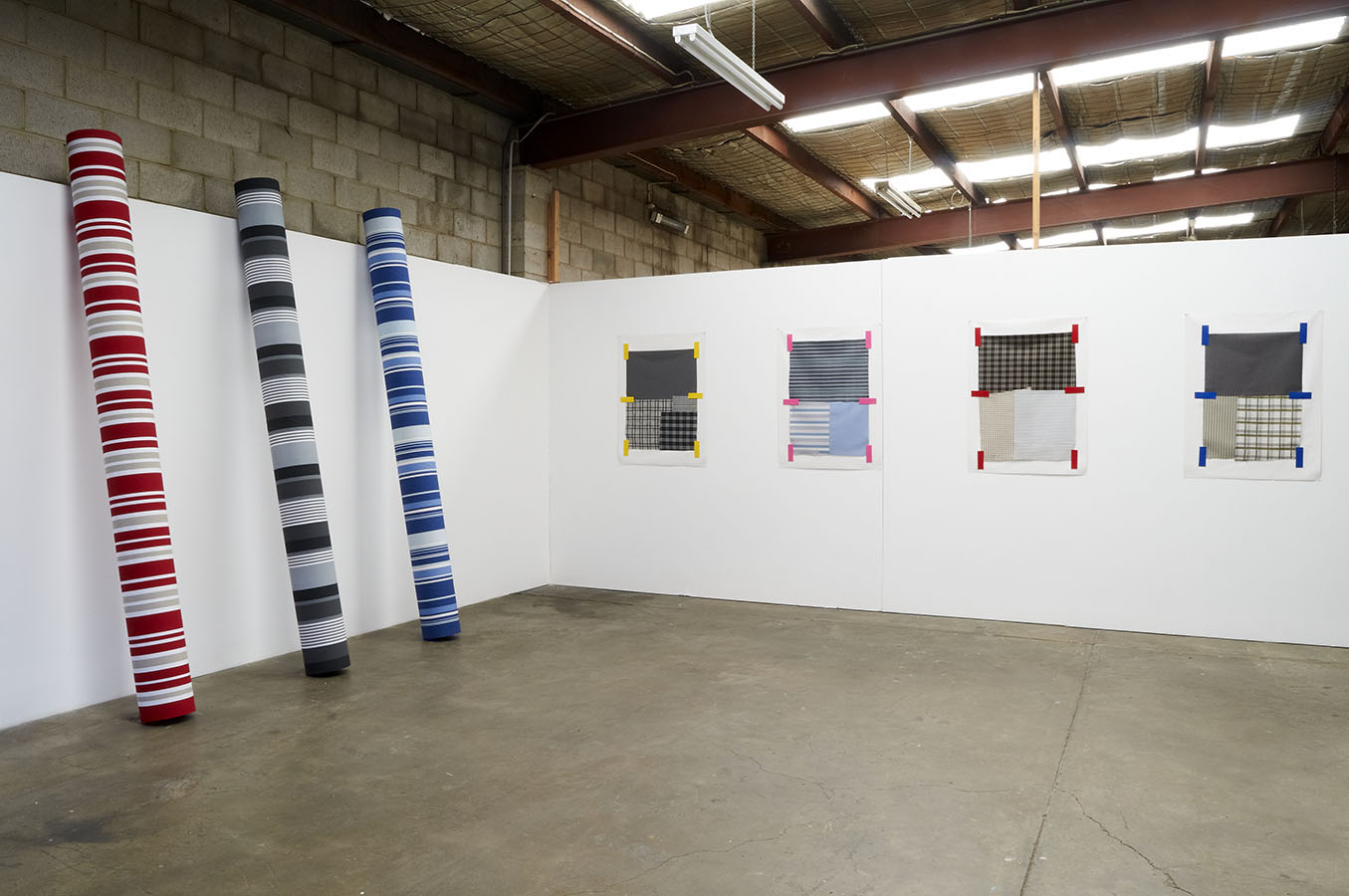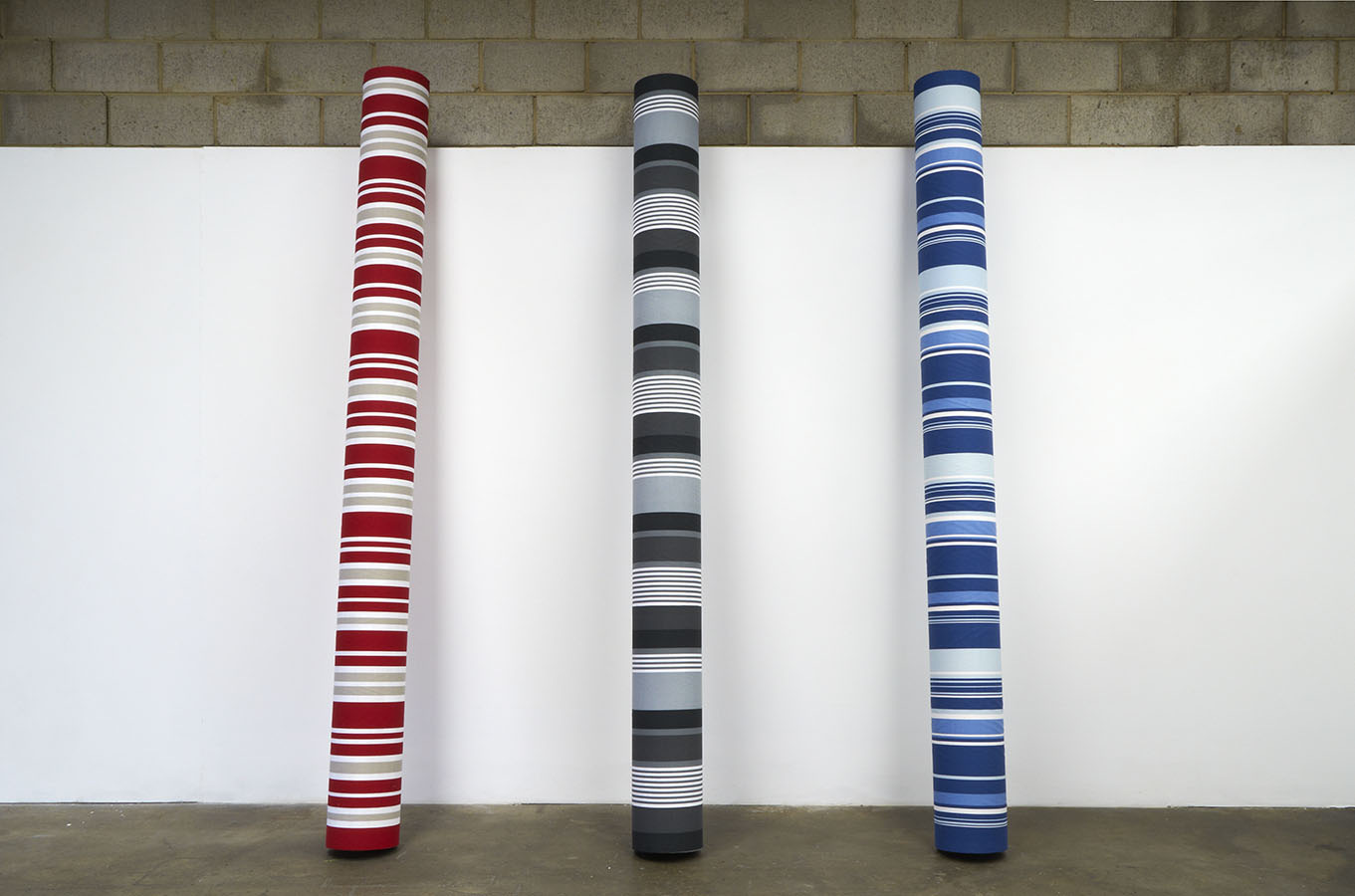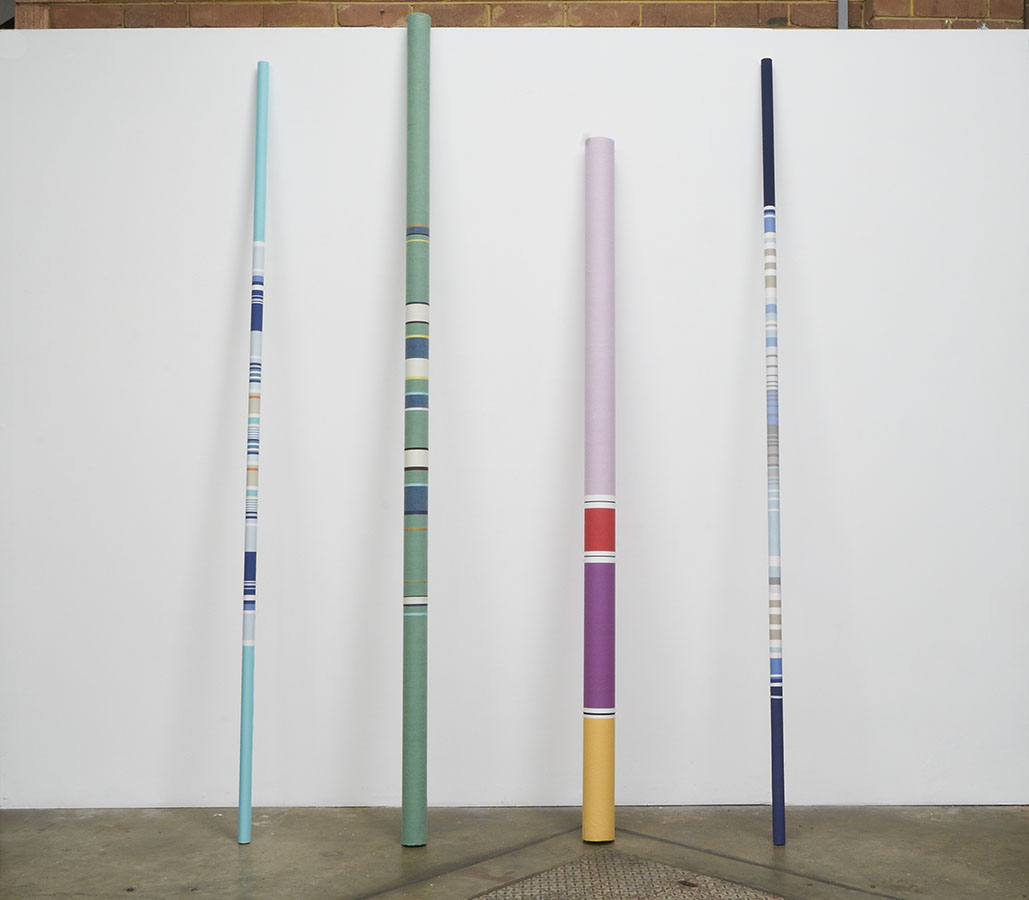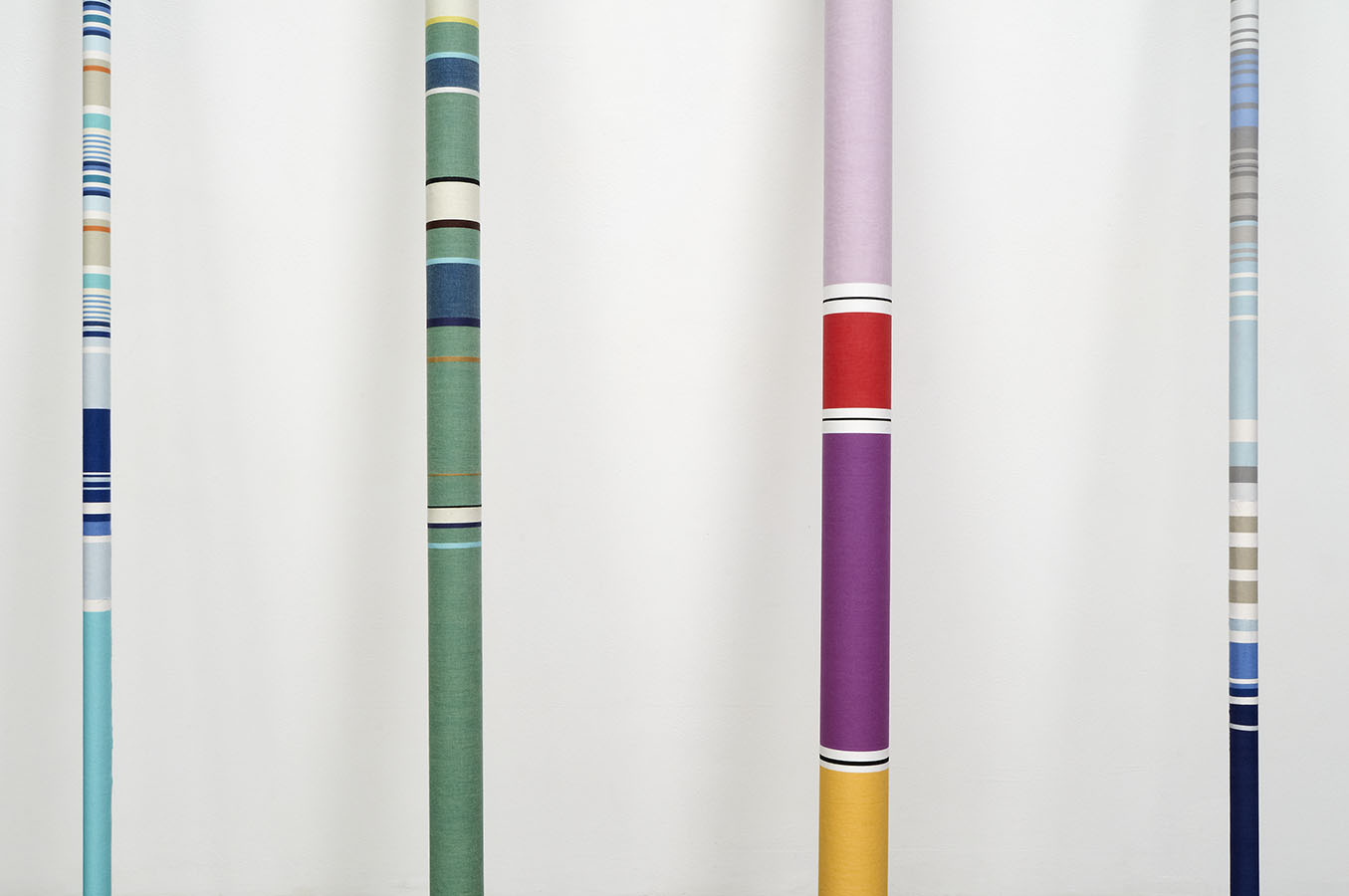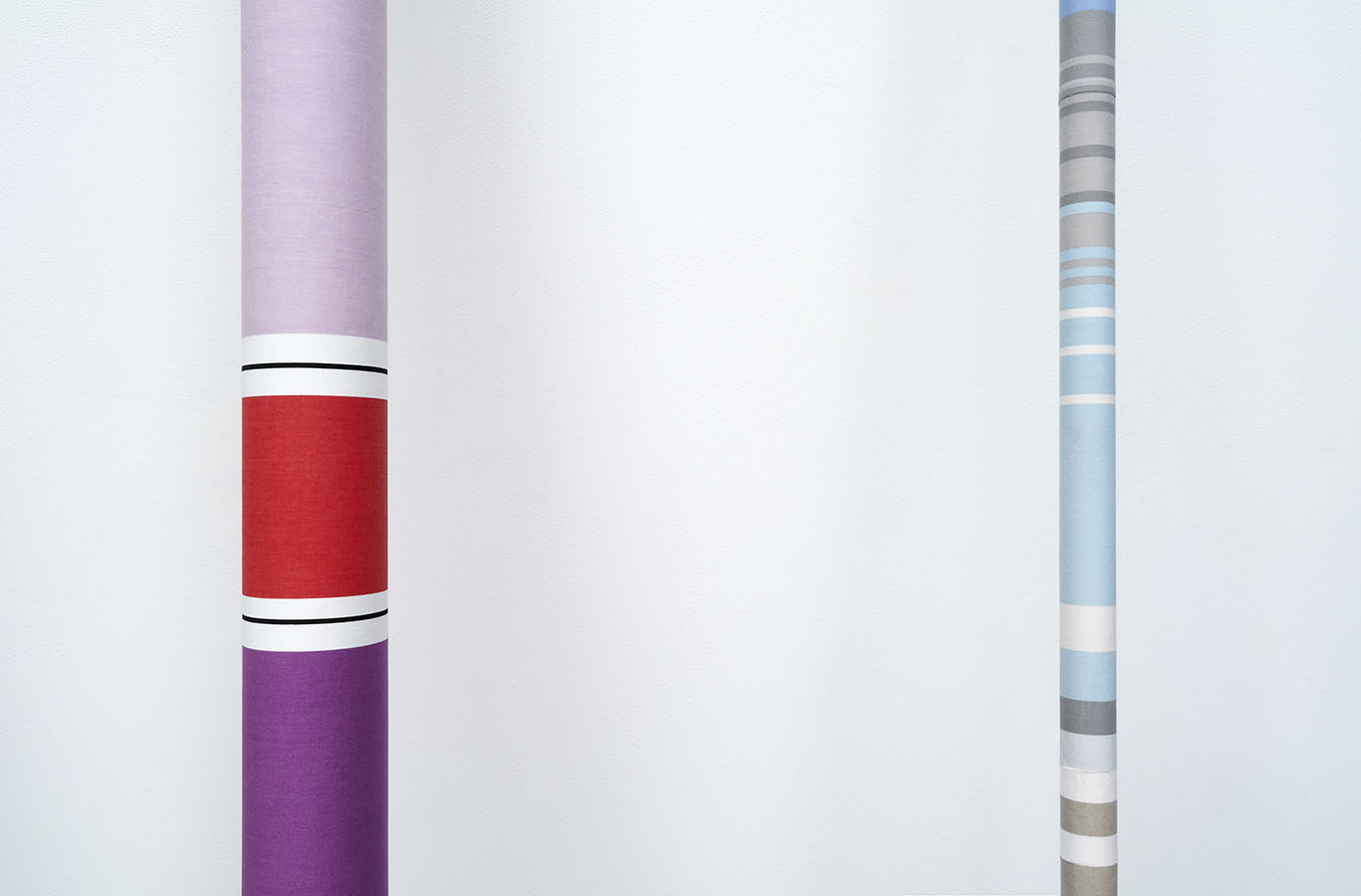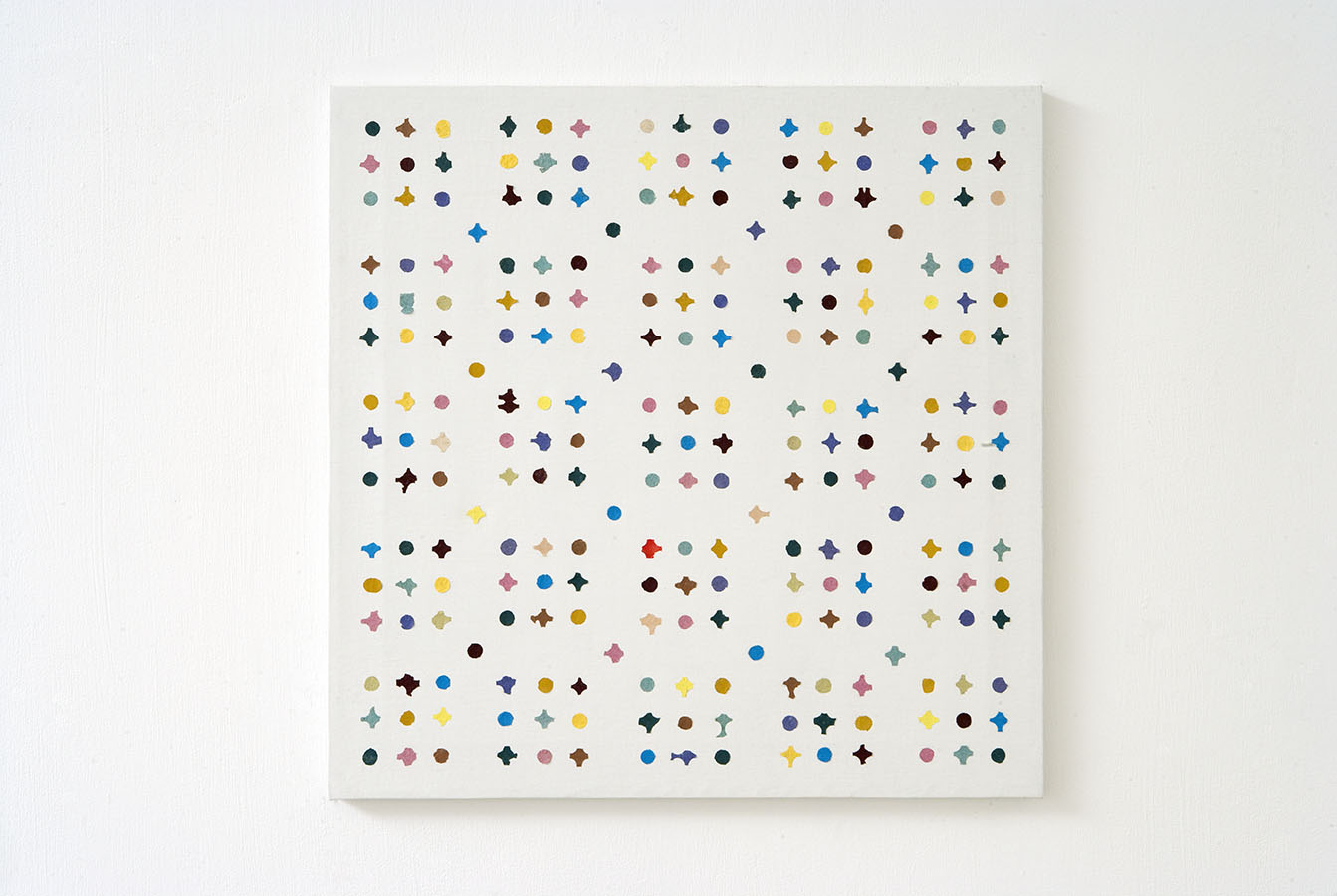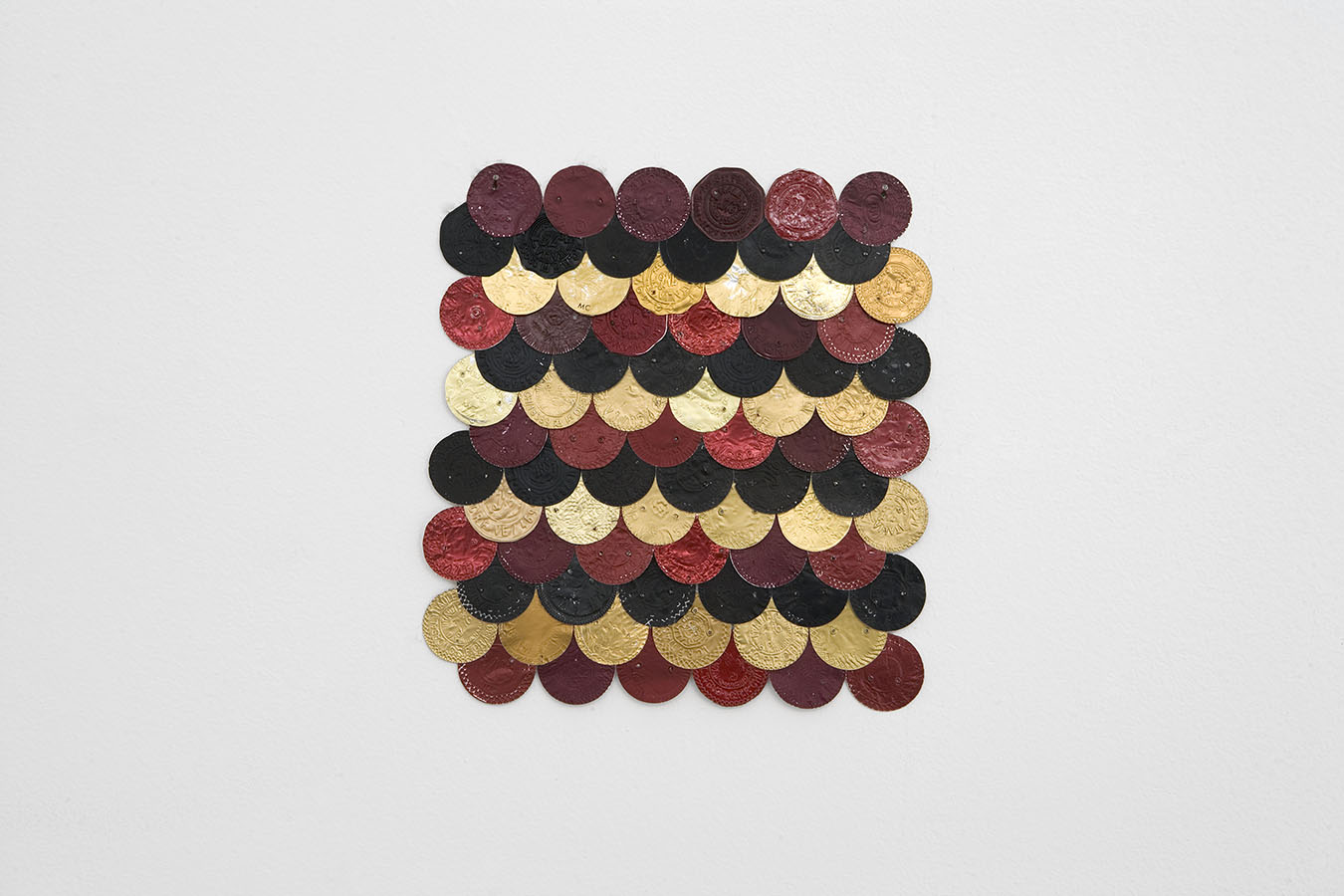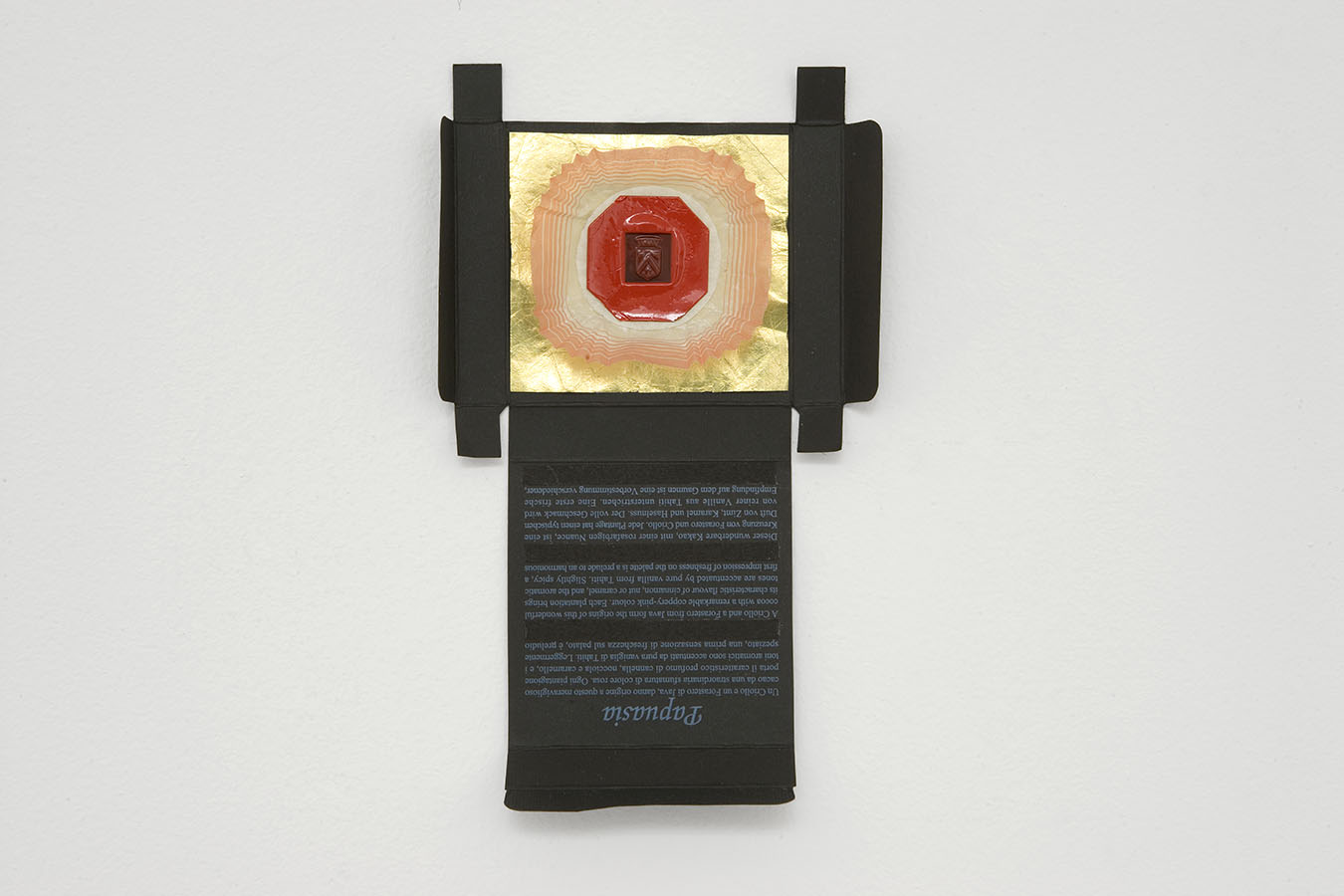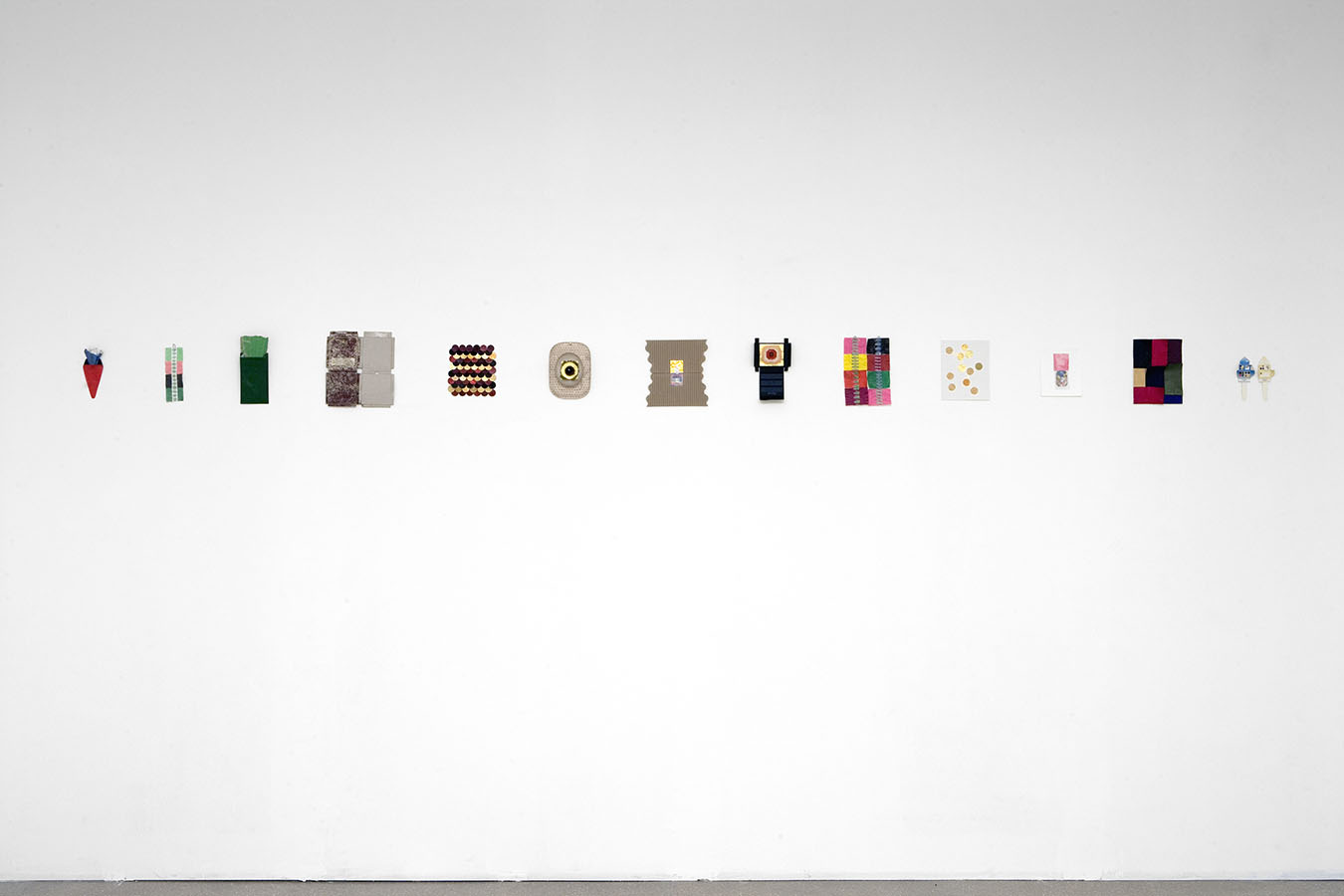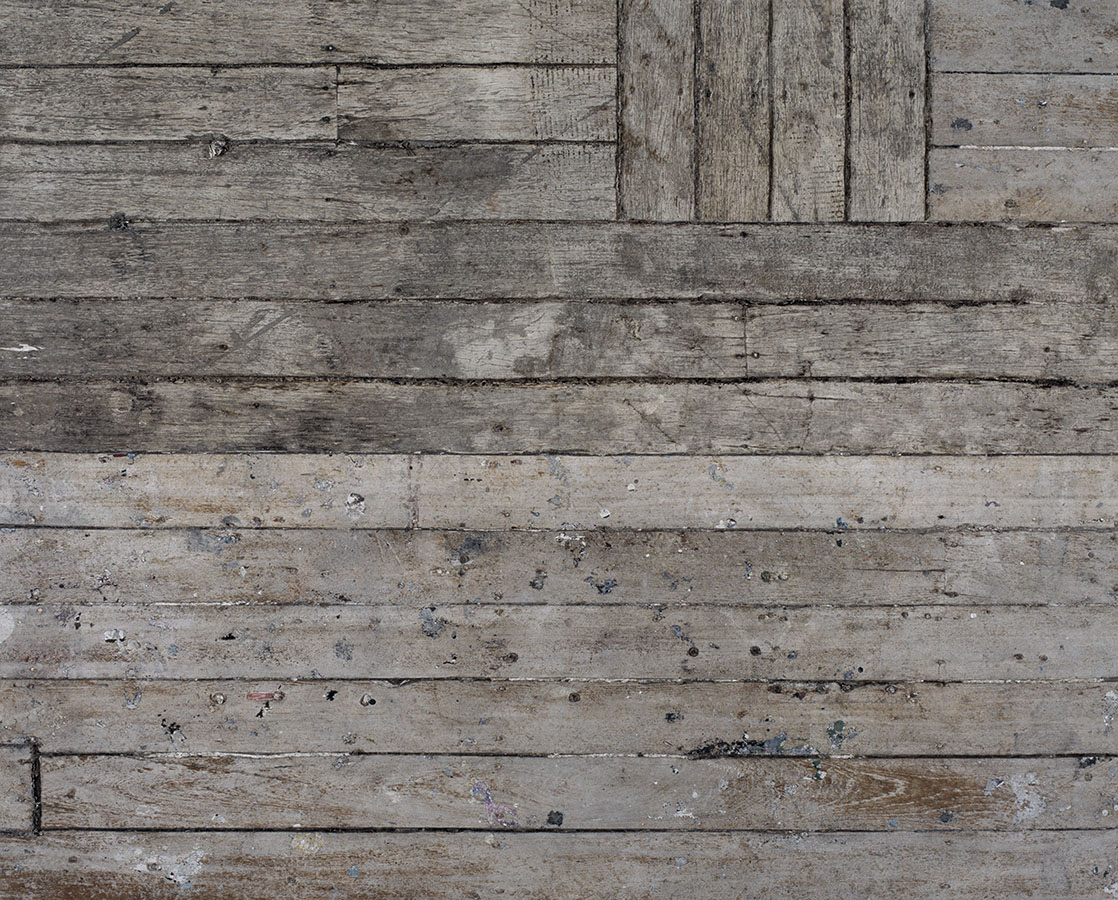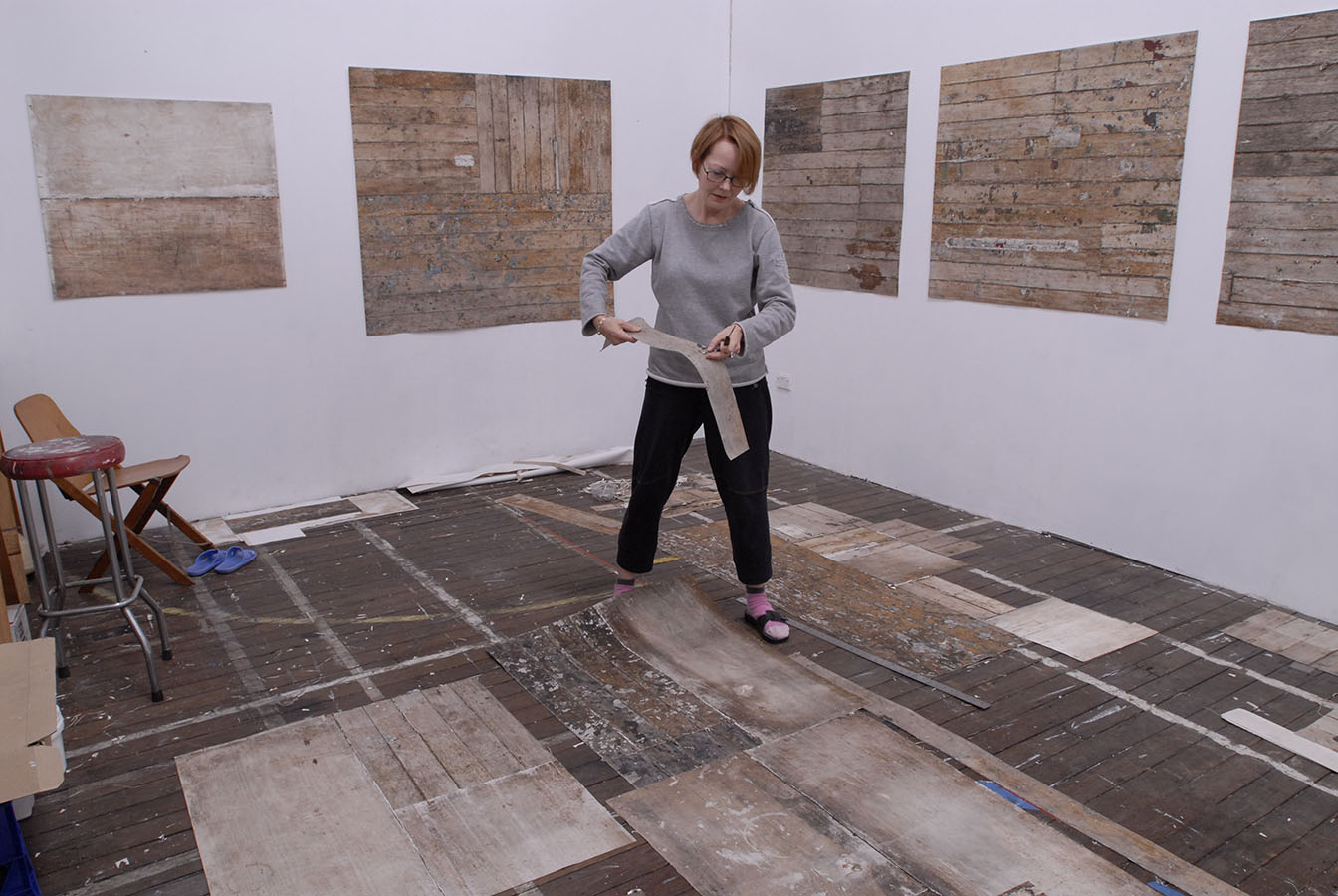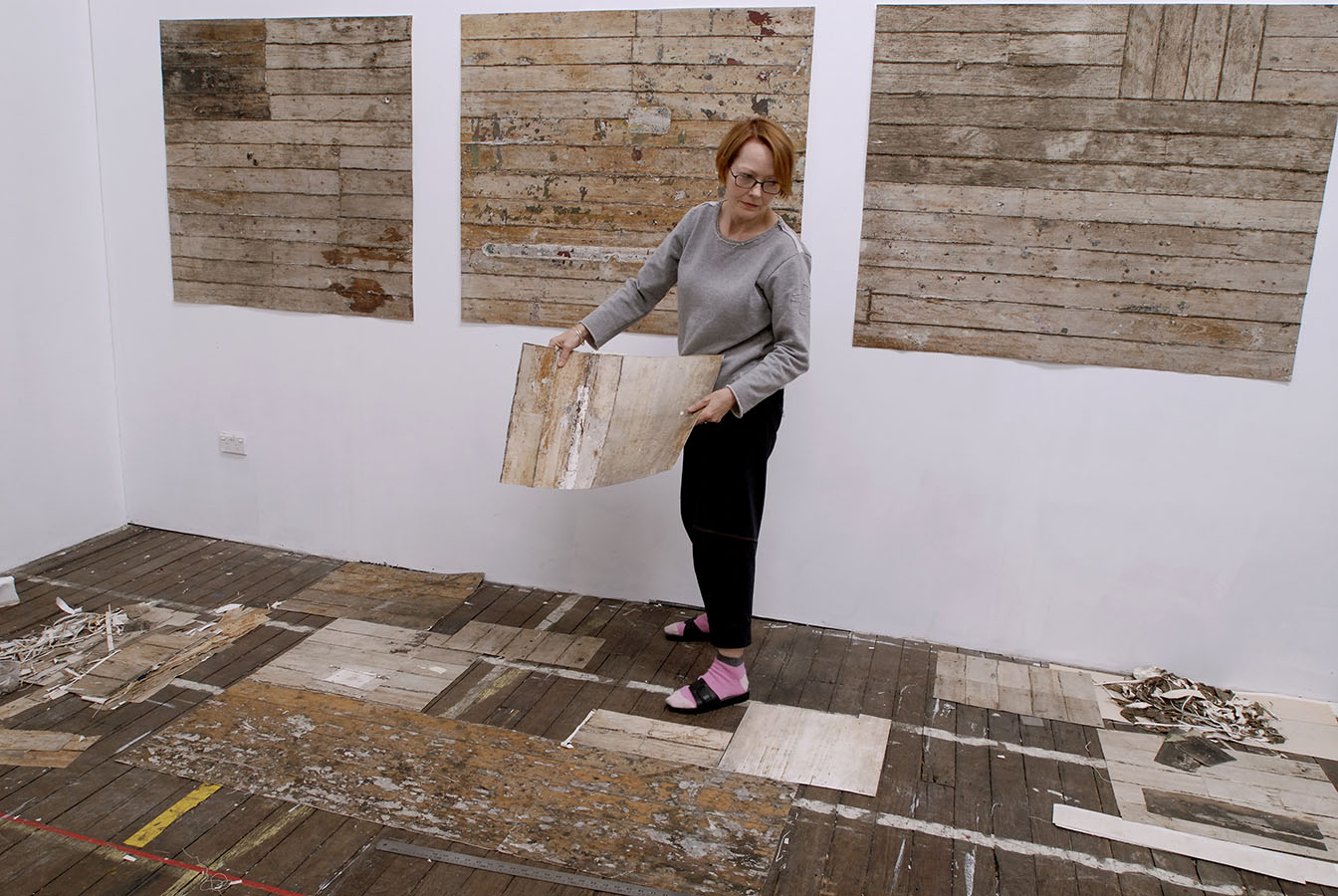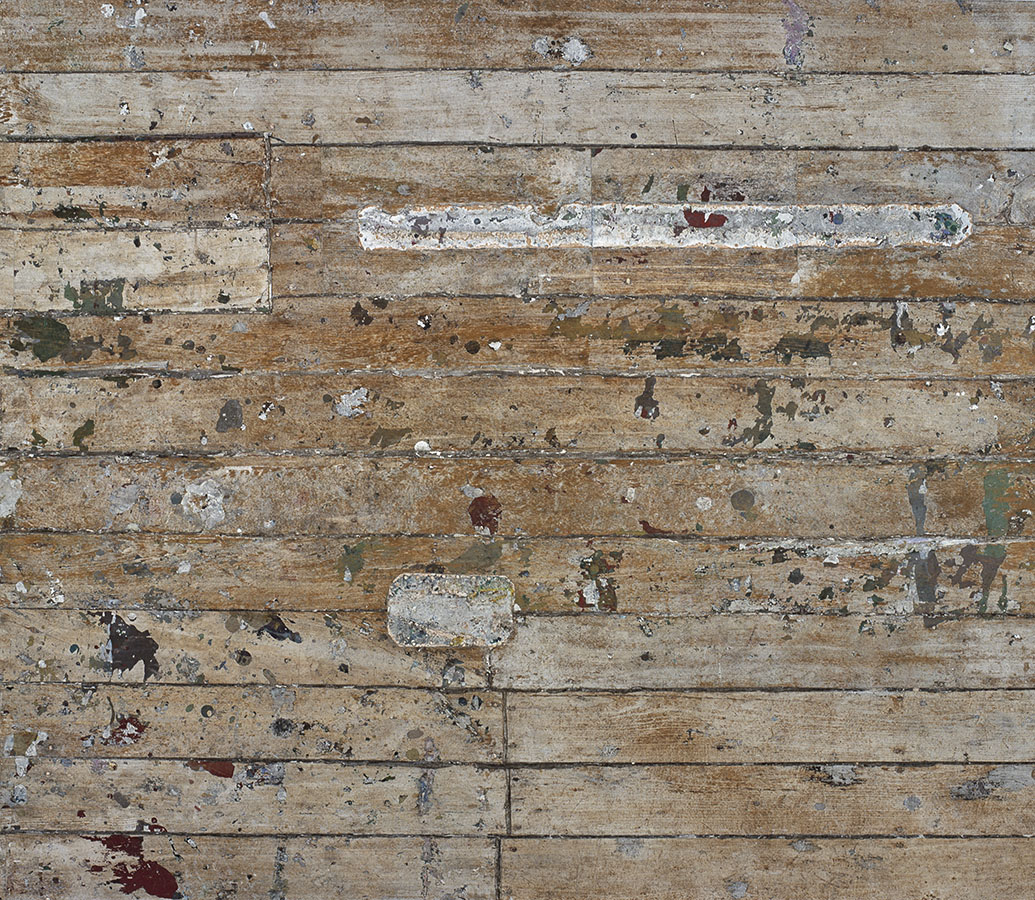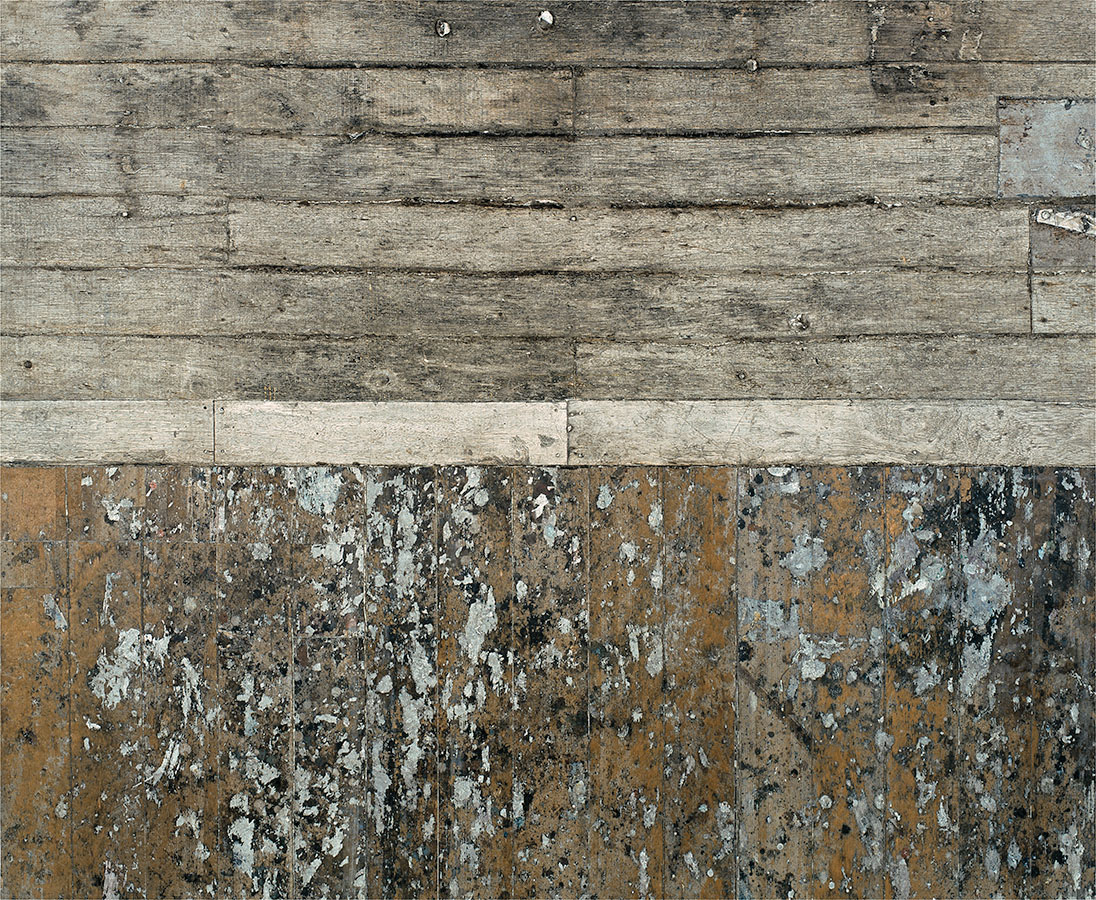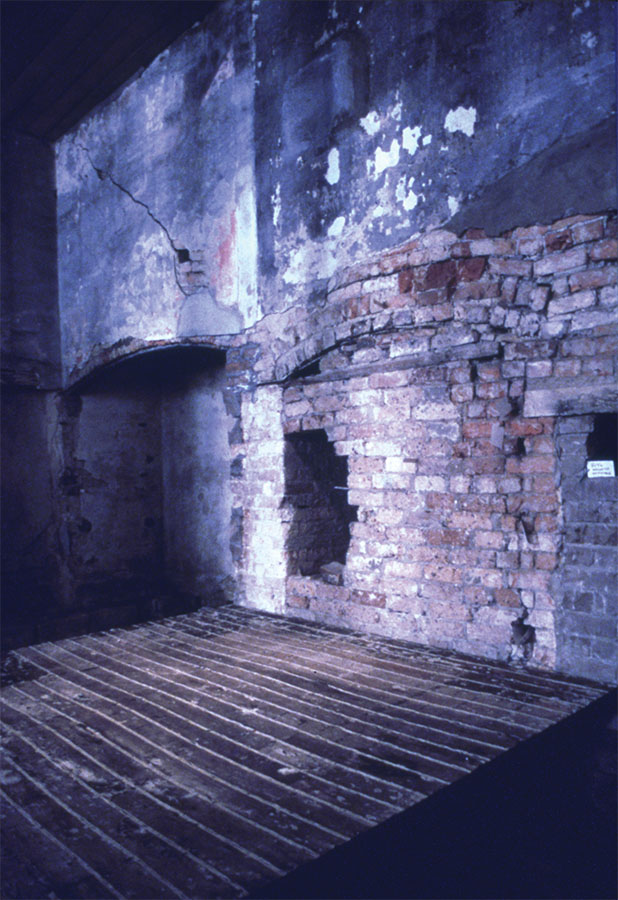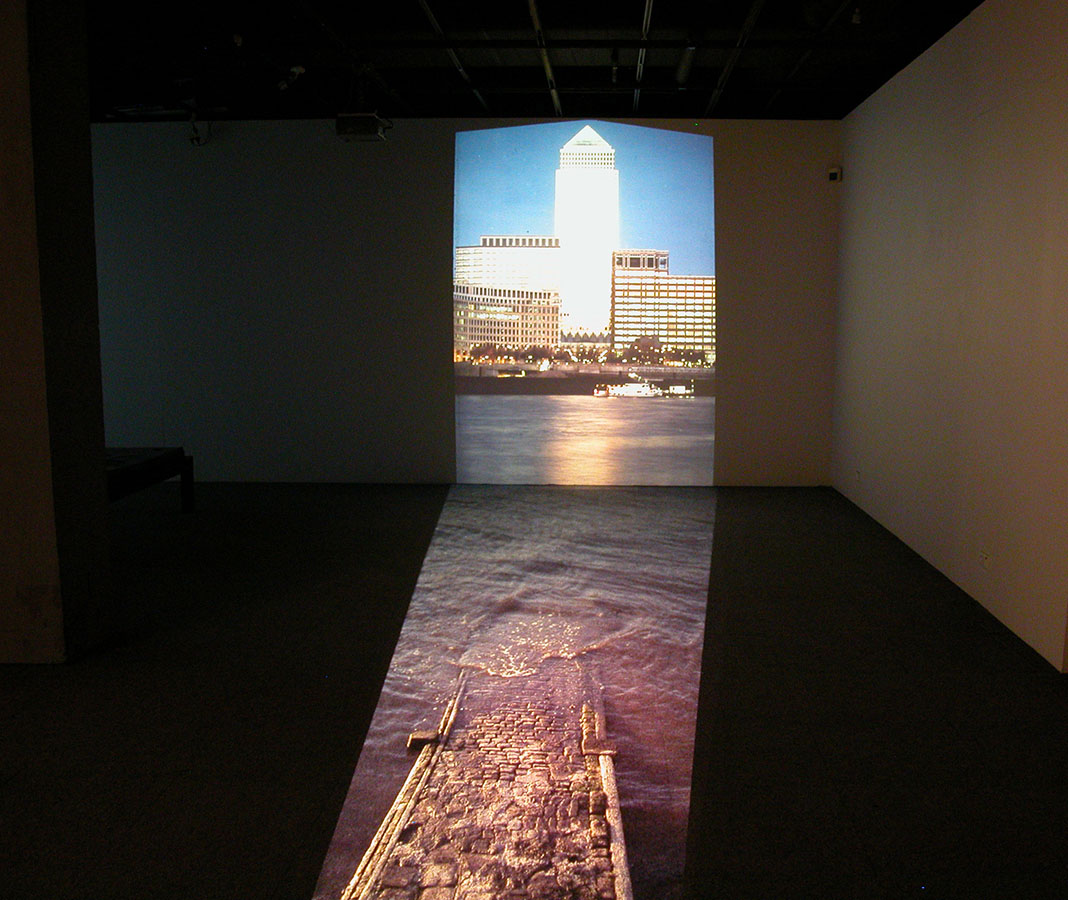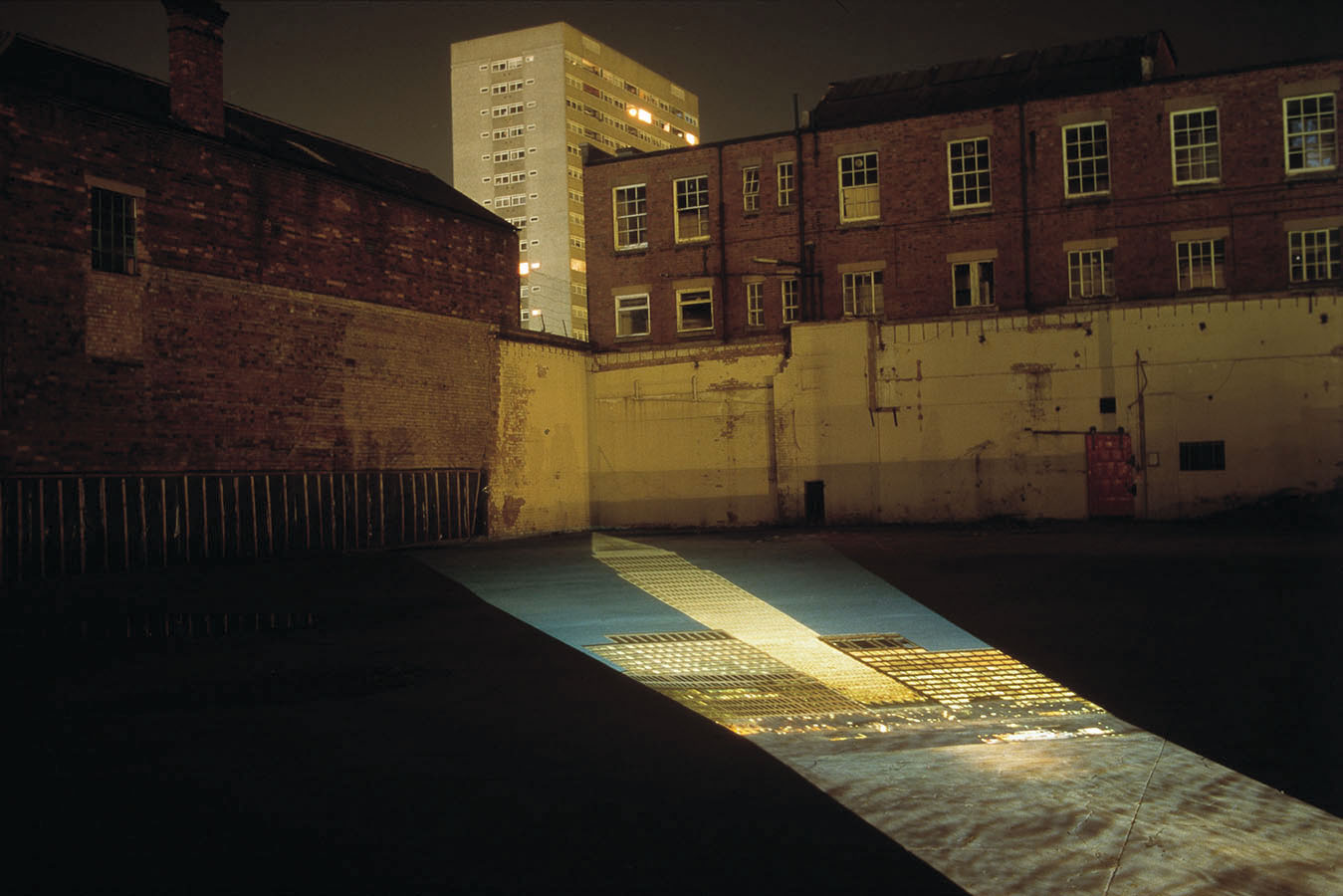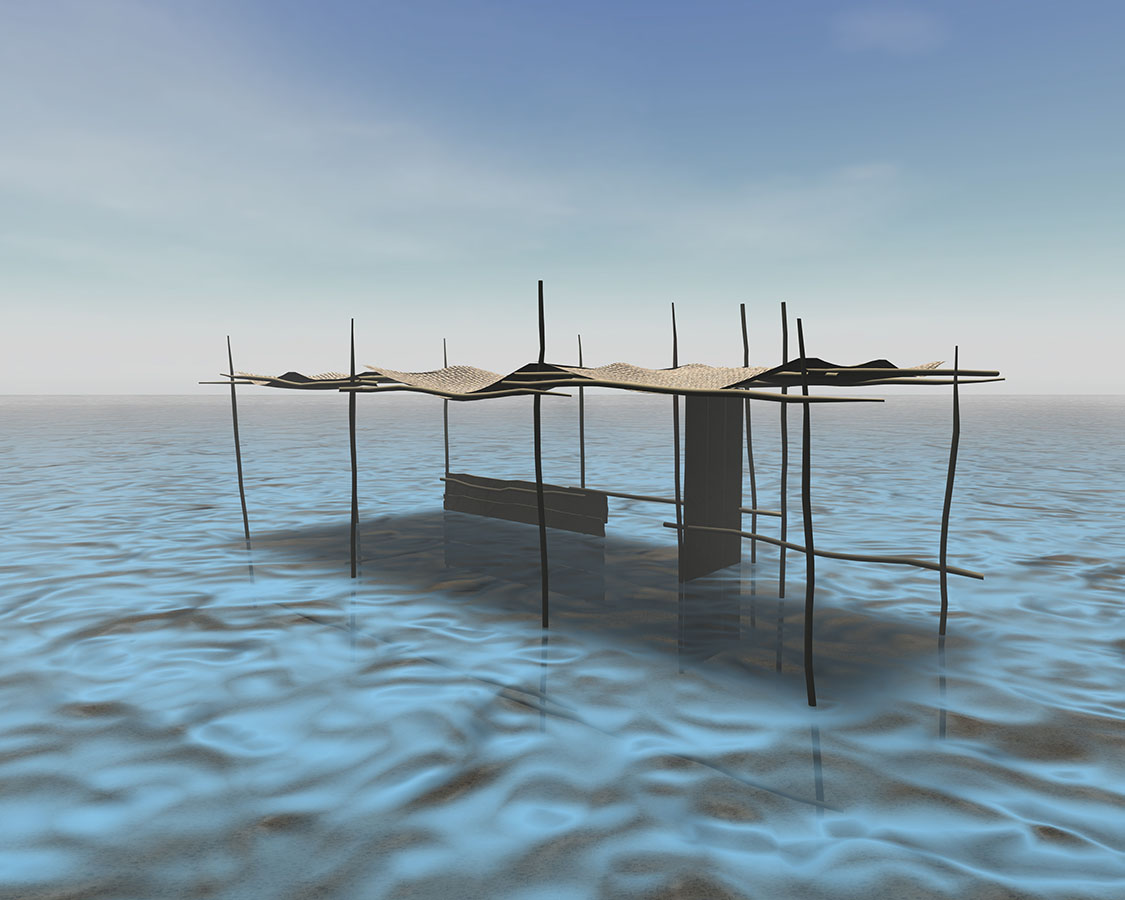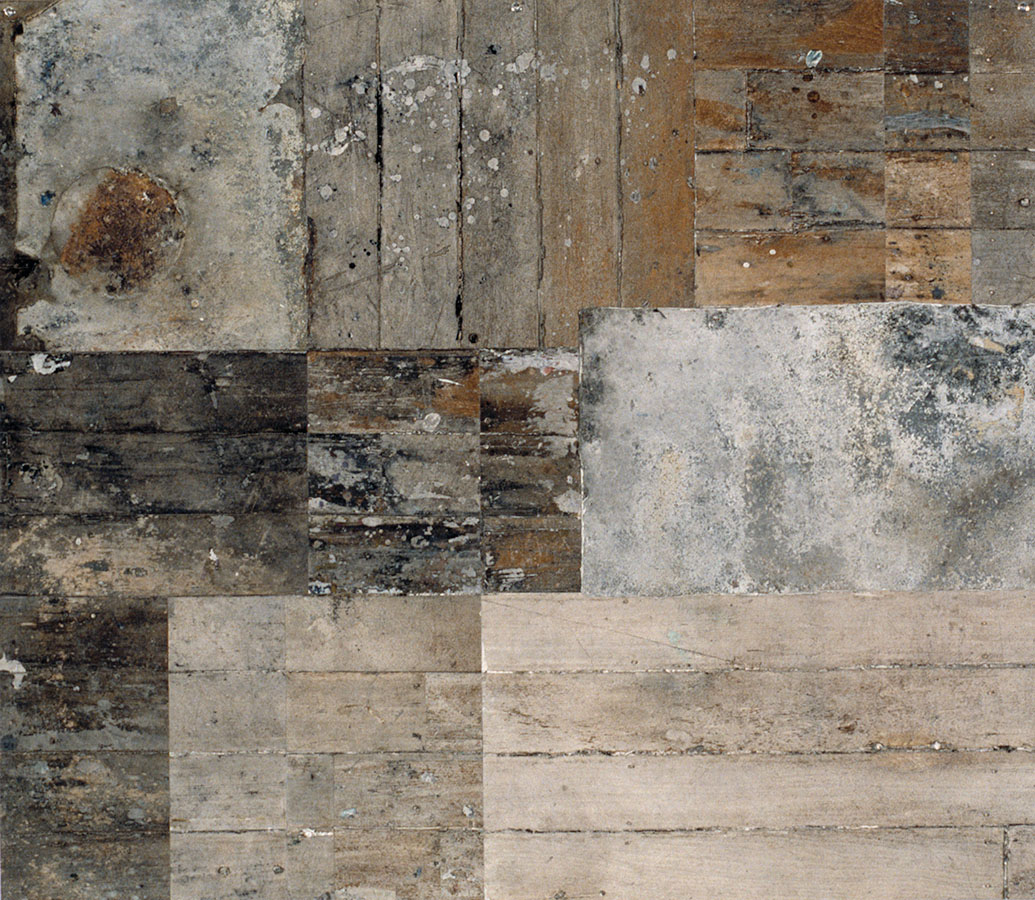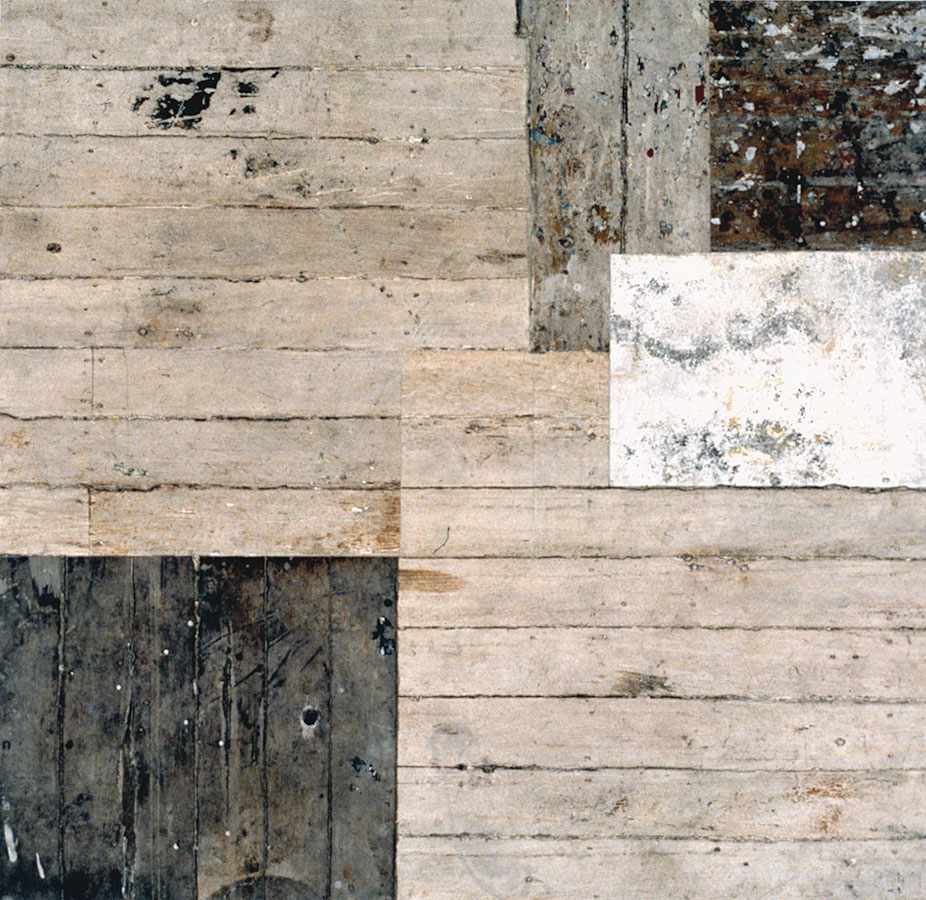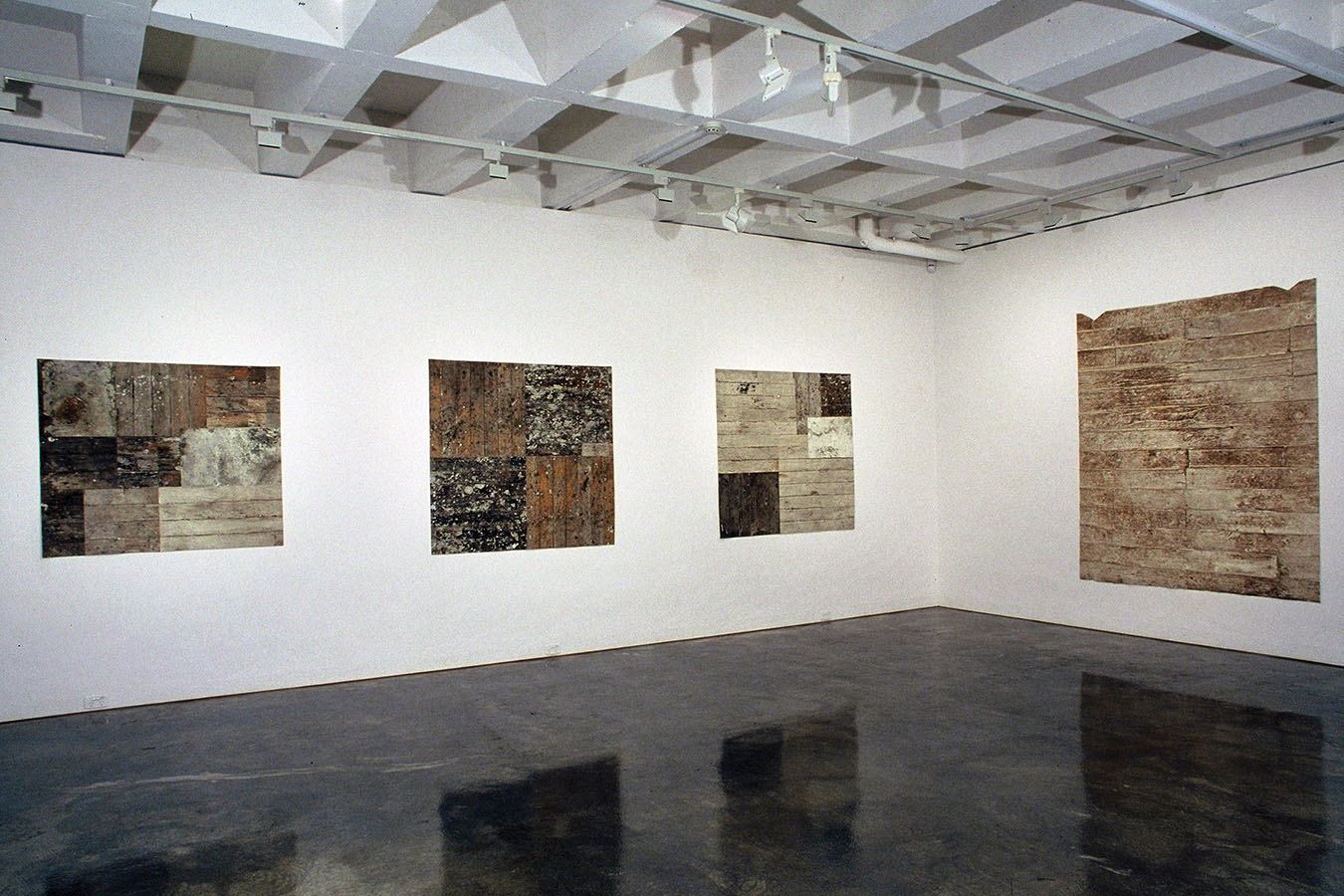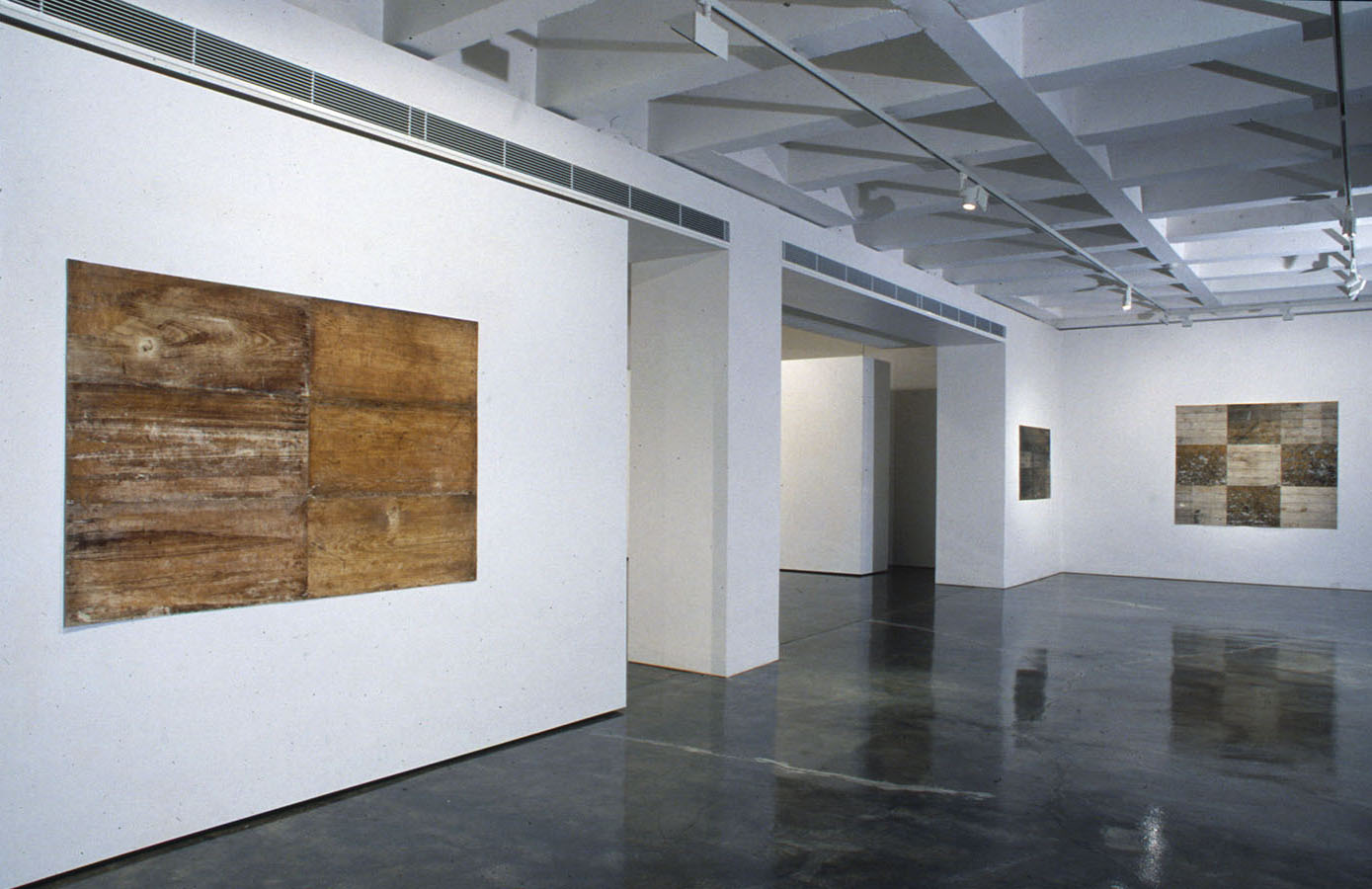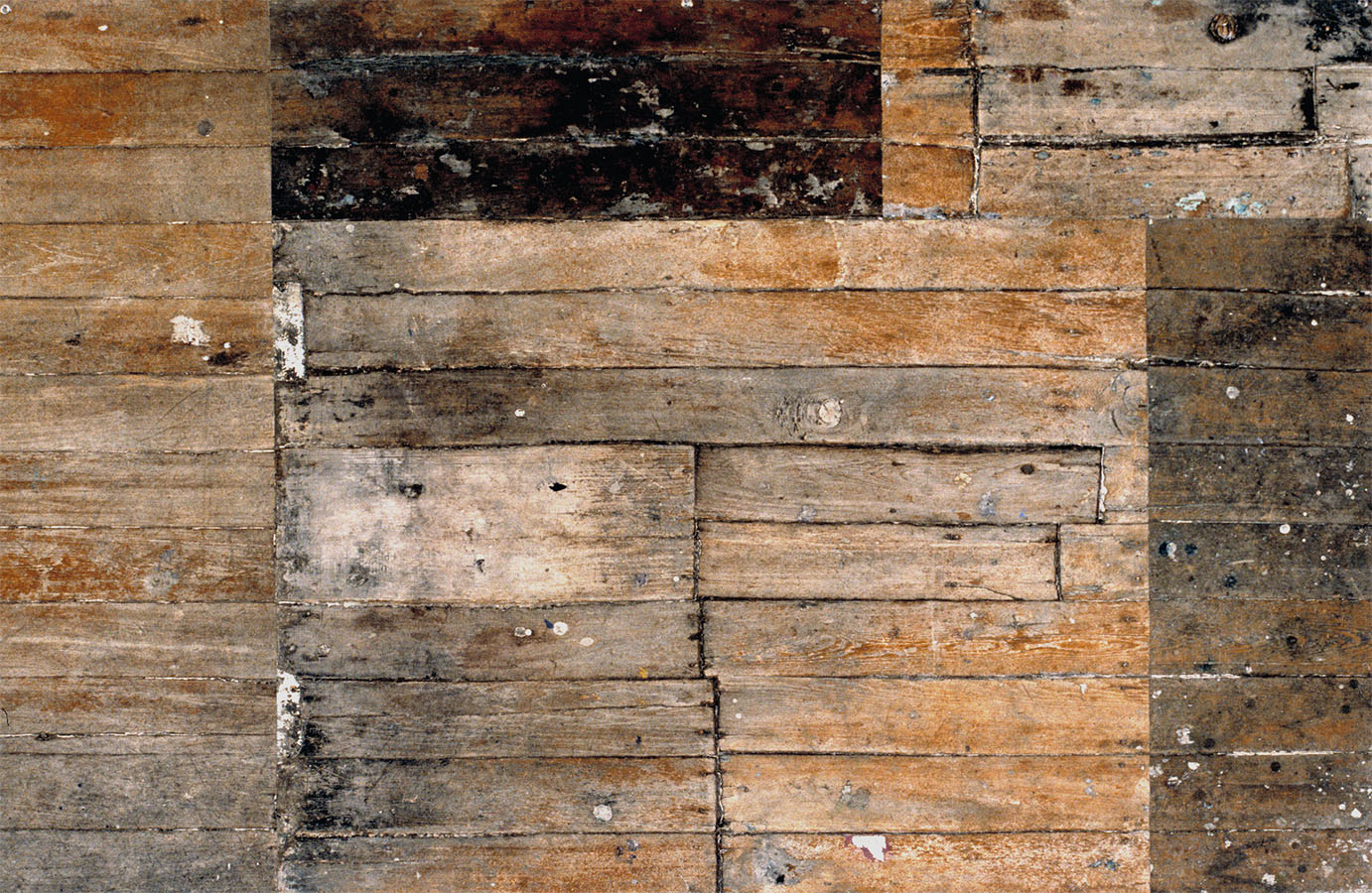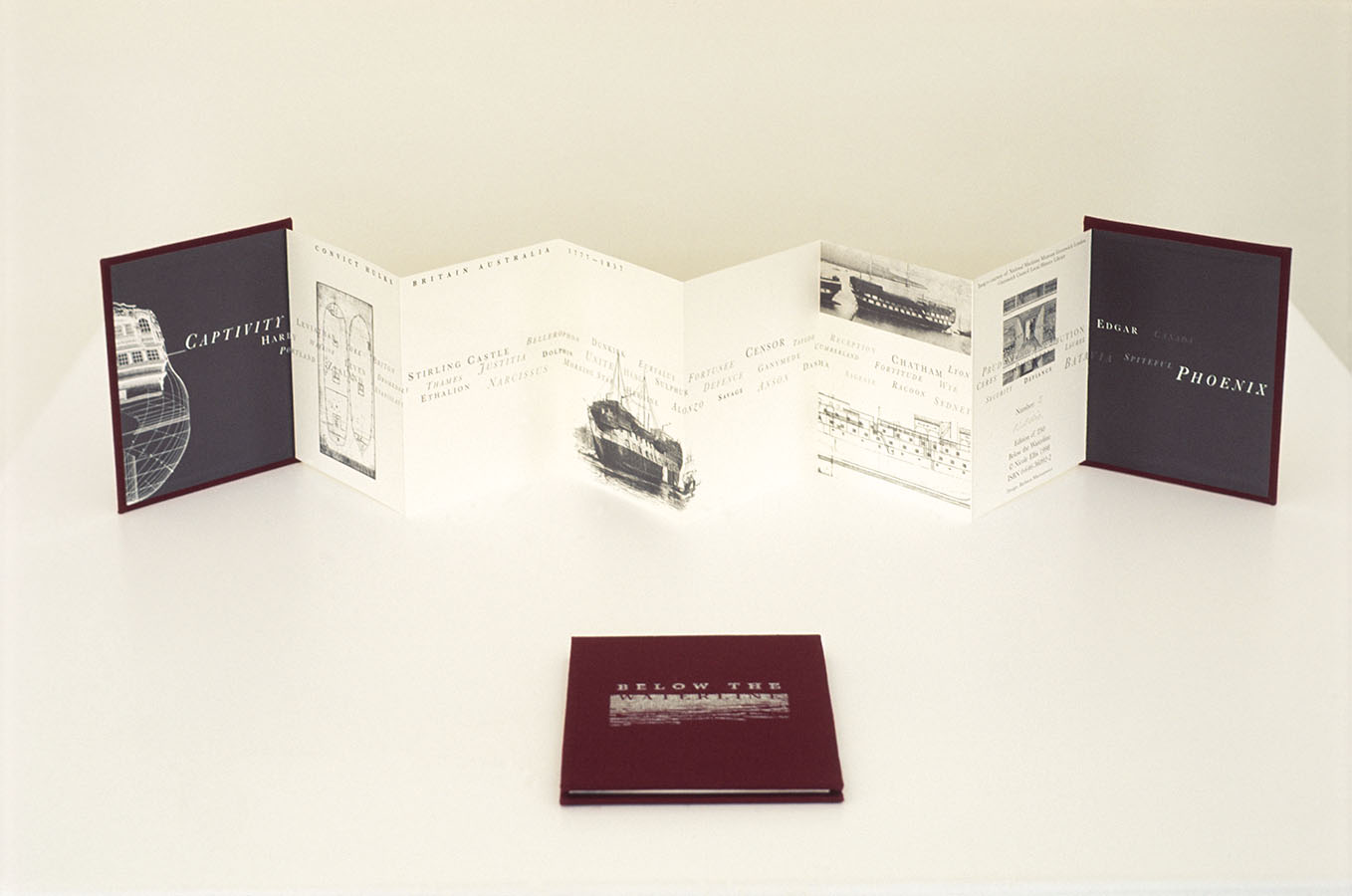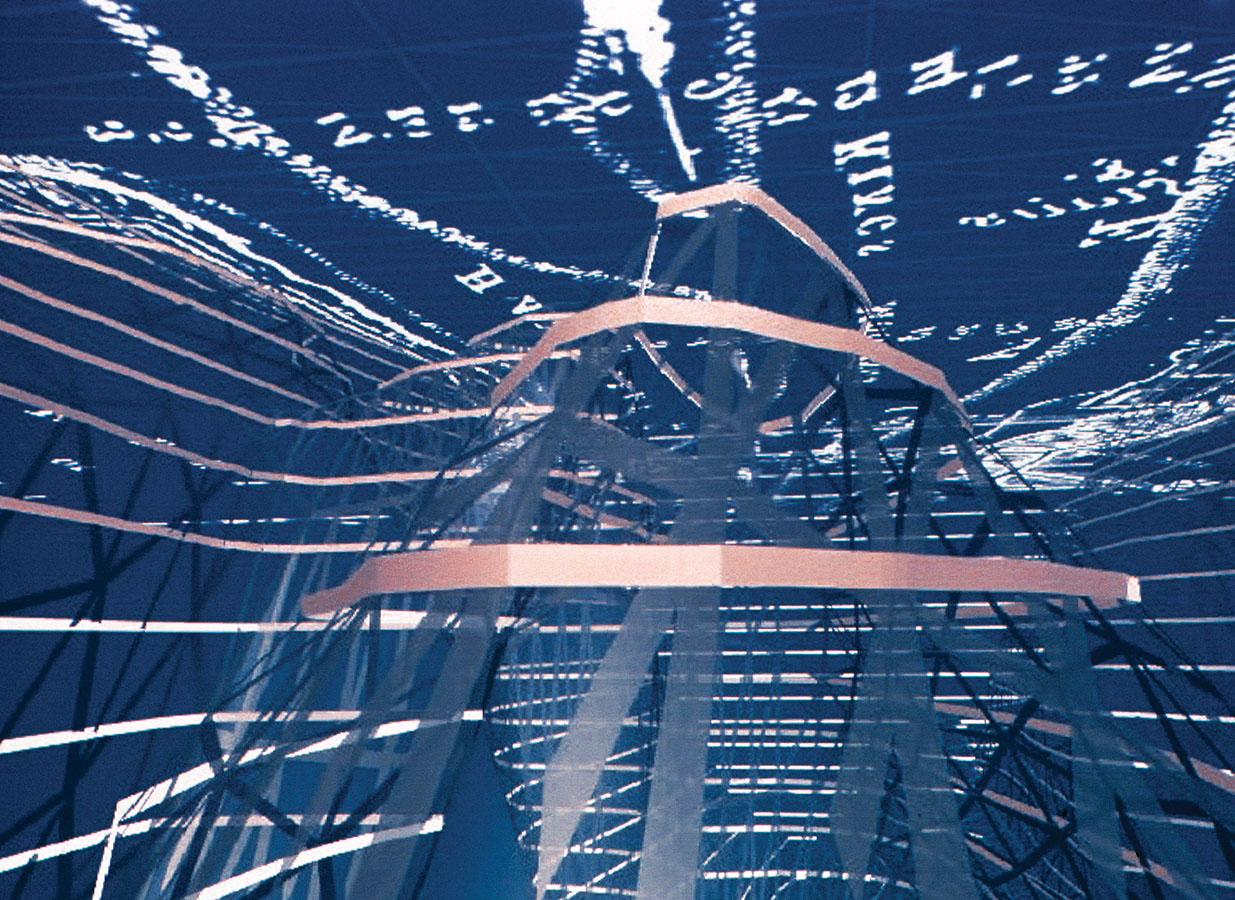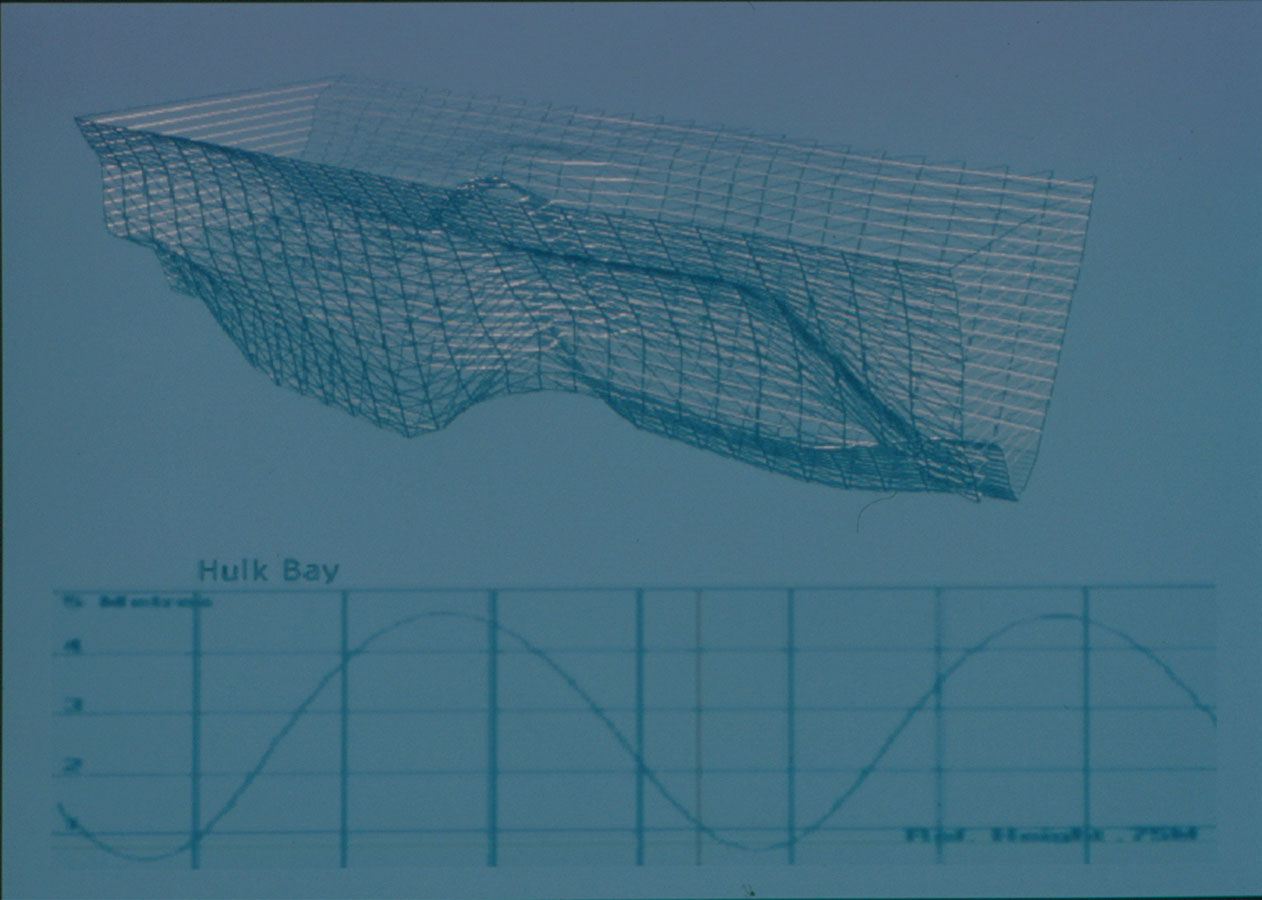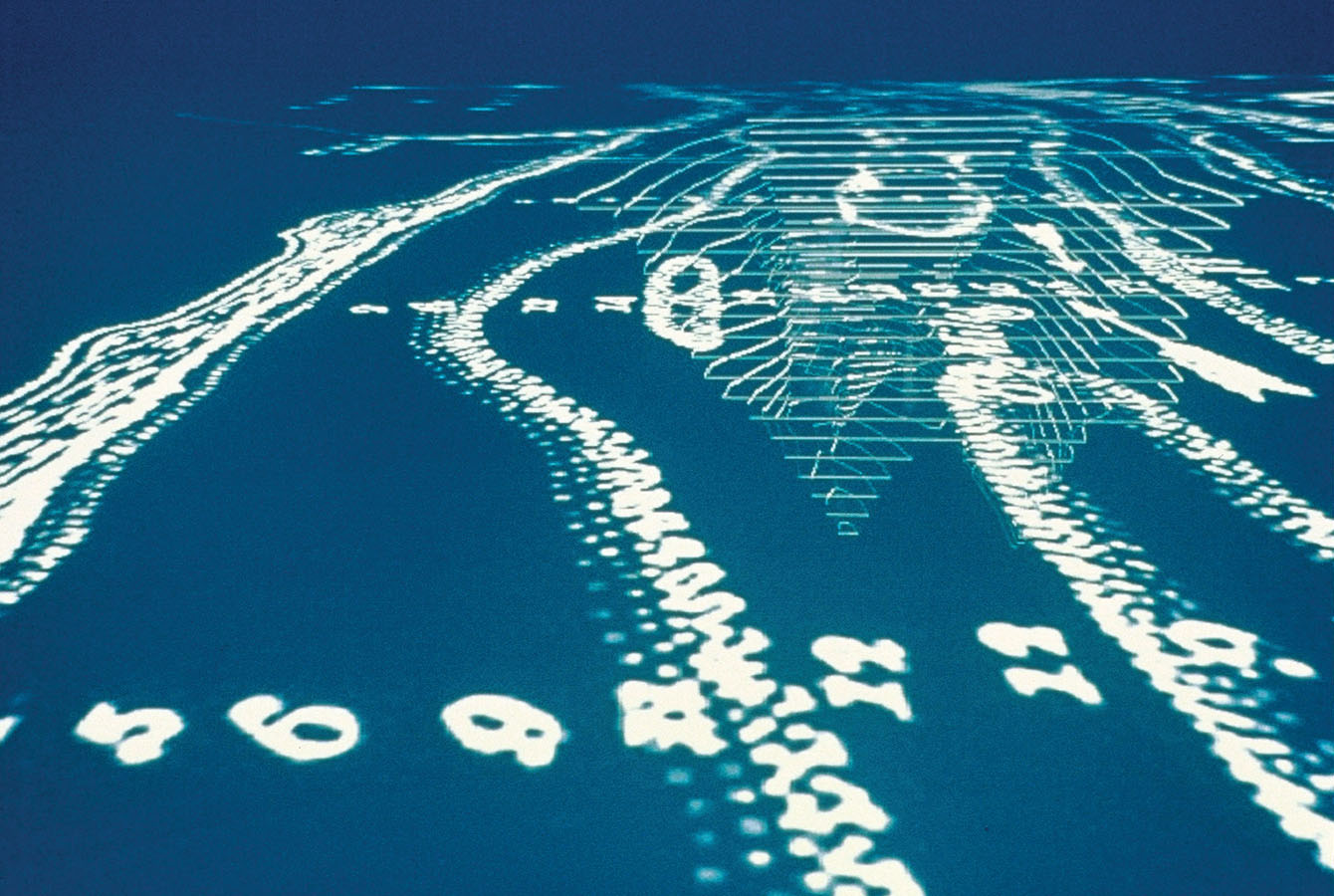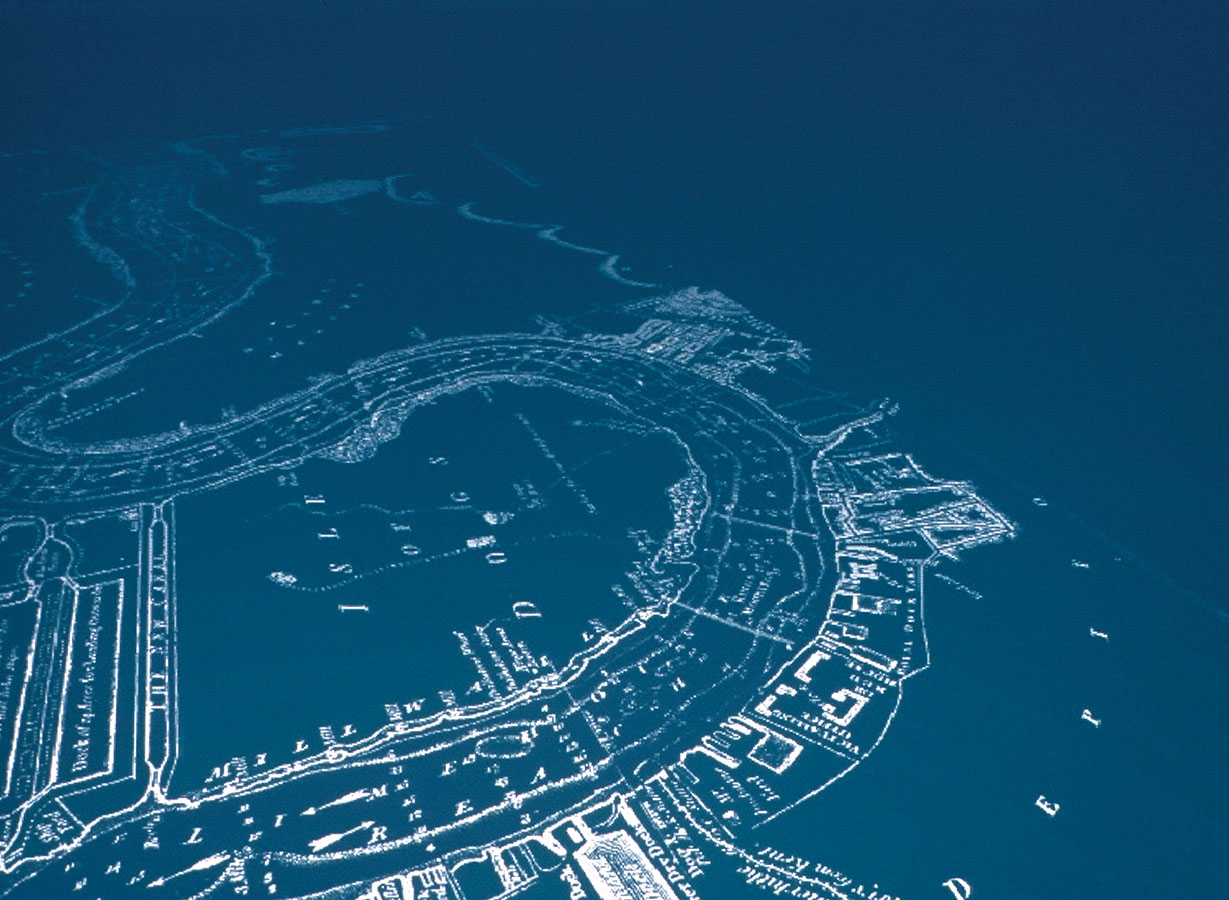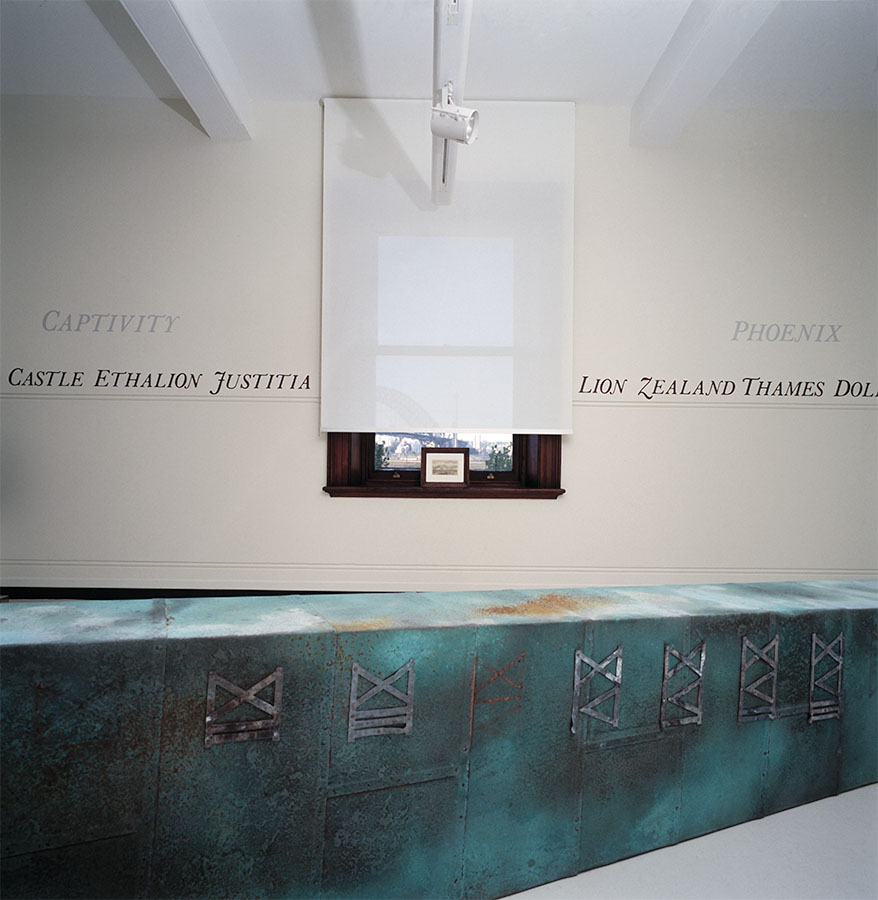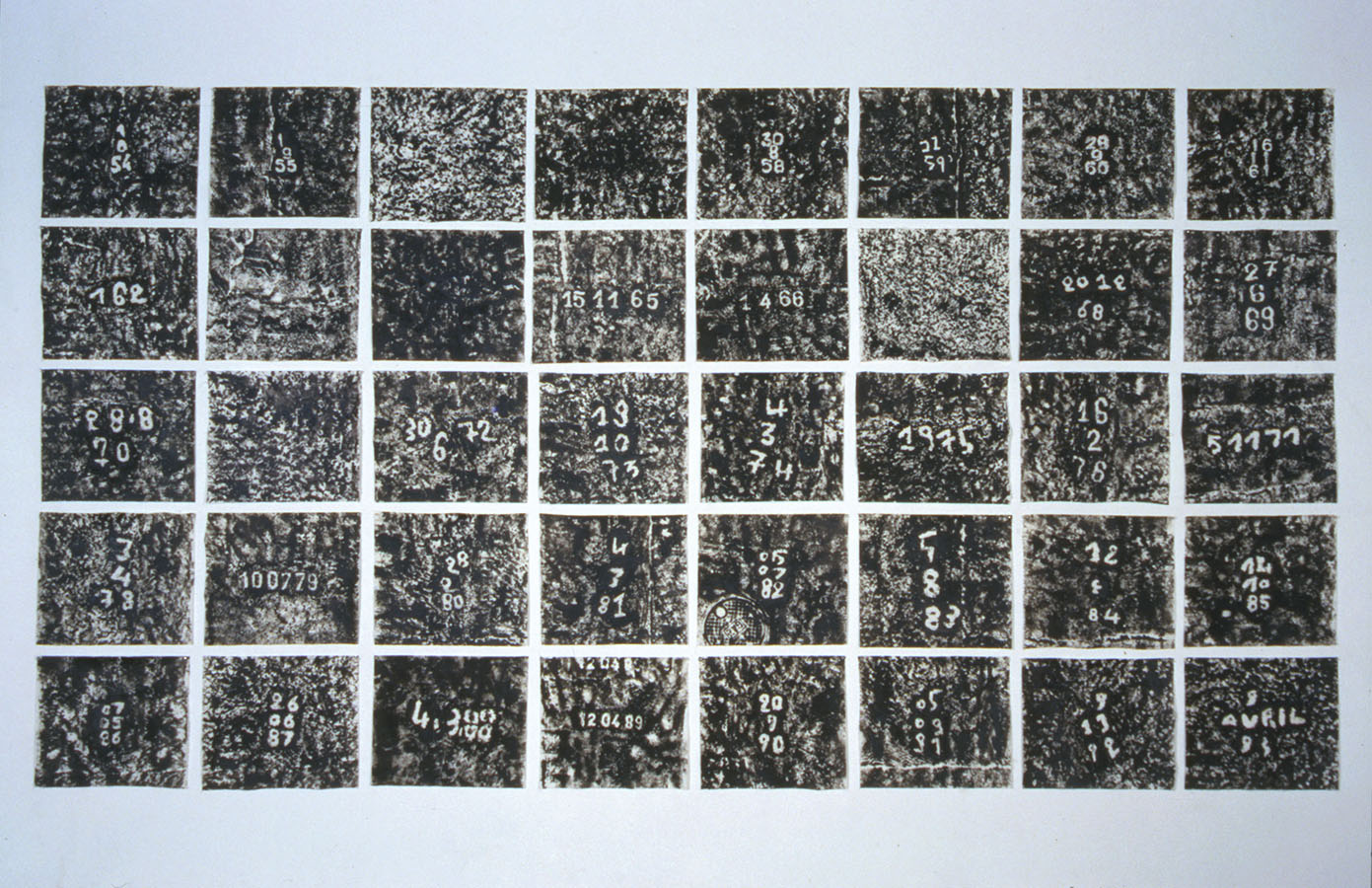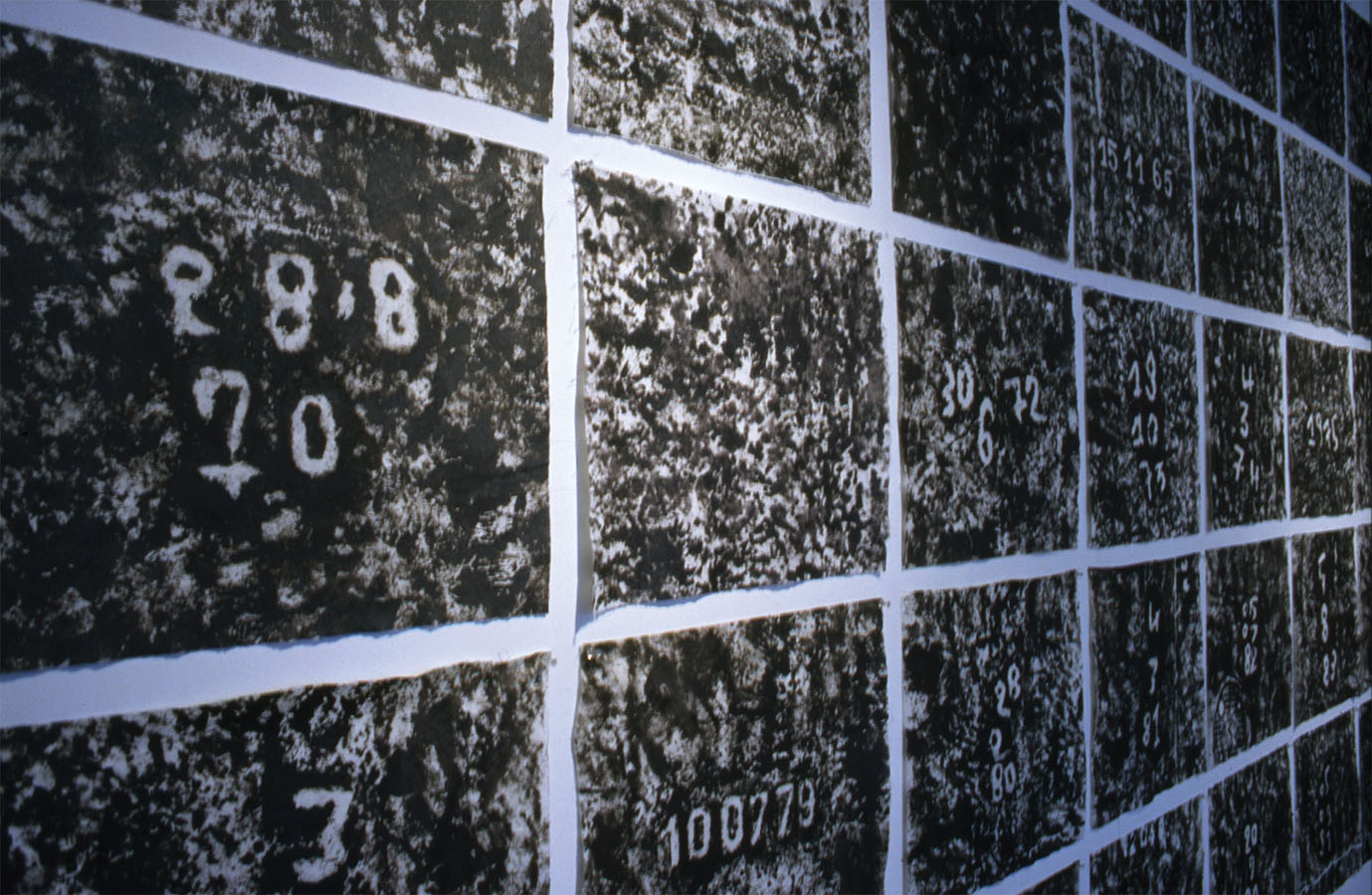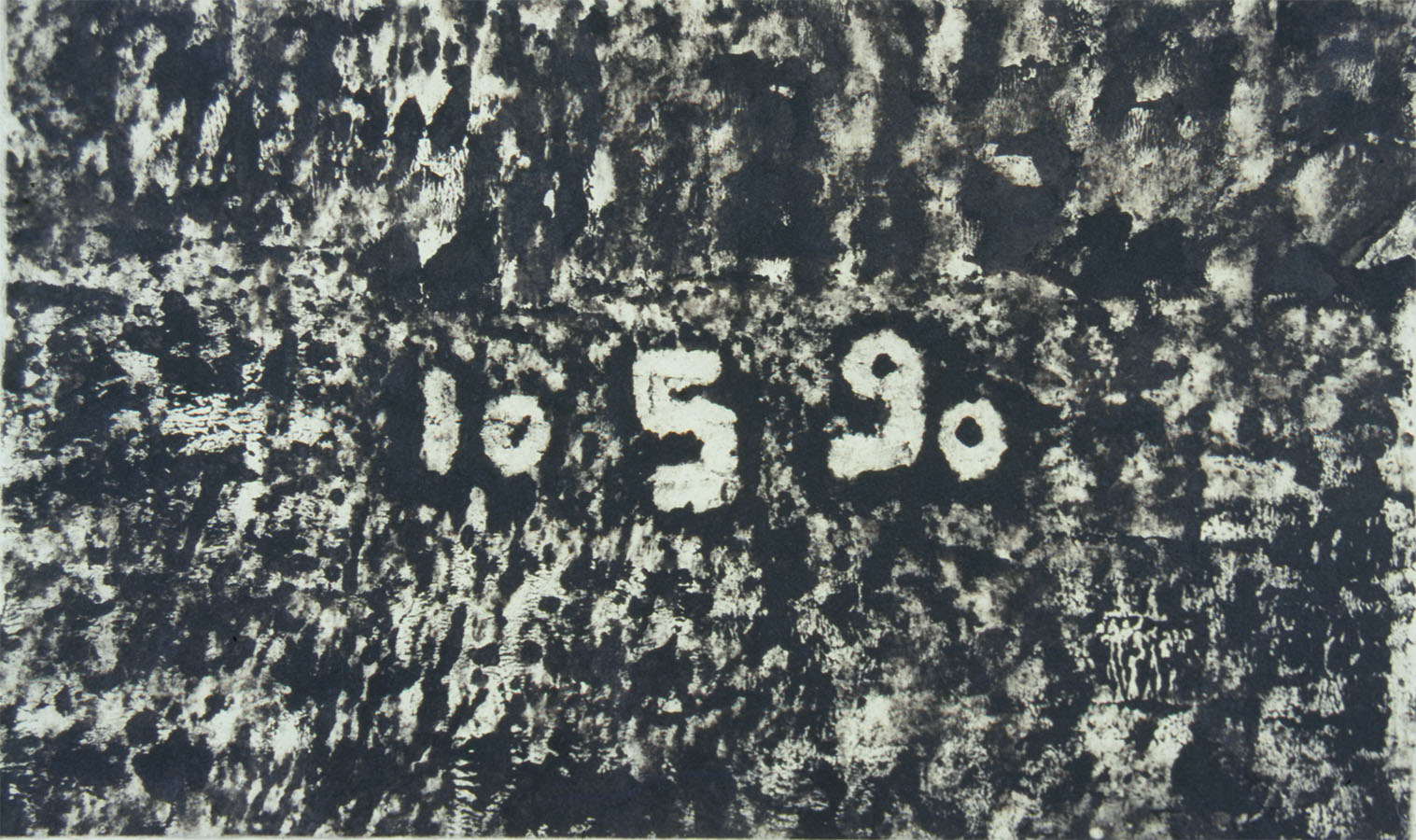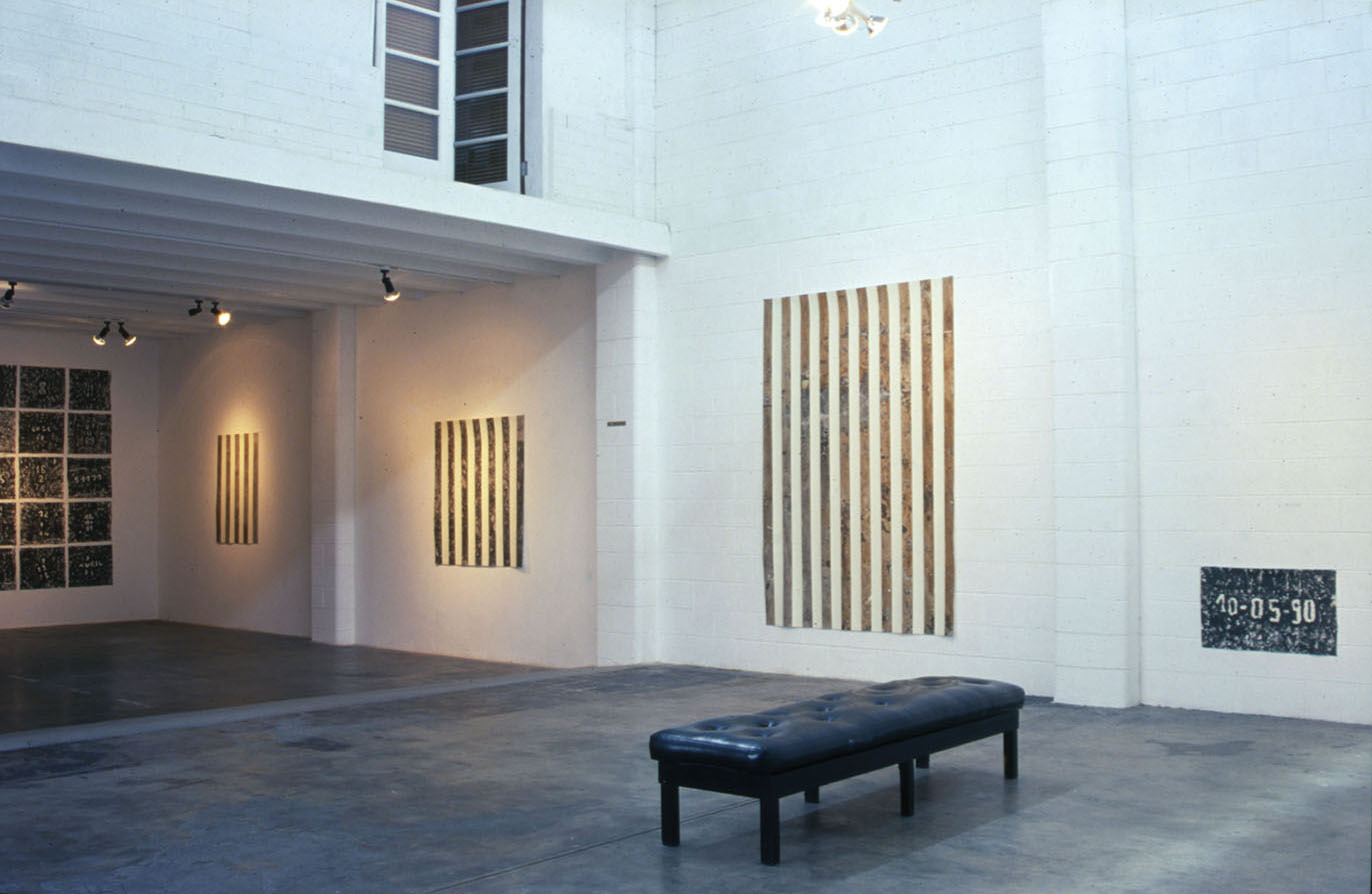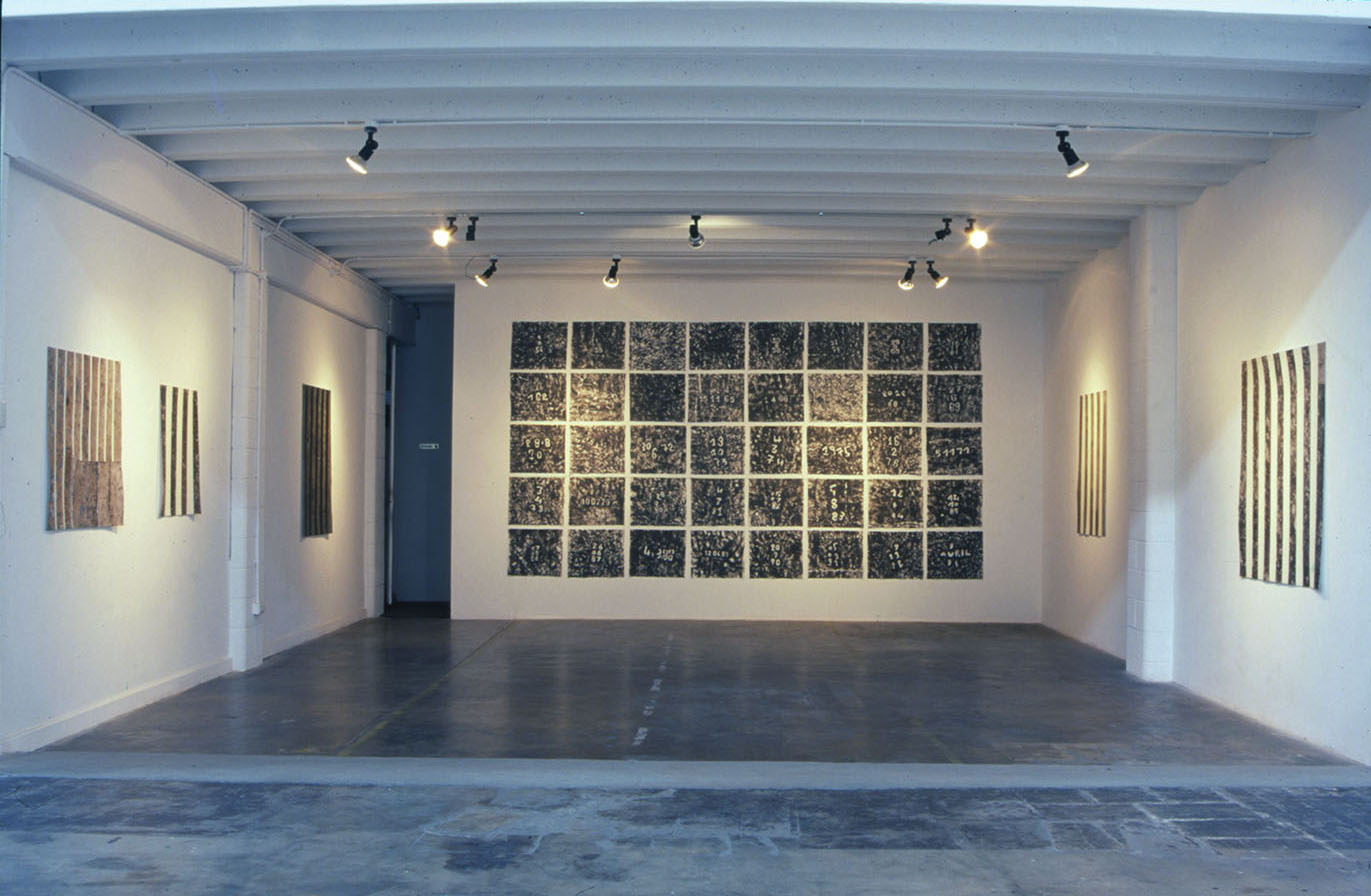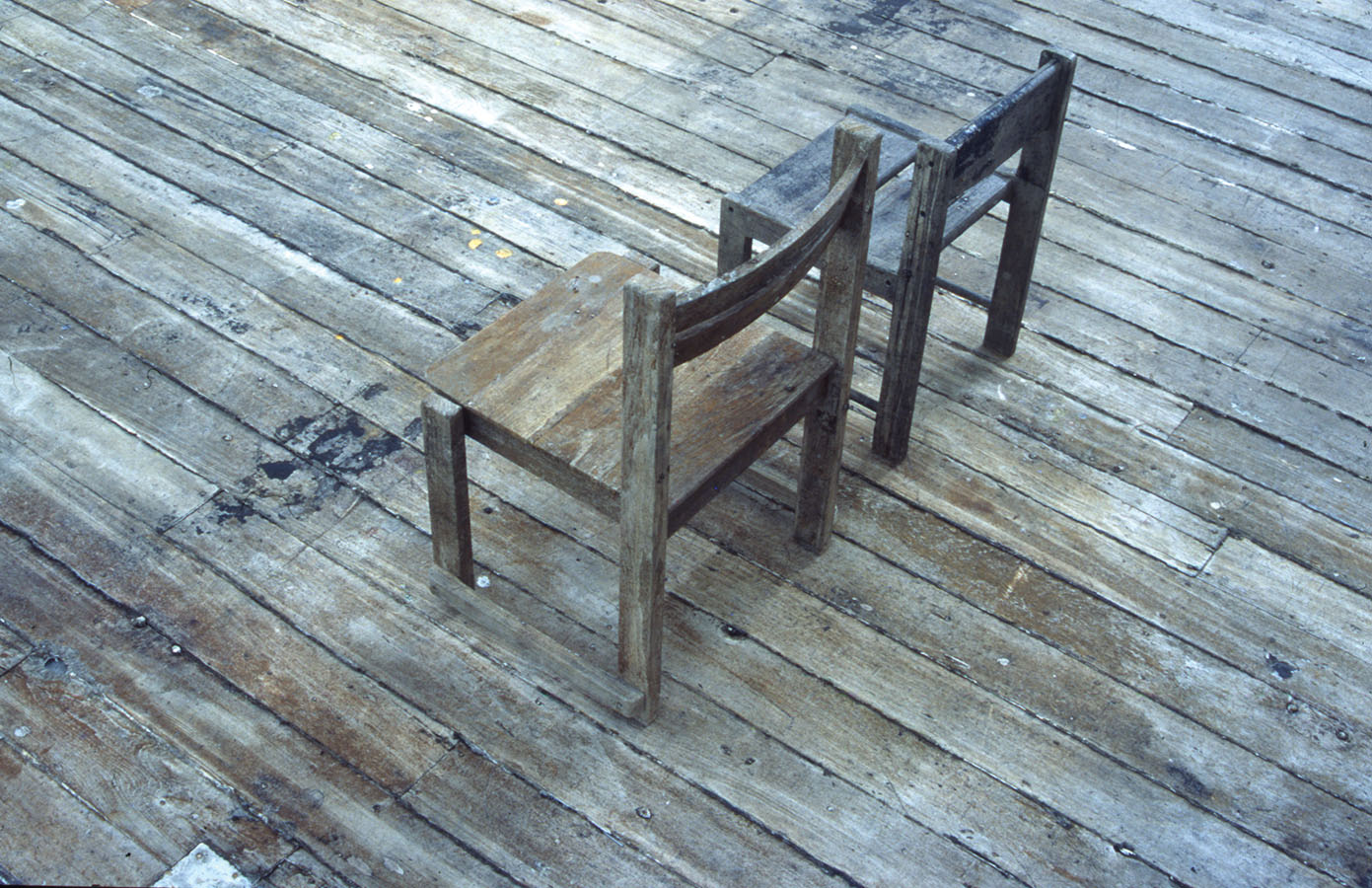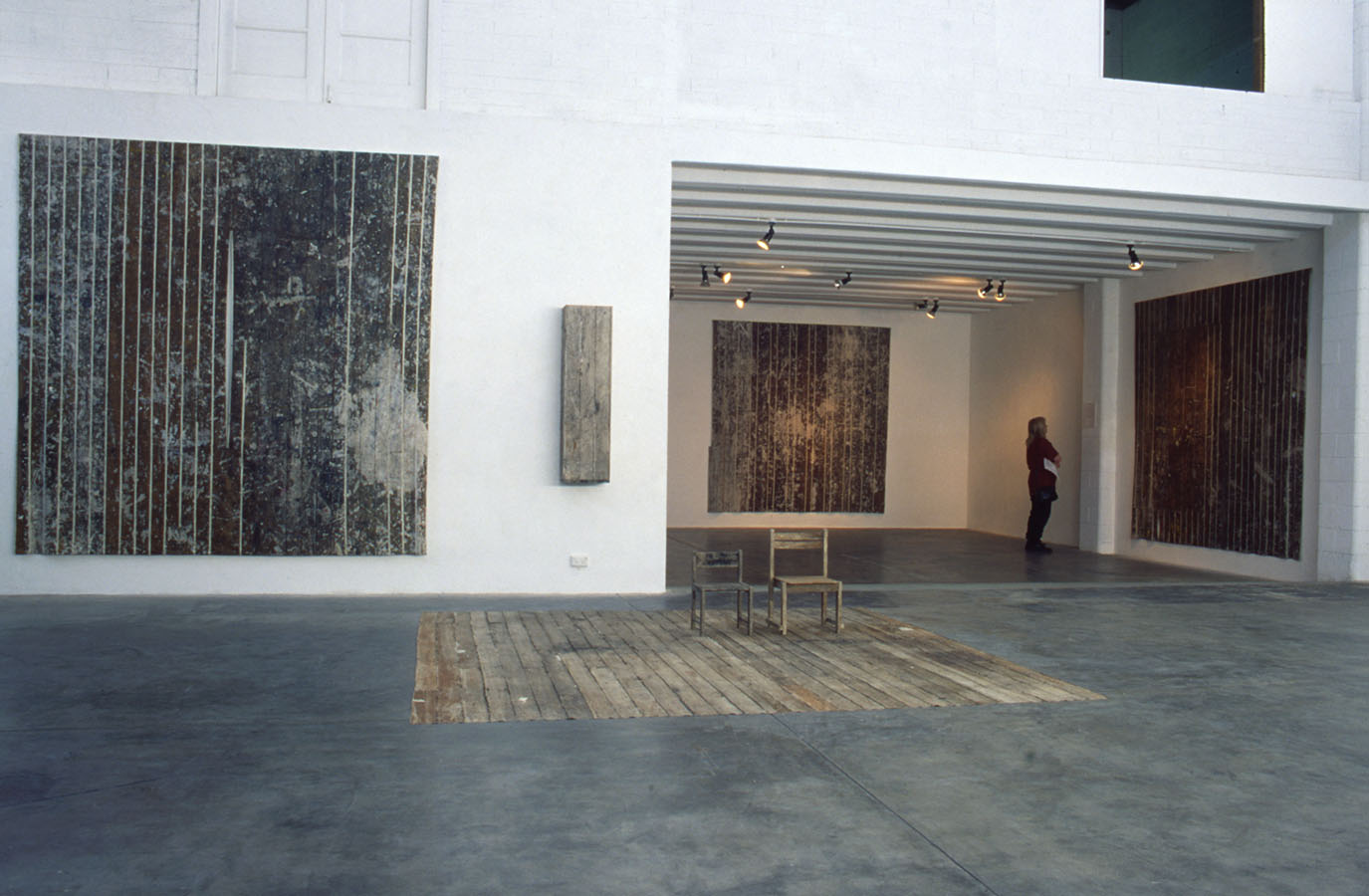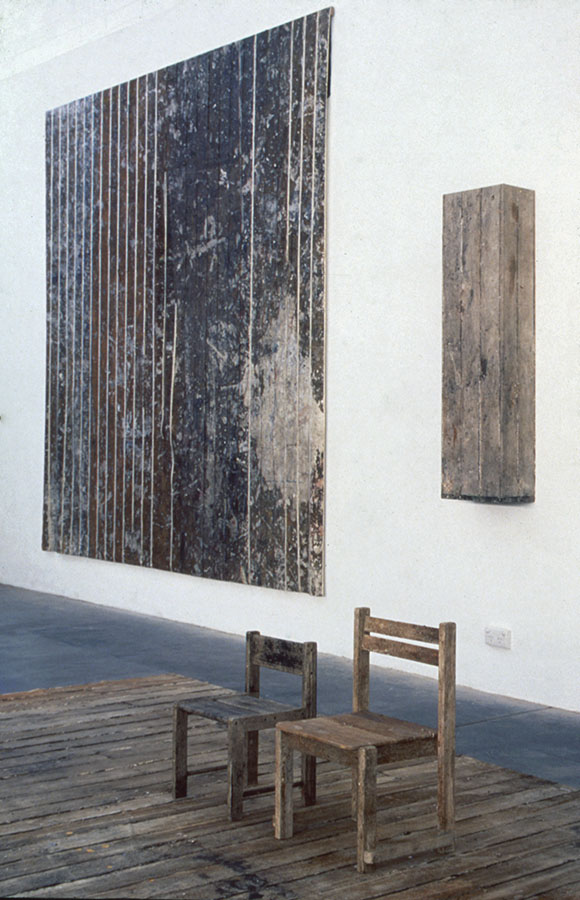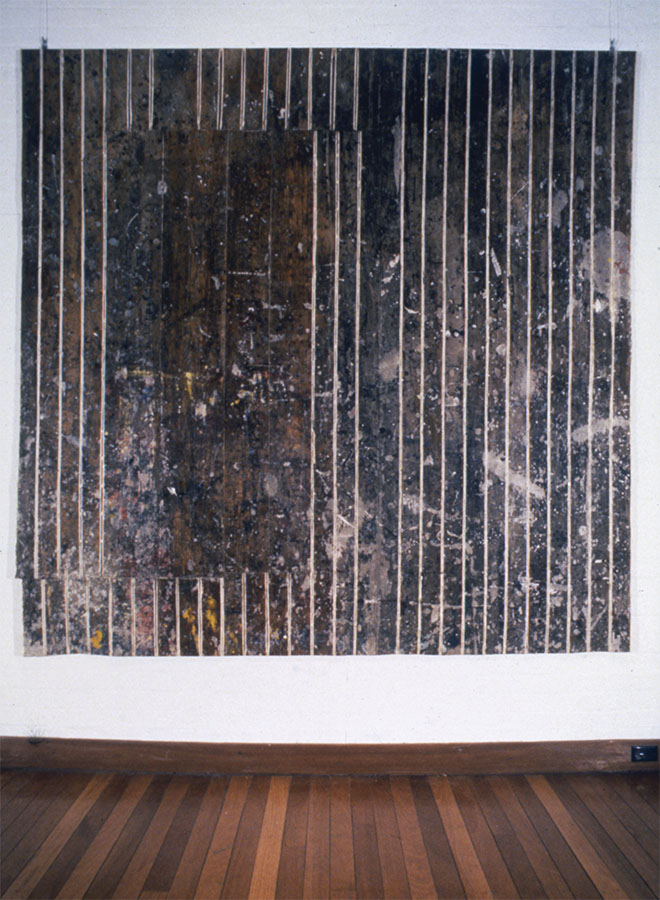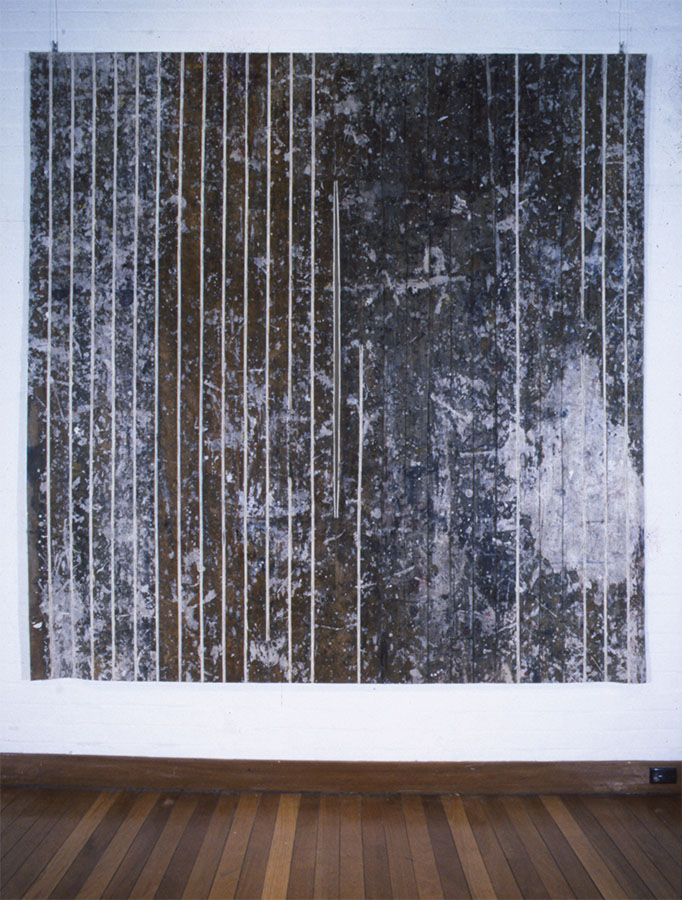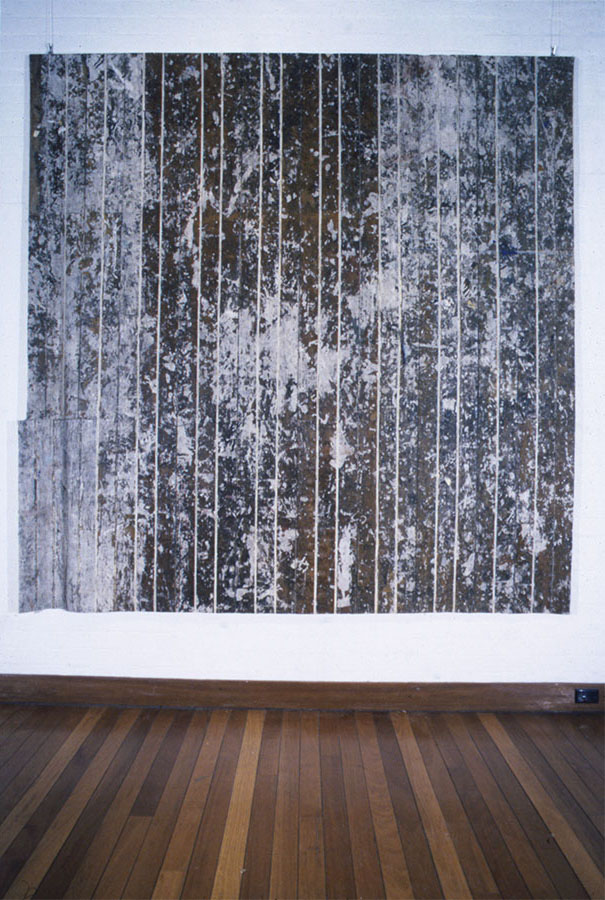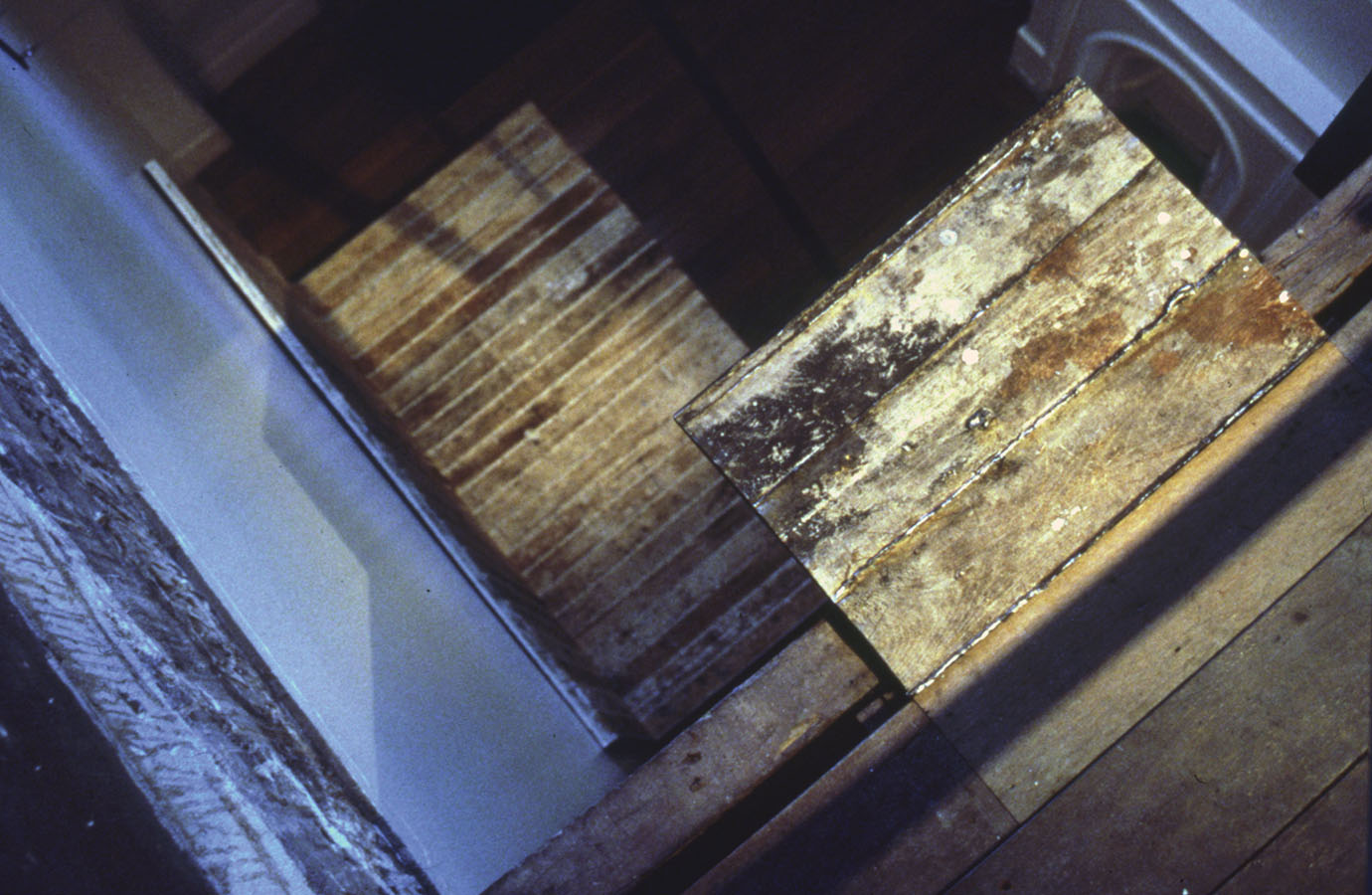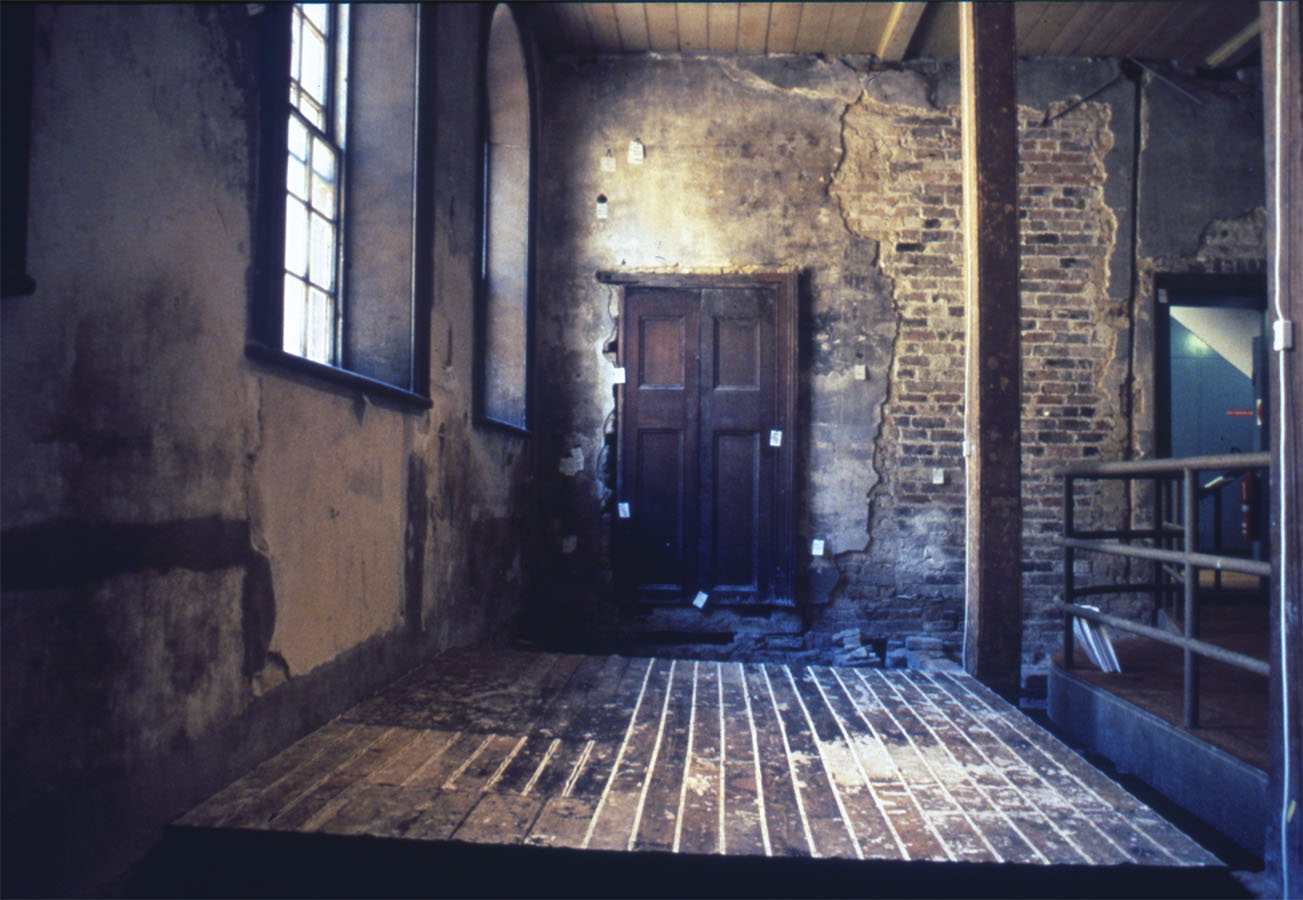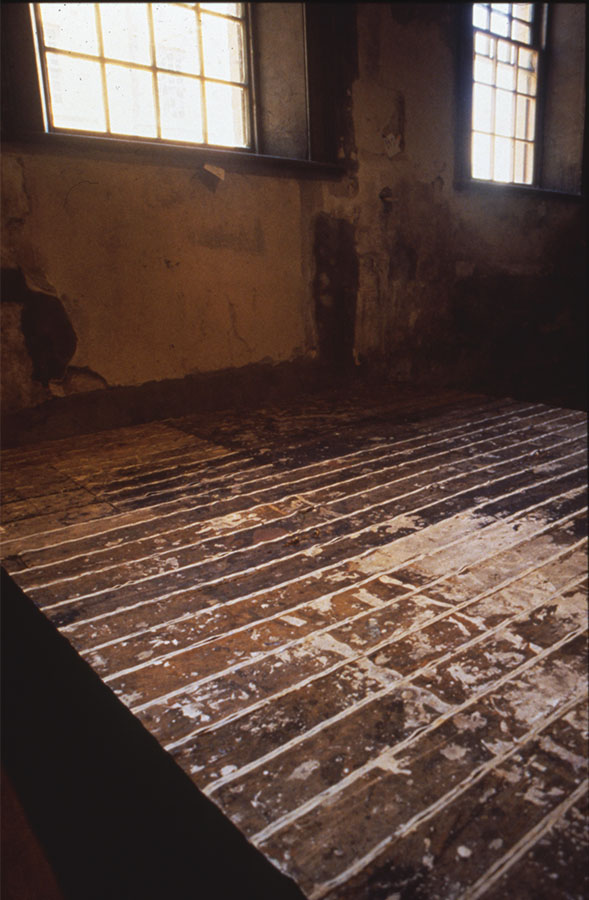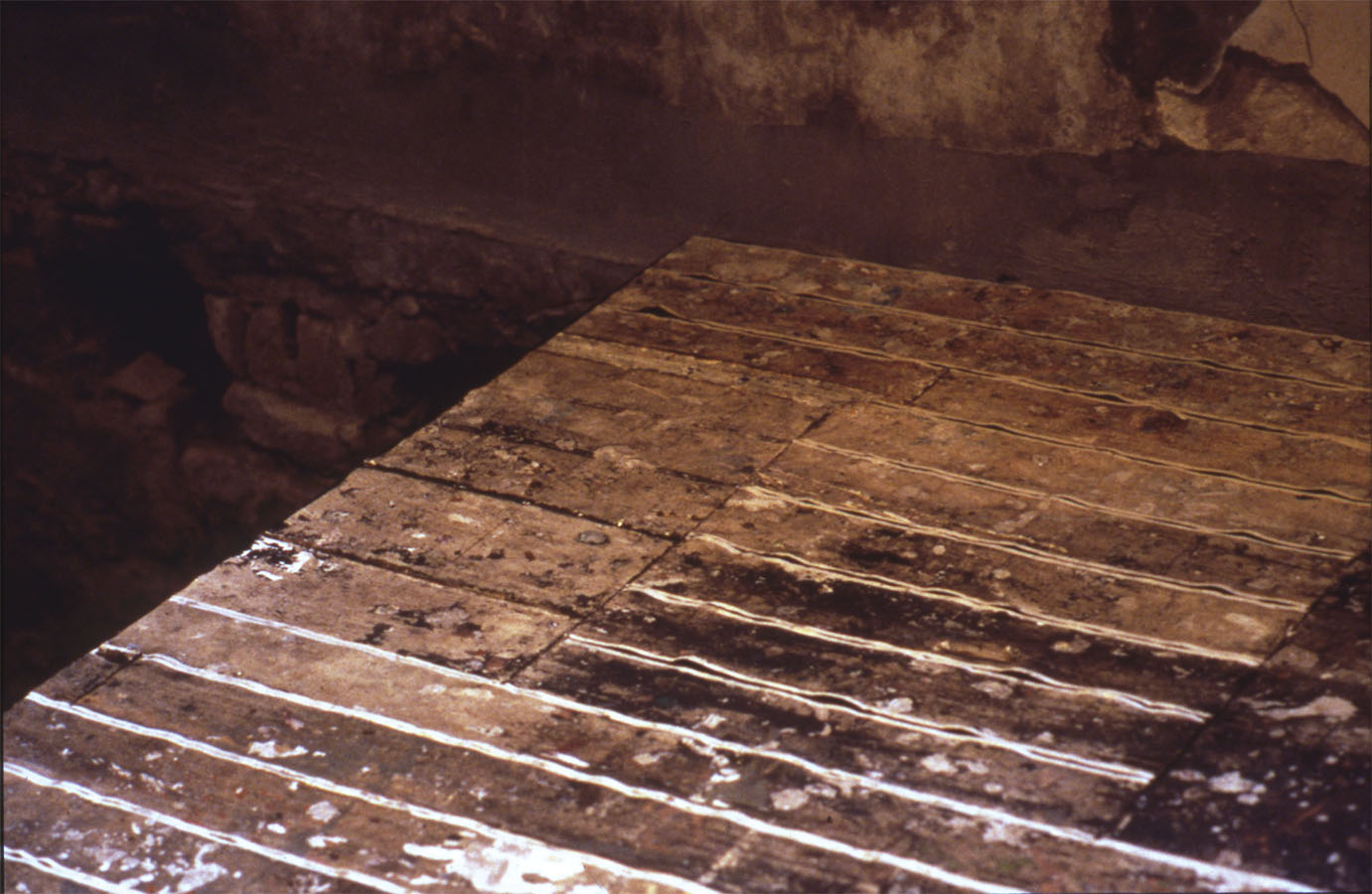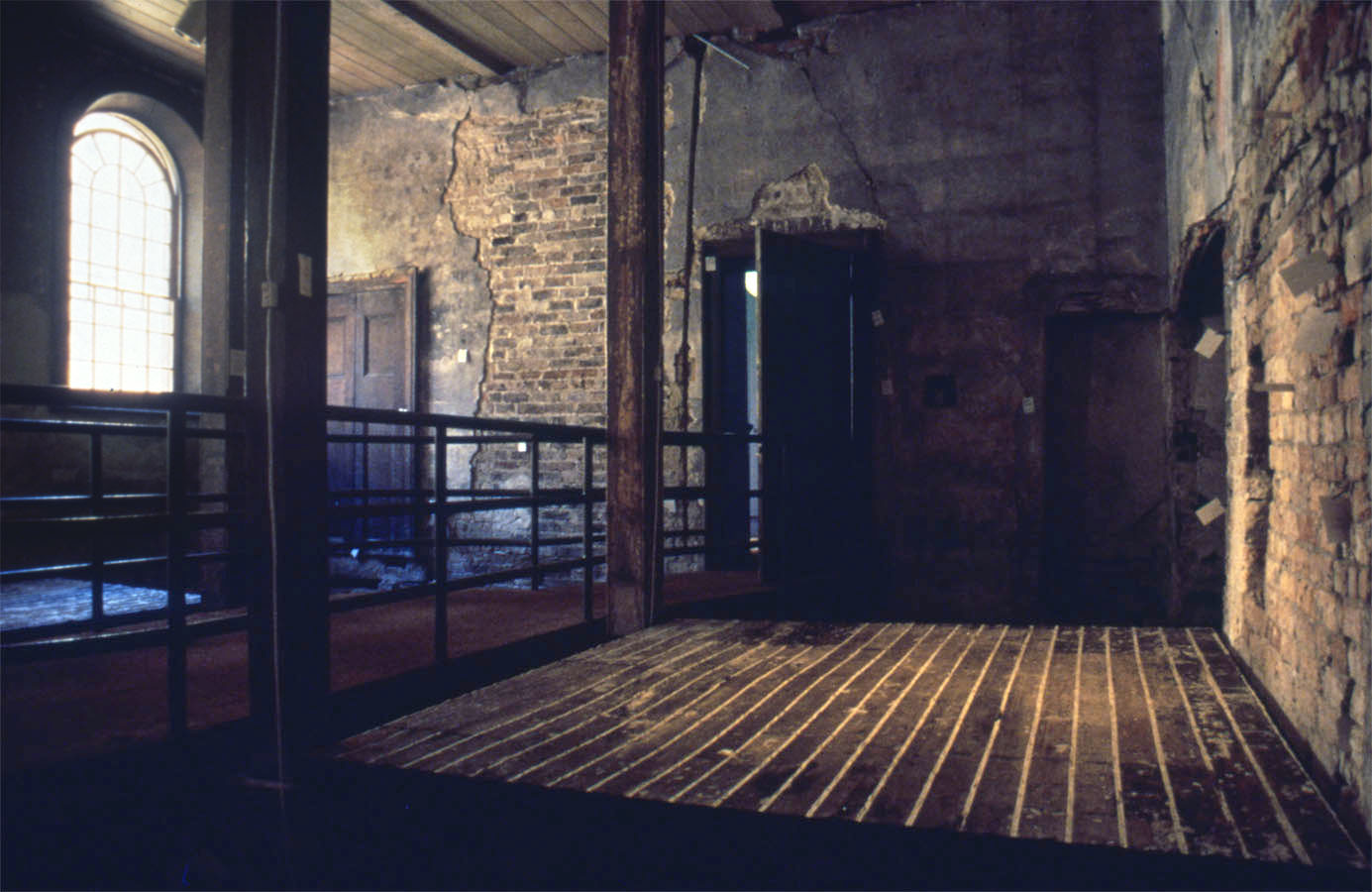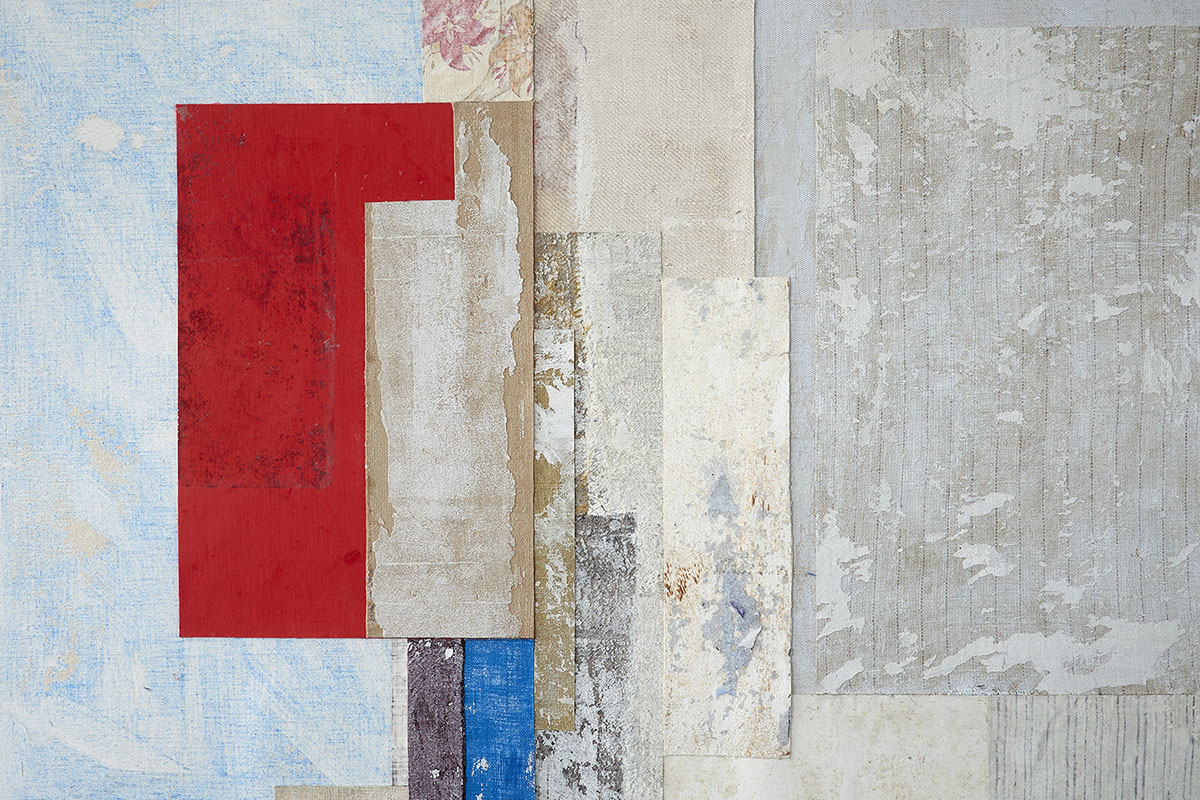

Photo: Hamish Ta-Me
Nicole Ellis uses found materials and colour, such as industrial textiles, printed papers, wrappers and urban refuse, to makes works which include painting, sculpture, installation, books and video. Her working method involves collage and assemblage with an interest in issues of culture and history in relation to materiality, archaeology, architecture and abstraction. The works reveal materials that are deteriorated and layered either by chance or redesign. The earlier ‘Site Works’ were part of this project, with large-scale paint skins, lifted or peeled back from the marked wooden floors of a clothing manufacturer’s warehouse. These fabric works were hung loosely or rolled as portable documents of everyday experience.
Born in Adelaide, Ellis studied at the South Australian School of Art and the Tasmanian School of Art, University of Tasmania, where she received a Master of Fine Arts, in 1983. Through an Australia Council Grant in 1984, she established a studio in Sydney, where she continues to live and work, with periods of time overseas. She has given talks lectured at many different institutions including the Tasmanian School of Art, the China Academy of Art, Hangzhou, Goldsmiths College, London, the University of Western Sydney, Cambridge University, Faculty of Architecture and History of Art, Wollongong University and the College of Fine Arts, Sydney, where she was a senior lecturer in painting and drawing. She has been represented by Greenaway Art Gallery, Adelaide, James Dorahy Project Space, Sydney and Conny Dietzshould Gallery, Sydney.
She exhibits nationally and internationally and has received numerous awards and overseas residencies, including the Australia Council, Rome and London Studios and the AGNSW, Paris Studio. Her work is represented in public and private collections in Australia and overseas. Recent solo and group exhibitions/commissions include: Repurpose, Drill Hall Gallery, Canberra, 2016, International Concrete, Marcela Jardon Art Gallery, Barcelona, 2017, Artist Profile: Australasian Painters 2007-2017, Orange Regional Gallery, 2017, Middle Head 33° 50’ S 151° 14’ E, Mosman Art Gallery, 2013, London: Looking East, University of Tasmania, 2005, Time & Vision: New Work from Australian Artists, Australia Council for the Arts/Acme Studios, Bargehouse, South Bank, London, 2012, Interventions, Transit_1, The British School at Rome, Italy, 2009, Stratum, Greenaway Art Gallery, Adelaide, 2006,Tachikawa International Art Festival, Tokyo, Japan, 2000, Harbour, Sydney 2000 Olympic Arts Festival, Museum of Sydney, 2000.
Biography |
Download/Print CV |
| Born | Adelaide, South Australia. |
| Study | Master of Fine Arts, University of Tasmania. 1981-82. |
| Diploma of Fine Art (Painting), Adelaide College for the Arts and Education. 1975-78. | |
| Diploma of Teaching, Hartley College of Advanced Education, Adelaide. 1969-70. | |
| Work | Senior Lecturer, College of Fine Arts, University of NSW, 1991 – 2015. |
| Resides | Sydney, Australia. |
Solo Exhibitions
| 2022 | Tatterdemalion, Liverpool Street Gallery, Sydney, Australia. |
| 2021 | Nicole Ellis Fabrications, Drill Hall Gallery, ANU, Canberra, Australia. |
| 2014 | New Relics, Concrete Abstractions, Conny Dietzshold Gallery, Sydney, Australia. |
| 2012 | Artifact, James Dorahy Project Space, Sydney, Australia. |
| 2011 | Fabric Work, Factory 49 Sydney, Australia. |
| 2009 | Fabric Paintings, Factory 49, Sydney, Australia. |
| 2006 | Stratum, Greenaway Art Gallery, Adelaide, Australia. |
| 2004 | Interventions, Greenaway Art Gallery, Adelaide, Australia. |
| Residue, Tin Sheds Gallery, Sydney, Australia. | |
| 2001 | From The Floor – People’s Federal Convention, Bathurst 1896, Bathurst, Australia. |
| 1999 | All that goes with it, Greenaway Art Gallery, Adelaide, Australia. |
| 1998 | Below the Waterline, Olympic Arts Festival, Customs House, Sydney, Australia. |
| 1997 | Engram, Greenaway Gallery, Adelaide, Australia. |
| 1996 | Memorandum, Glare/Vitrine, Artspace, Sydney, Australia. |
| Rollcall, Casula Powerhouse, Casula, Australia. | |
| 1995 | Stripped Bare, Greenaway Art Gallery, Adelaide, Australia. |
| 1993 | Arrested Sites, Hyde Park Barracks Museum, Sydney, Australia. |
| 1989 | DC-Art, Sydney, Australia. |
| 1988 | DC-Art, Sydney, Australia. |
| 1987 | Missing Persons, Avago, Tin Sheds Gallery, Sydney, Australia. |
| 1985 | Mori Gallery, Sydney, Australia. |
| 1983 | University of Tasmania, Hobart, Australia. |
| 1981 | Contemporary Art Centre of South Australia, Adelaide, Australia. |
Selected Group Exhibitions
| 2022 | Second Look: remade and reimagined textiles, curators Barbara Rogers, Liz Williamson, Barometer Gallery, Sydney, Australia. |
| 2021 | Ravenswood Australian Women’s Art Prize, Ravenswood School for Girls, Sydney, Australia. |
| Que des Femme…only women…biennale international d’art non objectif de la ville de Pont de Claix, International curator Roland Orepuk, Sydney curators, Lisa Pang, Anya Pesce, Factory 49, Sydney, Australia. | |
| Second Look: Handmade Textiles, curators Liz Williamson, Barbara Rogers, Barometer Gallery, Sydney, Australia. | |
| 2020 | Articulate turns 10, Articulate Project Space, Sydney, Australia. |
| 2019 | From a White Ground, Nicole Ellis & Barbara Halnan, Articulate Project Space, Sydney. Aguilar/Inn/Ellis, curator, Ben Gavin, Chauffeur, Sydney, Australia. |
| 2018 | Intercontinental Line: Reflection in Progress, Europe/Australia, curators Bogumila Strojna, Barbara Halnan, Abstract Project Gallery, Paris, France. |
| Ferret, Articulate Project Space, Sydney, Australia. | |
| 2017 | Artist Profile: Australasian Painters 2007-2017, curators Kon Gouriotis and Lucy Stranger, Orange Regional Gallery, Orange, Australia. |
| International Concrete, curator Judith Duquemin, Marcela Jardon Art Gallery, Barcelona, Spain. | |
| Found in Translation, Stacks Projects, Sydney, Australia. | |
| 2016 | Repurpose, curator Tony Oates, Drill Hall Gallery, Canberra, Australia. |
| Flag Wavering, curator Pia Larsen, SLOT Window Space, Sydney, Australia. | |
| 2015 | Sydney Contemporary Art Fair, Conny Dietzshold Gallery, Sydney, Australia. |
| Affiliated Text, curators, Lynne Barwick, Bronia Iwanczak, Cross Arts Books, Sydney, Australia. | |
| Feral, curator Margaret Roberts, Articulate Project Space, Sydney, Australia. | |
| 2014 | Melbourne Art Fair, Conny Dietzshold Gallery, Melbourne, Australia. |
| The Democracy of Drawing 1, curated by Dr. Sally Clarke and Brenda Factor, Airspace Projects, Sydney, Australia. | |
| The 63rd Blake Prize, University of New South Wales Galleries, Sydney, Australia. | |
| The Mosman Art Prize, Mosman Art Gallery, Sydney, Australia. | |
| Extinct Extant, curator Dr. Sally Clarke, Airspace Projects, Sydney, Australia. | |
| Quadrant, Factory 49, Sydney, Australia. | |
| 2013 | Middle Head 33° 50′ S 151° 14′ E, curators John Cheeseman, Katrina Cashman, Julie Petersen, Mosman Art Gallery and Middle Head Site, Sydney, Australia. |
| Backstage, Conny Dietzshold Gallery, Sydney, Australia. | |
| Pourquoi pas…/ Why not… curator Roland Orepuk, 2e Biennale Internationale d’art non objectif, Moulins de Villancourt, de la Ville de Pont de Claix, France. | |
| THIS is the new black, pop-up space, curator James Dorahy, 462 Oxford St, Sydney, Australia. | |
| Annual Members Show, Factory 49, Sydney, Australia. | |
| Collection 4, curator Adrian Clement, Articulate Project Space, Sydney, Australia. | |
| Collectors Space, curator Natalia Bradshaw, Art Month Collector’s Space, Sydney, Australia. | |
| 2012 | Time & Vision: New Work From Australian Artists, curator Paul Bayley Australia Council for the Arts/Acme Studios, Bargehouse, Oxo Tower Wharf, London. |
| Studio Exhibition, Redgate Studios, Beijing, China. | |
| Recycled Dreaming, curator Bronia Iwanczak, Cross Art Books Drawing Room, Sydney, Australia. | |
| Petite Miniature Textiles, Wangaratta Art Gallery, Wangaratta, Australia. | |
| Six Years of Projects 2006–2012, James Dorahy Project Space, Sydney, Australia. | |
| Annual Members Show, Factory 49, Sydney, Australia. | |
| Group Print Show, Factory 49, Sydney, Australia. | |
| 2011 | Paris, France. 1911–Sydney 2011, curator Terence Maloon, Alliance Francaise, Sydney, 2020, curators Jonfrumart Foundation and Robert Lake, Damian Minton Annex Space, Sydney, Australia. |
| Factory 49 Project Show, Galerie bij de Boeken, Drufabriek Cultural Centre Ulft, Netherlands. | |
| Fundraiser Exhibition, Tin Sheds Gallery, Sydney, Australia. | |
| Factory 49 Group Show, Art Month, Factory 49, Sydney, Australia. | |
| 2010 | Constructed Painting, curator Francesca Mataraga, Level 17 Artspace, Melbourne, Australia. |
| Fisher’s Ghost Art Award, Campbelltown Art Centre, Campbelltown, Australia. | |
| Liverpool City Art Prize, Casula Powerhouse, Casula, Australia. | |
| Shelf Life, Delmar Gallery, curator Catherine Benz, Trinity Grammar School, Sydney, Australia. | |
| Non-Objective Group Show, Art Month, Factory 49, Sydney, Australia. | |
| 2009 | Tempo Reale 09, curator Jacopo Benci, The British School at Rome, Rome, Italy. |
| Liverpool City Art Prize, Casula Powerhouse, Casula, NSW, Australia. | |
| 2007 | Port Arthur Project, curators Noel Frankham and Julia Clark, Ten Days on the Island, Port Arthur Historic Site, Port Arthur, Tasmania, Australia. |
| Books Made by Artists, curator Jo Holder, 5th Sydney Book Fair, The Rex Centre, Sydney, Australia. | |
| 2006 | Transit_1, curator Jacopo Benci, The British School at Rome, Rome, Italy. |
| Transiti, curator Jacopo Benci, Spazio Cultura, Aemilia Hotel, Bologna, Italy. | |
| 2005 | London: Looking East, Australian Artists in the Australia Council Studios, 1985–2002, curator Jonathon Holmes, Plimsoll Gallery, Hobart, Australia. |
| Members Exhibition, Asia Australia Art Association, Sydney, Australia. | |
| Notebooks at Dockworks; Origin of Ideas Archive, curator Elizabeth Day, Hobart Summer Festival, Constitution Docks, Hobart, Australia. | |
| The First International Sculpture Symposium, China-Kunming International Sculpture Festival, Kunming, China. | |
| Small Offerings: Srilanken and Australian Artists exhibition for Tsunami relief effort in Srilanka, curator Jo Holder, The Cross Arts Projects, Sydney, Australia. | |
| 2003 | Significant Tilt – Art and the Horizon of Meaning, curator Rod Pattenden, Macquarie University, Sydney, Australia. |
| 2002 | Third International Sculpture Symposium, Hue Festival 2002, Hue Vietnam. |
| A Silver Lining, curator Nick Waterlow, Ivan Dougherty Gallery, Sydney, Australia. | |
| Paris, France. Days, curator Liz Ashburn, Ivan Dougherty Gallery, Sydney, Australia. | |
| 2001 | A Studio in Paris, France.: Australian Artists at the Cite 1967–2000, curator Jane Watters, S.H. Ervin Gallery, Sydney, Australia. |
| Histories in the Making, curator Felicity Fenner, Ivan Dougherty Gallery, Sydney, Australia. | |
| 2000 | Tachikawa International Art Festival 2000, curator Emiko Namikara, Tokyo, Japan. |
| Harbour, curator Peter Emmett, Sydney 2000 Olympic Arts Festival, Museum of Sydney, Sydney, Australia. | |
| 1999 | Shifting Currents, Ivan Dougherty Gallery, Sydney, Australia. |
| Shields, Casula Powerhouse ARTS Centre, Casula, Australia. | |
| 1998 | Exposition Collective, Cite Internationale des Arts, Paris, France. |
| Shields, Second Canberra National Sculpture Forum, Canberra, Australia. | |
| Co-Existence, Australian Artists Against Racism, curator Ace Bourke, Hogarth Galleries, Sydney, Australia. | |
| 1997 | Sextet, curator Nick Waterlow, Ivan Dougherty Gallery, Sydney, Australia. |
| 1996 | In Process, curator Felicity Fenner, Ivan Dougherty Gallery, Sydney, Australia. |
| Tenth Anniversary Show, First Draft Gallery, Sydney, Australia. | |
| Pulp Friction, touring exhibition, SATEP, Adelaide, Australia. | |
| ~bimbi, Performance Space, Sydney, Australia. | |
| 1995 | Down the Drain, curators Fine Rats International, Bath Row, Birmingham, UK. |
| Chameleon: a decade, Long Gallery, Hobart, Australia. | |
| Circle, Line, Square – Aspects of Geometry, curator Sioux Garside, New England Regional Art Museum, Albury Regional Art Centre, Albury, Australia. | |
| 1994 | Circle, Line, Square, Aspects of Geometry, curator Sioux Garside, Campbelltown Bicentennial City Art Gallery, Newcastle Regional Art Gallery, Newcastle, Australia. |
| A Hundred Years, curator Felicity Fenner, Ivan Dougherty Gallery, Sydney, Australia. | |
| Approaches to the Sublime: the esoteric in painting, curator Nick Waterlow, Ipswich Regional Art Gallery, Ipswich, Australia. | |
| Shifting Edges: Art on Site, curator John Kirkman, Open Museum, Casula Powerhouse, Casula, NSW, Australia. | |
| Matter and Mutations, curator Alan Krell, Singapore Festival of Arts, The Substation Gallery, Singapore. | |
| 1993 | Virtu, curator Nick Waterlow, Ivan Dougherty Gallery, Sydney, Australia. |
| Approaches to the Sublime: the esoteric in painting, curator Nick Waterlow, Ivan Dougherty Gallery, Sydney, Australia. | |
| 1992 | Manu et Mente, Ivan Dougherty Gallery, Sydney, Australia. |
| 1991 | Discontinuous Proportion, Blaxland Gallery, Sydney, Australia. |
| Heterogeneity/Herterogeneity, curator Annette Van den Bosh, Campbelltown City Art Gallery, Campbelltown, Australia. | |
| 1990 | The Lie of the Land, Landscape a Sense of Place, curator Sue Rowley, Mitchell Library, Sydney, Australia. |
| Painting, Photography, Ceramics, University of Western Sydney, Macarthur, NSW, Australia. | |
| The Ideal Format Show, Northern Territory Centre for Contemporary Art, Darwin, Australia. | |
| 1989 | The Passion Show, Sylvester Gallery, Sydney, Australia. |
| Foundry Artists, the Foundry Gallery, Sydney, Australia. | |
| Gallery Artists, Gore Street Gallery, Melbourne, Australia. | |
| 1988 | Structures of Necessity, First Draft Gallery, Sydney, Australia. |
| Arienale, EMR Gallery, Sydney, Australia. | |
| 1987 | First Show, DC-Art, Sydney, Australia. |
| 1986 | Expatriates: Exiles, curator Paul Hewson, Adelaide Festival Gallery, Adelaide. |
| 1985 | Long Gallery, University of Wollongong, Wollongong, Australia. |
| The Loveliest Show on Earth, Mori Gallery, Sydney, Australia. | |
| 1984 | Art Walk, Adelaide Festival of Arts, Design Centre, Adelaide, Australia. |
| Expatriates 2, Contemporary Art Centre of South Australia, Adelaide, Australia. | |
| 1983 | Raw State, Anzart-in-Hobart, Chameleon Gallery, Hobart, Australia. |
| Adelaide Painters Drawing, curator Chris Coventry, Chameleon Gallery, Hobart, Australia. | |
| 1982 | From The Inside Out: Aspects of Women’s Art, curator Margot Osbourne, The Women and Arts Festival, Crafts Council Gallery, Sydney, Australia. |
| Detours by Tender Aliens, Long Gallery, Hobart, Australia. | |
| Flights of Fantasy, Salamanca Arts Festival, Long Gallery, Hobart, Australia. | |
| Alice Springs Art Prize, Alice Springs Art Foundation, Alice Springs, Australia. | |
| 1979-80 | Annual Member’s Exhibition, Contemporary Art Centre of South Australia, Adelaide, Australia. |
| 1978 | Channel 10 Young Artists Award Invitational, Festival Theatre, Australia. |
Performances
| 1983 | Formal Complaint, Pier Group: Strahan, Tasmania, Australia. |
| Nuclear Fishin’, Pier Group: Hobart, Tasmania, Australia. |
Bibliography
Exhibition Catalogues and Essays
Ellis, N. Oates, T. ‘In conversation’, Nicole Ellis Fabrications, ANU Drill Hall Gallery, Canberra, 2021, 97-103.
Johnson, A. ‘Cut and Paste’, Nicole Ellis Fabrications, ANU Drill Hall Gallery, Canberra, 2021, 71-79.
Maloon, T. ‘Cast-off’, Nicole Ellis Fabrications, ANU Drill Hall Gallery, Canberra, 2021, 66-69.
McFadyen, E. ‘Nicole Ellis Profile’, Artist Profile, Issue 53. 2020.
Sharp, L. ‘Tabula Rasa for two: time and tempo’, Nicole Ellis & Barbara Halnan: From a White Ground, Articulate Project Space, Sydney, 2019.
Johnson, A. ‘Preview’, Artist Profile, Issue 37, 2016, 113,140-143.
Oates, T. ‘Repurpose’, Repurpose, ANU Drill Hall Gallery, Canberra, 2016, 15-27.
Bayley, P. ‘Time & Vision’, Time & Vision: Australia Council for the Arts, London Residencies 1992-2012, Acme Studios, 2012, 17-21.
Clark, J. Frankham N. ‘Port Arthur Project: Re-interpreting Port Arthur Historic Site through contemporary visual art’, Port Arthur Project, Port Arthur Historic Site, published, Tasmanian School of Art, University of Tasmania, 2007, 5.
Benci, J. ‘Transit’, Fine Arts 2006-2007, British School at Rome, 6-8.
McCulloch, A. McCulloch, S. McCulloch-Childs, E. (Ed), The New McCulloch’s Encyclopaedia of Australian Art, Miegunyah Press, Melbourne, 2006, 405.
Krell, A. ‘Strata’, Stratum, Greenaway Art Gallery, Adelaide, 2006.
Holmes, J. ‘London: Looking East’, Australian artists in the Australia Council Studios, 1985-2002, Plimsoll Gallery, Tasmanian University, Hobart, 2005, 5-23.
Fenner, F. Residue, Tin Sheds Gallery, University of Sydney, Sydney, 2004.
Saur, Allermeines Künstlerlexicon – World Bibliographical Index of Artists, 2003.
Pattenden, R. Significant Tilt – Art and the Horizon of Meaning, Macquarie University, Sydney, 2003.
Lecht, S. ‘Impressions of Hue,’ 2002, Third International Sculpture Symposium, 2002, 104-106.
Quan, N. ‘Hue 2002 – Strong Impressions’ Impressions of Hue, Third International Sculpture Symposium, Hue, Vietnam, 2002, 102-3.
Watters, J. A Studio in Paris, France.: Australian Artists at the Cite 1967-2000, S.H. Ervin Gallery, Sydney, 2001.
Namikawa, E. ‘Live Perceived Realms’ Tachikawa International Art Festival 2000, Tokyo, 2000, 7.
Emmett, P. Sydney Metropolis+ Suburb+ Harbour, Historic Houses Trust of NSW, 2000, 123-6
Kerr, J. Holder, J. (Ed), past PRESENT, The National Women’s Art Anthology, Craftsmanhouse Press,1999.
Ferran, A. ‘Rollcall’, Casula Works, published Casula Powerhouse, 1999, 39-40.
Winikoff, T. ‘Eternity is a Fashion Label’, Casula Works, published Casula Powerhouse, 1999, 9-13.
Tonkin, P. ‘Creative Architecture at the Casula Powerhouse’, Casula Works, published Casula Powerhouse, 1999, 21-23.
Rowley, S. Below the Waterline, Customs House, Sydney, 1988.
Drury, N. Images 3 Contemporary Australian Painting, Craftsmanhouse Press, 1998, 215.
Waterlow, N. Sextet, Ivan Dougherty Gallery, Sydney, 1997.
Keens, L. ‘Powerhouse Arthouse’, Design, The Qantas Club, December 1996/January, 1997, 38.
Zimmer, J. Circle, Line, Square, Aspects of Geometry, Campbelltown City Art Gallery, 1994.
Garside S. Circle, Line, Square, Aspects of Geometry, Campbelltown City Art Gallery, 1994.
Forsyth, G. ‘A Certain Form of Eternity’, Approaches to the Sublime: the esoteric in painting, Ivan Dougherty Gallery, Ipswich Regional Art Gallery, 1993-1994.
Forsyth, G. Matter and Mutations, The Substation Gallery, Singapore, 1994.
Forbes, J. ‘Preterite traces’, Arrested Sites, Hyde Park Barracks Museum, 1993.
Collins, L. ‘Arrested Sites’, Arrested Sites, Hyde Park Barracks Museum, 1993.
Rowley, S. ‘Discontinuing Tradition. Constraint and Affirmation in Discontinuous Proportions’, Discontinous Proportion, Blaxland Gallery, Sydney 1991.
Van den Bosch, A. Heterogeneity/Herterogeneity, Campbelltown City Art Gallery, 1991.
Rowley, S. ‘The Lie of the Land’, Landscape a Sense of Place, Mitchell Library Sydney, 1990.
Cameron-Wilson, S. From Shadow into Light, Women Artists in South Australia since Colonisation, 1988.
Barker, R. Arienale, EMR Gallery, Sydney, 1988.
Forbes, J. ‘Catalogue notes for solo exhibition’, Mori Gallery, Sydney, 1985.
Holmes, J. Flights of Fantasy, Long Gallery, Hobart, 1982.
Publications and Reviews
Judd, C. ‘A Sensate Space: Nicole Ellis’s fabrications’, Art Monthly Australasia, No 328, Winter, June 2021, 80-85.
Kennedy, R. ‘Nicole’s art shows beauty in decay’ ‘Fabrications’, City News, Review, February 26, 2021, https://citynews.com.au/2021/waiting-for-anu-to-send-pictures-nicoles-art-shows-beauty-in-decay/
Fairley, G. ‘Exhibition Review: Nicole Ellis, ANU Drill Hall Gallery’, Arts Hub, March 24, 2021, https://www.artshub.com.au/news/reviews/exhibition-review-nicole-ellis-anu-drill-hall-gallery-262181-2370448/
Grishin, S. ‘Nicole Ellis: Fabrications exhibition review’, Canberra Times, March 8, 2021,
https://dhg.weblogs.anu.edu.au/nicole-ellis-fabrications-exhibition-review/
Editor, ‘Nicole Ellis Fabrications’, Garland Magazine, February 9, 2021, https://garlandmag.com/loop/nicole-ellis-fabrications/
Editor, ‘Fabrications’ Kolaj Magazine, 2021, https://kolajmagazine.com/content/content/collage-exhibitions/fabrications/
Grishin, S. ‘Repurpose at ANU Drill Hall Gallery brings together a diverse group of artists,’ Art Review, The Age ACT News, November 25, 2016.
McIntosh, F. ‘The Collecting Journey’, Australian Women’s Bloggers Directory, Blog, 17th March, 2013.
Bayley, P. ‘Interviews with Time & Vision Exhibition Artists’, VAAus, 2013, http://vaaus.co.uk/time-vision-interview
Bending, L. ‘Time & Vision Review New work From Australian Artists’, Visitor Review, Visual Arts Australia, VAAus, 2012, http://vaaus.co.uk/visitor-comments-and-reviews/
Media Release, ‘Celebrating 20 years of residencies with Time & Vision’, Australia Council, 16 October 2012, http://www.australiacouncil.gov.au/news/items/news_features/celebrating-20-years-of-residencies-with-time-and-vision
Press Release, ‘Guida agli eventi culturali’, Tempo Reale, 25 September, 2009.
Frankham, N.’Port Arthur Project: Re-interpreting Port Arthur Historic Site through contemporary visual art’, School of Art, Tasmanian University, ACUADS Research 2007/2008.
Editor, ‘Giovani artisti alla Britsh School’, Culture, Contemporanea, E Polis, 2006.
Editor, ‘Living’, Da Guan Weekly, Kunming, China, 18 May, 2005.
Radok, S. ‘Symbols of surface tension’, Visual Arts, The Adelaide Review, December 10, 2004.
Editor, ‘Exhibitions to Watch’, South Australia, ArtLink ‘hybrid world’, Vol. 2, No 4, December, 2004.
Clement, T. ‘Critic’s Picks’, Exhibitions, Metro, The Sydney Morning Herald, 15-21 October, 2004.
Lecht, S. World Sculpture News Magazine, Vol 8, No 4, 2002.
Minh Tu, L. ‘sculptors plant their work in statue garden’, Viet Nam News, 5 May, 2002, 8.
Radok, S. ‘a water or a light’, Artlink ‘taking in Water’, Vol. 21, No. 1, 2001, 49.
Carroll, J.‘City proud of its role in Federation’, Western Advocate, 19 November, 2001,12.
Lopez, A.‘A Studio in Paris: Australian Artists at the Cite 1967 – 2000’, Sydney, CitySearch, June 2001, 22.
Edwards, A. ‘Watch this space for Federation art’s sake’, Western Advocate, 14, November, 2001, 3.
James, B. ’High water marks’, Spectrum, The Sydney Morning Herald, 19 August, 2000, 10.
Editor, ‘Tidal Vectors’ Arts Wire Current, Volume 10 no. 24 June 26, 2001.
Editor, ‘Blue Velvet’, Adelaide Review, December, 1999.
James, B. ‘Four out of Six’, Galleries, The Sydney Morning Herald, 12 September, 1997.
Harris,J. ‘Gallery champions diversity’, The Advertiser, Adelaide 30 September,1997, 35.
Bolton, K. ‘Adelaide Art Commentary’, Otis Rush, No. 11, December, 1995, 166-169.
Bolton, K. ‘Stripped Bare’, Agenda, No. 44/45, October 1995.
Grimley, T. ‘Happy to be down the drain’, Art, The Birmingham Post, 5 August, 1995, 38.
Longley, M. ‘Open Air Venture’, Post Reviews, The Birmingham Post, 7 August, 1995.
Freak, D. ‘Down the Drain’, Visual Arts Previews, Whats On Birmingham and Central England, July 29-August 11, 1995.
Kenneally, C. ‘The Realness of Veneer’, Artlink, Vol. 15, Nos. 2 & 3, Winter/Spring, 1995, 87.
Radok, S. ‘Under my skin’, Adelaide Review, April, 1995.
Suchy, S. Singapore Festival of Arts, Journal of the Asian Arts Society of Australia, December, 1994, 26.
Editor, State of the Art, Issue, 10 September-December, 1994.
Fenner, F. ‘An antidote to creeping craft’, Arts, The Sydney Morning Herald, 23 September,1994, 15.
Forsyth, G. ‘Standard Deviation’ Australian Perspecta 1993 review, Art and Text 47, 1994, 13.
Lynn, E. ‘Sublimity to Ridicule’, The Weekend Australian, November, 1993, 13-14.
Fenner, F. ‘Arts’, The Sydney Morning Herald, 22 October, 1993, 20.
Hepburn, L. Press Press, March, 1992.
Fern, L. ‘Galleries’, The Sydney Morning Herald, 16 August, 1991.
Editor, Scripsi Vol. l7/ No 1, Oxford University Press, 1991, 292.
Editor, Scripsi Vol. 16/ No 3, Oxford University Press, 1990.
Allen, C. The Sydney Morning Herald, 30 June, 1989.
Ewington, J. ‘Structures of Necessity’, Eyeline, March, 1989.
Burns, C. ‘Art Commentary’, Sydney. Otis Rush, Vol 3, Adelaide, 1988.
Watson, B. ‘Arts’, The Sydney Morning Herald, 30 September, 1988.
Lynne, E. The Weekend Australian, 19-20 December, 1987.
Ranby, M. The Sydney Morning Herald, Eastern Suburbs Supplement, 22 December, 1987.
Good, K. ‘Gone but not Forgotten’, The Advertiser, Adelaide, 18 October, 1986.
Neylon, J. ‘And Furthermore’, Adelaide Review, November, 1986.
Neylon, J. ‘Expatriates or Exiles’, The Advertiser, Adelaide, 1986.
Interview, University radio 5UV, Adelaide, 10 October, 1986.
Editor, ‘Exhibition Commentary’, Vol 23 No 3, Art and Australia, Autumn, 1985.
McLean, I. ‘Flights of Fantasy’, The Mercury, Hobart, 5 November, 1982.
Awards and Commissions
| 2013 | Middle Head 33° 50′ S 151° 14′ E, Mosman Art Gallery and Middle Head Site, Sydney, Australia. |
| 2006 | Keep the Home Fires Burning, Port Arthur Project, Port Arthur Historic Site, Tasmania, Australia. |
| Australia Council, Visual Arts Board, Skills and Arts Development Grant; International Residency, Rome Studio, Rome, Italy. | |
| 2005 | River Repose, China-Kunming, First International Sculpture Symposium Award, permanent sculpture in Kunming, China. |
| 2002 | Third International Sculpture Symposium, Hue Festival, permanent sculpture, Hue, Vietnam. |
| 2001 | Bathurst City Council, Centenary of Federation, Public Art Project: From The Floor – People’s Federal Convention, Bathurst, 1896, Bathurst, permanent sculpture, Bathurst, Australia. |
| Australia Council, New Media Arts Fund, Project Grant: New Work for Bivouac. | |
| 2000 | NSW Ministry for the Arts, Commission Grant. |
| dLux media/arts, Commission for Tidal Vectors, Museum of Sydney, Australia. | |
| 1996 | Australia Council, Visual Arts/Craft Board Project Grant: New Work. |
| 1995 | Liverpool City Council and Casula Powerhouse (part funded by the Australia Council, Community Cultural Development Board), Public Art Project: Casula Rollcall. |
| 1993 | Australia Council Visual Art/Craft Board International Project Grant for participation in Matter and Mutations exhibition, Singapore Festival of Arts Fringe, 1994. |
| 1993 | Australia Council Visual Arts/Craft Board Overseas Studio Grant, London Studio,1995. |
| 1987 | Australia Council Visual Arts/Craft Board Travel Grant. |
| 1983 | Australia Council Visual Arts/Craft Board Special Project Grant. |
| 1982 | Commonwealth Post Graduate Award. |
Residencies
| 2012 | Redgate Studio Residency, Beijing, China. |
| 2006 | Australia Council, Visual Arts Board, Skills and Arts Development, Rome Studio, Italy. |
| 2005 | China-Kunming, First International Sculpture Symposium. Kunming, China. |
| 2002 | Third International Sculpture Symposium, Hue Festival, Hue, Vietnam. |
| 1998 | University of New South Wales, Paris, France. Studio, Cité Internationale des Arts, Paris, France. |
| 1997 | New South Wales Ministry for the Arts, Gunnery Studio, Sydney, Australia. |
| 1995 | Australia Council Visual Arts/Craft Board, London Studio Residency. |
| 1994 | Art Gallery of New South Wales, Moya Dyring Studio, Cité Internationale des Arts, Paris, France. |
| British School at Rome, Rome, Italy. | |
| 1989 | Charles Sturt University, Visiting Artist in Residence, Albury, NSW, Australia. |
| 1988 | British School at Rome, Rome, Italy, Visiting Artist. |
Artist Talks and Presentations
| 2022 | Liverpool Street Gallery, Sydney, Artist Talk. |
| 2021 | Drill Hall Gallery, Australian National University, Canberra, Artist in Conversation. |
| 2016 | Drill Hall Gallery, Australian National University, Canberra, Artists in Conversation. |
| 2014 | Conny Dietzshold Gallery, Sydney, Australia. Artist Talk |
| 2013 | Middle Head Project, Mosman Art Gallery and Middle Head Site, Sydney, Australia, Forum. |
| 2007 | Revelations Conference, Tasmanian School of Art, University of Tasmania, Hobart, Australia, Paper. |
| 2006 | British School at Rome, Rome, Italy, Lecture. |
| 2005 | Art Forum Program, Tasmanian School of Art, University of Tasmania, Hobart, Australia, Artists Talk. |
| China Academy of Art, International Visitor, Hangzhou, China, Lecture. | |
| Yunnan Arts Institute, Kunming, China, Visiting Artist Talk. | |
| Significant Tilt – Art and the Horizon of Meaning, Macquarie University, Sydney, Artist Talk. | |
| 2000 | Tachikawa International Art Festival 2000, Tokyo, Japan, Artist Talk. |
| 2002 | Third International Sculpture Symposium, Hue Festival 2002, Hue, Vietnam, Artist Talk. |
| Private Eye Tour, Friends of the Art Gallery of NSW, Studio Visit. | |
| 1998 | Object Galleries, Customs House, Sydney, Australia, Floor Talk. |
| 1995 | Victoria and Albert Museum, London, 19th and 20th Century Modern Art Program, London, Artist Talk. |
| Goldsmiths College, London University, London, Critiques for Master of Art Program. | |
| University of Cambridge, Cambridge, UK, Faculty of Architecture and History of Art, Studio Teaching, Postgraduate Level, Visiting Artist. | |
| University of Cambridge, UK, Faculty of Architecture and History of Art, Lecture. | |
| 1994 | The Substation Gallery, Singapore, Visiting Artist Talk. |
| 1991 | Heterogeneity/Herterogeneity, Campbelltown City Art Gallery, Campbelltown, Australia, Forum. |
| 1987 | Putting on an Act, Women’s Performance Festival: Performance Space, Sydney, Australia, Curatorium. |
| 1983 | Chameleon Inc, state and Visual Arts Board assisted Studio/Gallery, Hobart, Australia, foundation member. |
| 1980 | 211 Inc, state assisted Co-operative Studio, Adelaide, Australia, foundation member. |
Selected Artist Statements
‘Taming the Golden Fleece’, Intercontinental Line, Europe/Australia, catalogue, Galerie Abstract Projects, Paris, France, 2018.
‘Interference 1: camouflage study for a rave party’, Middle Head 33° 50′ S 151° 14′ E, catalogue, 2013, 20, Mosman Art Gallery, Sydney, Australia, 2013, 20.
Time & Vision: Australia Council for the Arts London Residencies 1992–2012, catalogue, Acme Studios, London, UK, 2012, 38-39.
‘Keep the Home Fires Burning’, Port Arthur Project: Re-interpreting Port Arthur Historic Site through contemporary visual art, catalogue, Port Arthur Historic Site, Tasmania, Australia, 2007, 5.
Fine Arts 2006-2007, catalogue, The British School at Rome, Rome, Italy, 2007, 77.
Living Together, International Art Festival, Tachikawa, Japan, catalogue, 2000, 24-25.
‘Re-Viewing Landscape’ Structures of Necessity, catalogue, First Draft, Sydney, Australia, 1988, 18.
Collections
| 2021 | Australian National University Art Collection, Australia. |
| 2015 | Australian National University Art Collection, Australia. |
| 2013 | Gadens Lawyers, Singapore. |
| 2012 | Artbank, Sydney, Australia. |
| 2005 | City of Kunming, Kunming, China. |
| 2002 | Cinemedia, Australian Centre for the Moving Image, Melbourne, Australia. |
| 2002 | Hue City, International Sculpture Park, Hue, Vietnam. |
| 2000 | Bathurst City Council, Bathurst, Australia. |
| 1996 | Casula Powerhouse, Casula, New South Wales, Australia. |
| 1995 | Riddoch Art Gallery, Mt Gambier, Australia. |
| 1992 | Artbank, Sydney, Australia. |
| 1990 | University of Western Sydney, Sydney, Australia. |
| 1982 | University of Tasmania, Hobart, Australia. |
| 1982 | Tasmanian Museum and Art Gallery, Hobart, Australia. |
| 1982 | National Gallery of Victoria, Michell Endowment, Melbourne, Australia. |
| Private Collections in Australia and overseas. |
Selected Images
Selected Exhibitions
‘Re-Purpose’, 11 November – 18 December 2016, ANU Drill Hall Gallery, Canberra, Australia
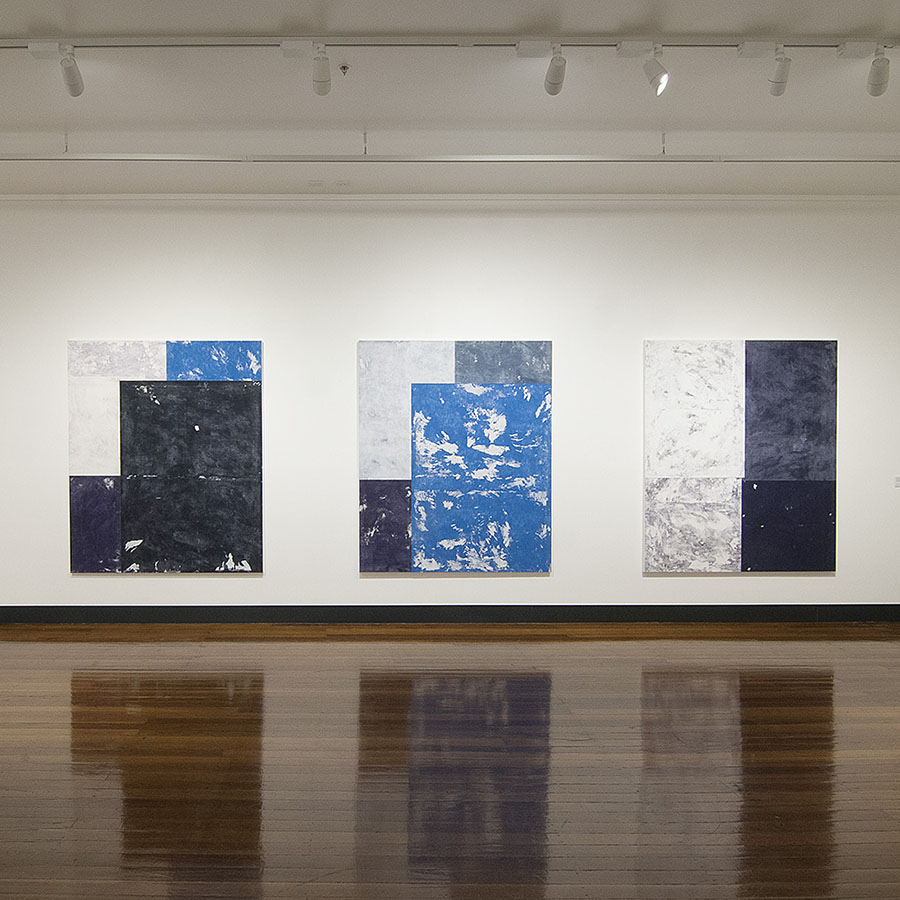
For Nicole Ellis, ‘the idea of construction/destruction was helpful early on. It was instructive in the importance of risk-taking and being prepared to lose something in the process of finding something.’ She adds: ‘I am now interested in the idea of a dismantling/reorganising process, rather than the putting-back together principle of traditional archaeology. I dismantle objects to discover how they are made, to reveal their hidden structure.’ 32
Ellis’ seemingly vaporous distillations emit an energy of transformation. The suspended integers elicit a microphysical propensity, bring to mind the atomic thresholds of visibility whilst equally extending to encompass the immensity of space.
Colour is central to ‘Ellis art. Found colour in the form of used, flawed or modified fabrics provides her with a ready-made palette. Ellis’ configurations of colour elide into voluminous illusions of light. This leads us to recall Lucretius’ account of vision in which air ‘passes through our eyes,’ or ‘luminous air…filled up the pathways of the eye with light.’ 33 It is through light, the enabler of colour and the conduit of an endless stream of atoms, that we are to envisage the contents of the void.
Anthony Oates 2016
Curator, Exhibitions
Australian National University
October 2016
Excerpt from the Repurpose catalogue essay. 2016, p 23
32. Artists correspondence with the author (questionnaire), 15 August 2016)
33. Quote in McGrath, Hugh P, and Comenetz, Michael, Currents in Comparative Romance Language and Literatures: Valery’s Graveyard: Le Cimetiere marin Translated, Described and Peopled (New York: Peter Lang Publishing Inc., 2013) ProQuest ebrary: Web. 1 July 2016, p. 138.
‘Time & Vision: New Work From Australian Artists, Australia Council for the Arts/Acme Studios’, 20 October – 11 November 2012, Bargehouse, OxoTower Wharf, South Bank, London, UK.
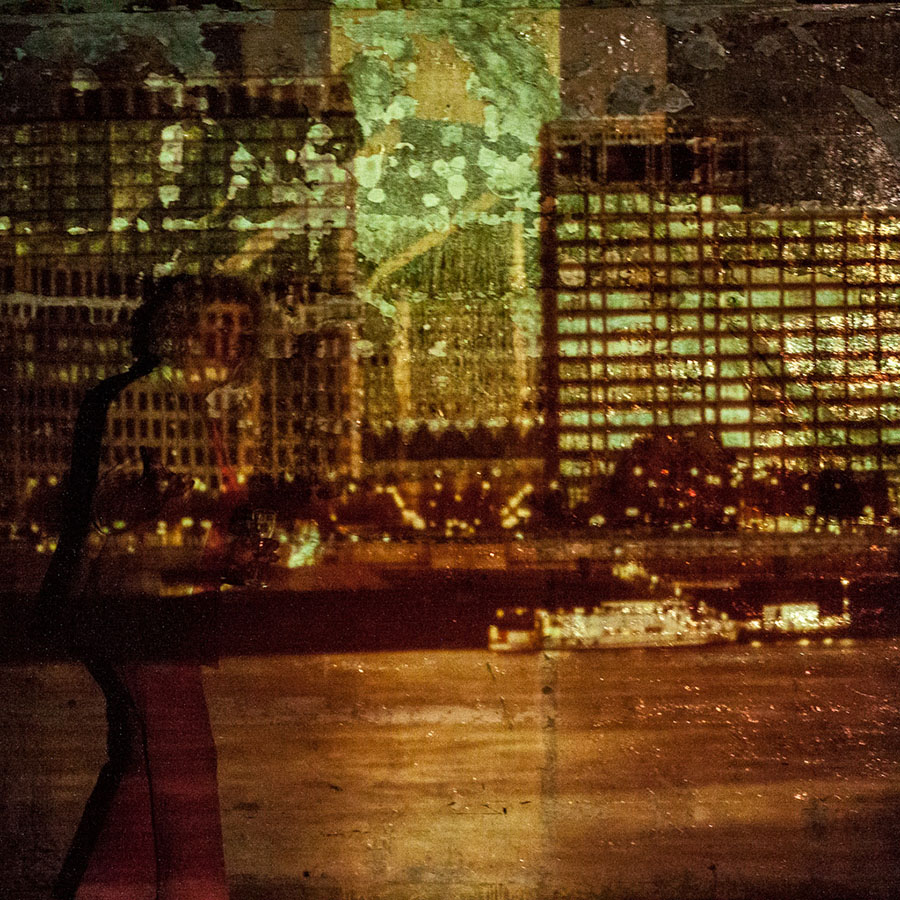
For Nicole Ellis, ‘the idea of construction/destruction was helpful early on. It was instructive in the importance of risk-taking and being prepared to lose something in the process of finding something.’ She adds: ‘I am now interested in the idea of a dismantling/reorganising process, rather than the putting-back together principle of traditional archaeology. I dismantle objects to discover how they are made, to reveal their hidden structure.’ 32
Ellis’ seemingly vaporous distillations emit an energy of transformation. The suspended integers elicit a microphysical propensity, bring to mind the atomic thresholds of visibility whilst equally extending to encompass the immensity of space.
Colour is central to ‘Ellis art. Found colour in the form of used, flawed or modified fabrics provides her with a ready-made palette. Ellis’ configurations of colour elide into voluminous illusions of light. This leads us to recall Lucretius’ account of vision in which air ‘passes through our eyes,’ or ‘luminous air…filled up the pathways of the eye with light.’ 33 It is through light, the enabler of colour and the conduit of an endless stream of atoms, that we are to envisage the contents of the void.
Anthony Oates 2016
Curator, Exhibitions
Australian National University
October 2016
Excerpt from the Repurpose catalogue essay. 2016, p 23
32. Artists correspondence with the author (questionnaire), 15 August 2016)
33. Quote in McGrath, Hugh P, and Comenetz, Michael, Currents in Comparative Romance Language and Literatures: Valery’s Graveyard: Le Cimetiere marin Translated, Described and Peopled (New York: Peter Lang Publishing Inc., 2013) ProQuest ebrary: Web. 1 July 2016, p. 138.
‘Nicole Ellis Artifact’, 10 July – 12 August 2012, James Dorahy Project Space, Sydney, Australia
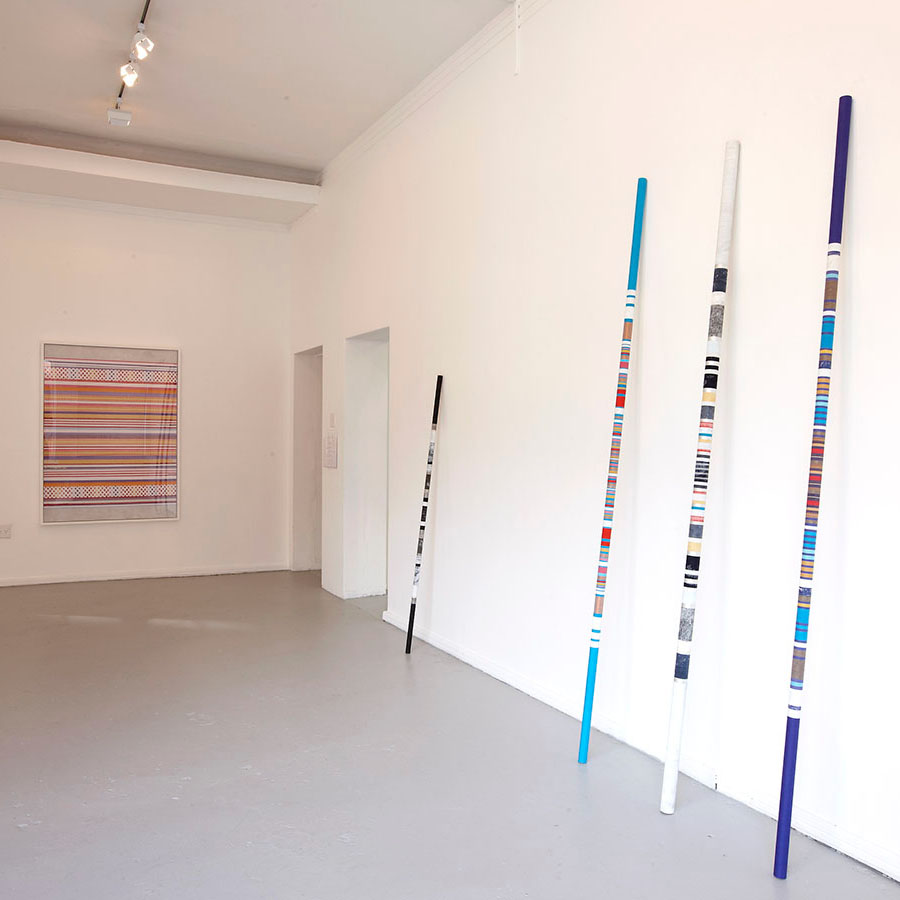
Artifact is an exhibition of new work by Nicole Ellis, which continues the discussion between different histories, industrially designed fabrics and painting. Discarded factory samples and everyday items such as bed covers and cotton sheets are dismantled and recombined with linen remnants, worn out and encrusted with paint and other residues. Large-scale wall works sit behind glass and three-dimensional forms lean against the wall or rest on shelves.
As a form of historical recycling, this mixing of the old and new looks to contemporary archaeology to reveal signs of painting’s recent history and the connections between design and art.
Nicole Ellis
‘Nicole Ellis Fabric Works’, 26 January – 5 February 2011, Factory 49, Sydney, Australia
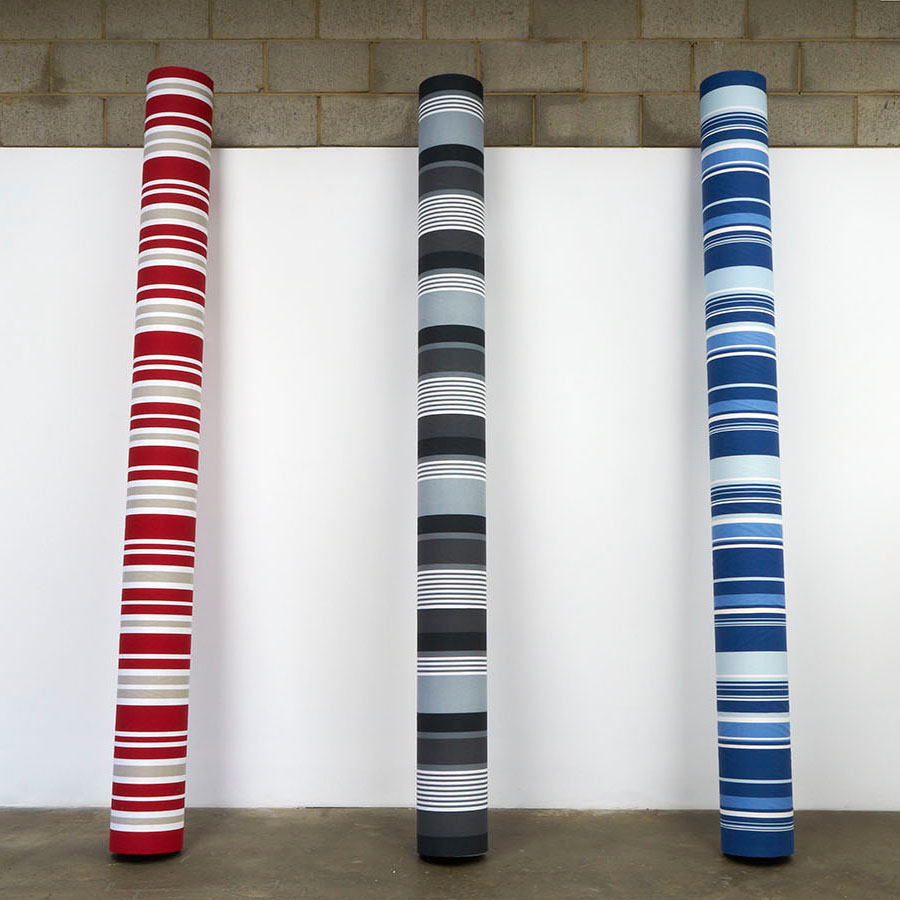
These works continue a dialogue between industrially designed fabrics and geometric abstraction. Discarded factory samples and everyday items such as doona covers and pillowcases are used to create medium sized wall works and larger three-dimensional works, which are free standing or leaning against the wall. Various sized tubes recall the rolls of industrial fabrics seen in countless haberdashery shops and factories worldwide.
Nicole Ellis
‘Transit_1’, 13 December – 22 December 2006, The British School at Rome, Rome, Italy
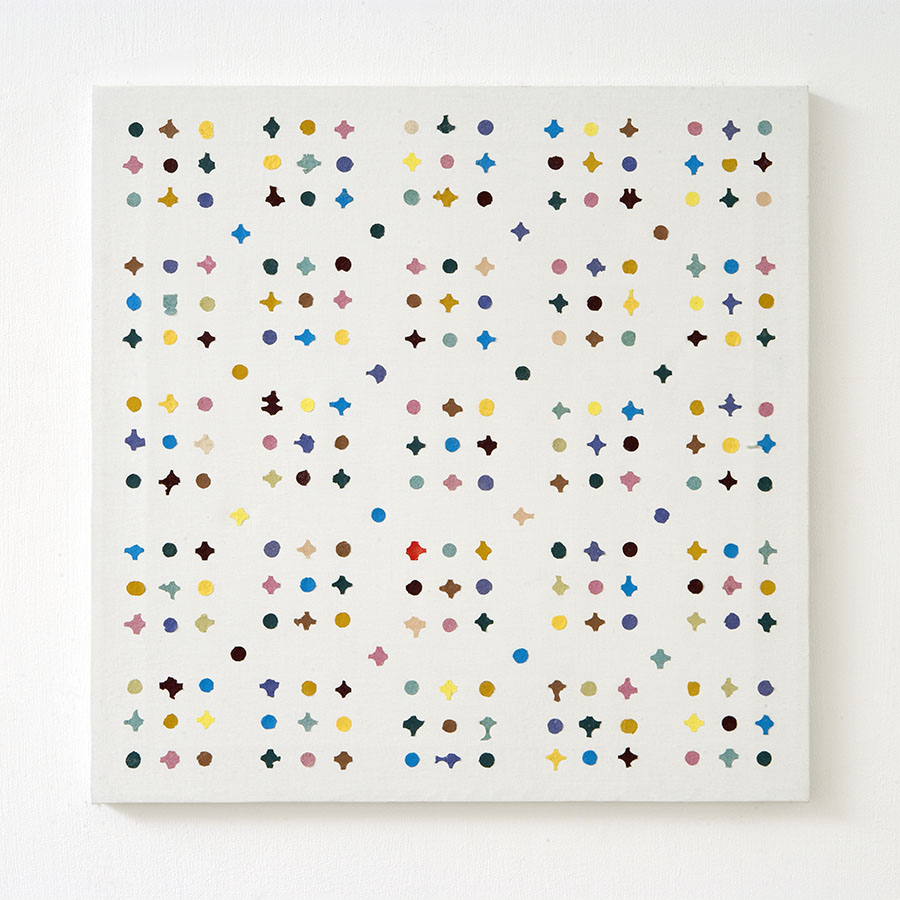
Australia Council Resident Artist, British School at Rome, October – December 2006
Collecting discarded items of Italian design and packaging in Rome, resulted in an installation of fifteen small collage works titled, Cornucopia: small offerings. As a symbol of plenty that reflects ancient and contemporary Rome, the work references traditional artisans techniques and materials alongside modern and contemporary artefacts. It seeks less permanent equivalents for the precious and semiprecious materials of gold, silver, lapis, porphyry and marble, in materials such as: printed paper, tin foil, wax papers and cardboard. Items such as: sweet and cake wrappers, cigarette packets, gold foil, confetti and other consumables packaging, indicate the brilliance and history of (modern) Italian design, against the pervasive problems associated with consumerism, waste and recycling.
Nicole Ellis
Nicole Ellis ‘Stratum’, 28 June – 23 July 2006, Greenaway Art Gallery, Adelaide, Australia
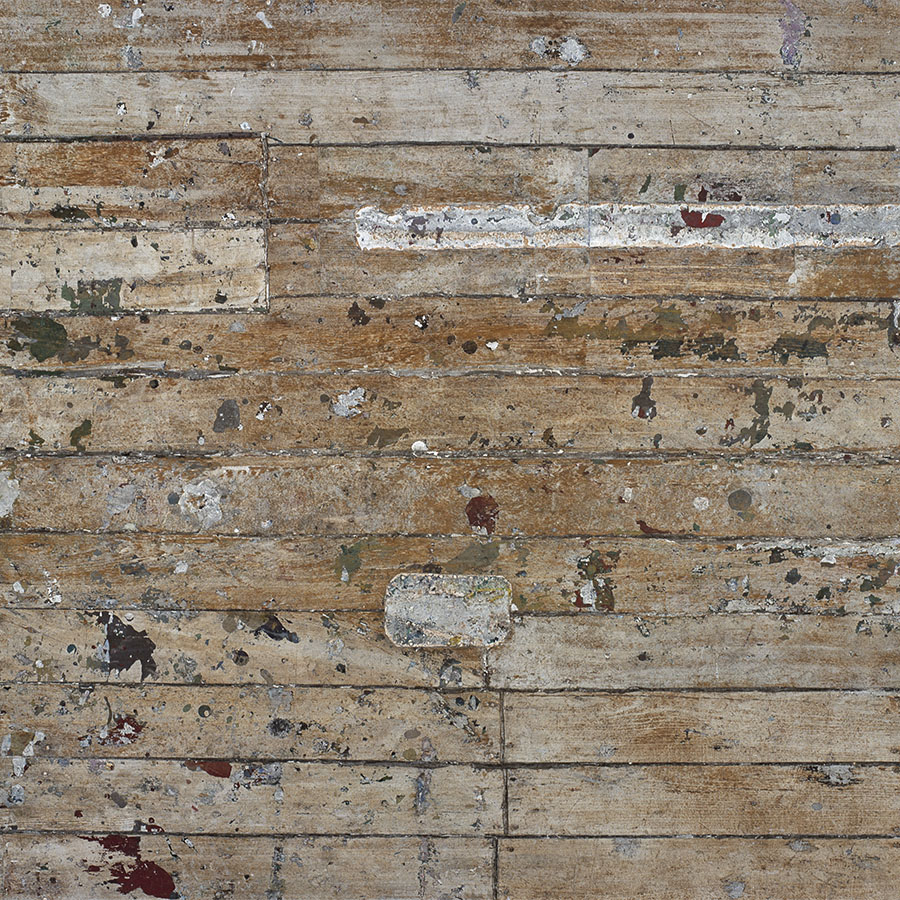
Strata
On entering Nicole Ellis’ Sydney studio the first impression is of a (relatively) clean white space reminiscent of the ‘white cube’ of the typical modernist gallery, a space displaced, as it were, from the ‘impurities’ of life. (1)
Ellis draws, both literally and figuratively, on the ways in which wood is a receptive material, ready and willing to take in the offshoots of human activity: the accidental dropping of oil or paint, for example, or the bric a brac of the quotidian. Recently, she has worked off shelves from an old bakery; some of these images are in the current show, their subtle and linear configurations redolent of large-scale fingerprints. And this seems appropriate, given that careful kneading and shaping of dough go into the finished product.
Ellis often refers to the “built environment”. To be sure, her paintings are mightily indebted to human occupancy. But it is not that of concrete and steel and glass, those materials intimately associated with a modernist aesthetic. If Le Corbusier eulogised about ‘le beauté de beton brut’ (the beauty of raw concrete), then Ellis, in contrast, would I suspect laud the ‘beauty of timber’. And here I use the term, ‘timber’, quite intentionally, since it is wood prepared for building that she turns to. And it is this material that absorbs the traces of human presence. Which sheds light on the title of her exhibition, Stratum. And also on the titles of all her individual works, Strata.
In earlier paintings, Ellis was keen to draw attention to the specificity of ‘her’ floorboards: to their embodiments, so to speak, of the particular histories of past/present occupants of the building. Now, however, she tends to move easily between one site and the other, bringing together different ‘skins’ in a collage-like manner. It might be said that this represents a shift into formalism – as if this is problematic – a return to her paintings of the early 1990s, where geometric and curvilinear patterns dominated. Yet even in those works, like the present ones, Ellis casts her net wider: over a critique of how a painting is made, to be sure, but also over wider issues to do with self and place and histories.
I go back to my initial observations on the clinical ‘white cube’ of the gallery. In very real ways, Ellis’ paintings oppose this aesthetic by bringing the detritus of habitation into its walls. Of course, there is a long history of this in modernism, as Ellis well recognises: the collages of Braque, Picasso and Schwitters or the poubelles (trashcans) of Arman, to name just a few, or, closer to home, the work of Rosalie Gascoigne. I watch Ellis lifting her ‘skins’ from the floor and stapling them onto the walls. There’s a sharp ‘smack’ as the tiny pins penetrate the work. Ellis is unfazed. Simply another addition to what is after all ‘accumulations’.
I’m mindful, too, that this act of ‘displaying’, as is always the case in Ellis’ work, shifts the emphasis from looking down, working in and with her materials, to ‘showing’ the results in ways that look us in the eye. As they will in a gallery. In this transition, Ellis’ beguiling constructions become – emphatically – ‘paintings’. And it is at this point that the teasing barter between work and viewer begins.
Alan Krell
Sydney 2006
1. Brian O’Doherty, Inside the White Cube: the ideology of the gallery space, London, Berkeley, etc., 1986 (revised, 1999).
2. Graham Forsyth, cat. essay, Matter and Mutations (Nicole Ellis and Martin Sims), Singapore Festival of Arts Fringe, 4-10 June 1994. n.p.
‘London: Looking East’, 15 September – 9 October 2005, UTAS Plimsoll Gallery, Tasmanian School of Art, Hobart, Australia
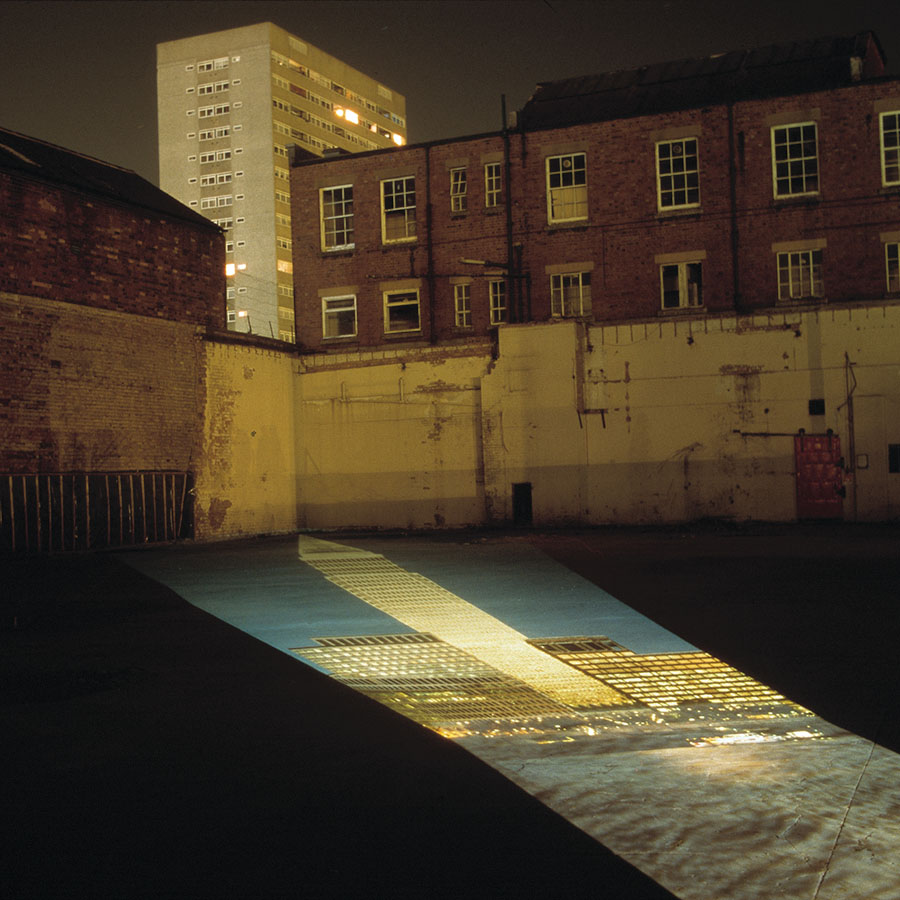
London: Looking East
In 1995, Nicole Ellis was a resident at the ACME studio, (In London) and indeed both she and Rebecca Cummins would feature in a site-specific exhibition, Down the Drain, in Birmingham that year. Nicole Ellis’s work, Historical Fluidity (Nocturnal Emissions) was her first completely resolved work to emerge from the residency. Historical Fluidity was a direct response to living on the Isle of Dogs in the east end which had been undergoing massive urban transformation. Nicole Ellis recalls visiting the east end of London in 1989 and being overwhelmed by the changes that had occurred by the time that she had come back in 1995.
The major work that came out of the residency was eventually shown at the Object Galleries in the Customs House on Circular Quay in 1998. Below the Waterline was a complex installation that included a five metre long replica of the sternpost of an eighteenth century British ship. Patinated panels of copper encase the sternpost and lead Roman numerals are nailed to the post to stand for depth of water displaced as cargo is taken on or off the ship. Nicole Ellis’s aim was to create a work that could a once speak about the ‘body’ of the river (the Thames) at the same time as symbolising the other ‘bodies’ that were consigned to prison hulks on the river before being transported to Australia. Also included in the installation was an image of the deck plan of one of the hulks, Captivity showing how it had been reconfigured to become a prison. The names of the prison hulks – Stirling Castle, Ethalion, Justitia, Lion, Zealand, Thames – become almost like a mantra uttered in the name of the mass of humanity incarcerated within these vessels awaiting a fate, transportation, so inconceivable that it was worse than death.
The residency in London allowed Nicole Ellis to piece together all the complex elements of this installation. In describing Below the Waterline she has observed:
[The work] focuses on the river Thames as a site of historical significance relevant to Australian colonial history; specifically those areas of the river where convicts were kept in floating prison hulks, prior to transformation. It aims to convey the idea of a river, conveying the memory of its historical past, as a trace and to give a corporeal form to that idea, by constructing animated, underwater contour images of the prison mooring stations. The curve of tidal displacement [has been] calculated using a Win Tide program: an equation for the leaving/returning motion, associated with colonial displacement. 8
It is a compelling installation rich in historical nuance and subtlety. Ellis has continued to create works that explore the issues of colonisation, migration and displacement and Bivouac, one of her most recent projects, takes as its motif a fragile Indian beach structure that transforms itself from makeshift dwelling when high and dry to a boat form when the tide gradually submerges the substructure and only the canvas roof form can be seen ‘floating’ on the water.
Jonathan Holmes 2005
Curator
Excerpt from the London Looking East catalogue, University of Tasmania, 2005, p18 – 20
8. Notes supplied by Nicole Ellis, August, 2005
Nicole Ellis ‘Residue’, Tin Sheds Gallery, University of Sydney, 2 October – 23 October 2004, Sydney, Australia
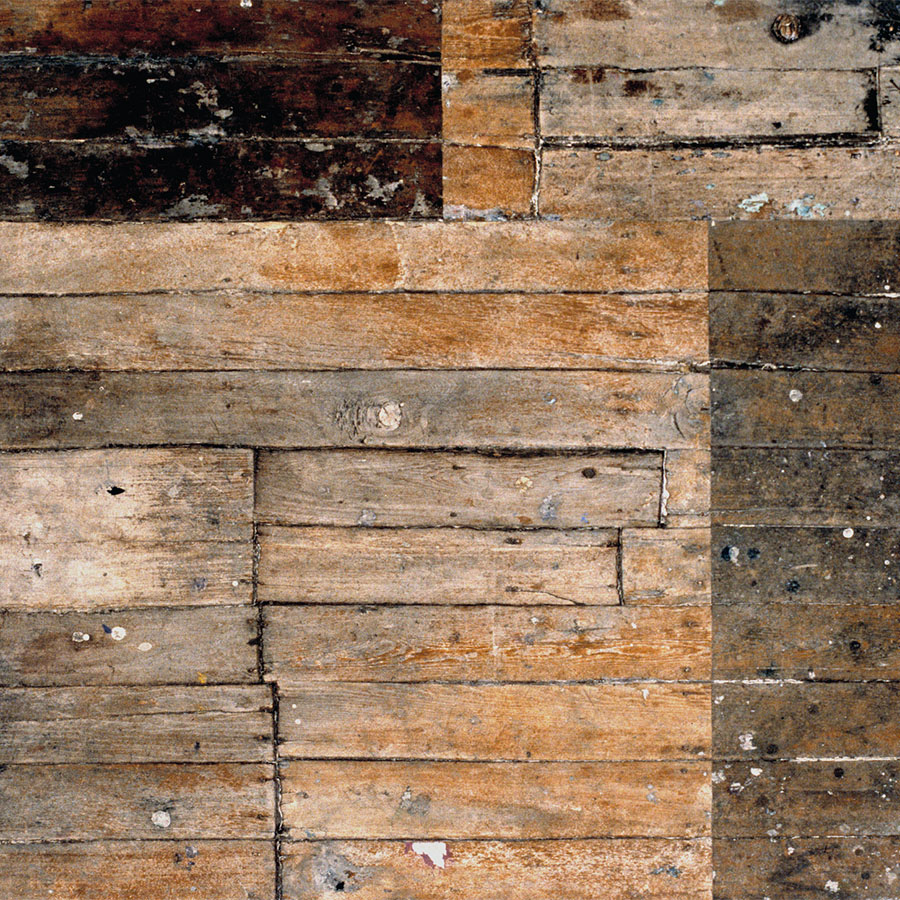
First Impressions
The floor on which we stand acts both as metaphor and medium in the work of Nicole Ellis. Resonant with lingering vestiges of incidents and lives past, old industrial buildings in inner Sydney provide the conceptual basis and physical source of the artist’s ongoing project.
Ellis is not the only artist to recognise the dual artistic and political potential of Sydney’s colonial floors; artists from elsewhere have also been drawn to the history-infused floorboards of our industrial past. In the 1998 Biennale of Sydney, for example, Swiss artist Ariane Epars laboriously scraped away the gunge between the floorboards in a darkened room of the old wharf, permitting horizontal slits of light to expose the relationship between industrial habitation and the ancient harbour below.
Ellis also sees the floor as a barrier between the earth and its human occupants, something fabricated over the ground as if it can be possessed. In a postcolonial gesture of defiance, she erodes that territorial claim by applying an acrylic medium onto the floor then lifting it off, the resultant canvas imbued not only with an impression of the floor, but with traces of its industrial past – globules of paint, splinters and the gouge marks made in the timber by manufacturing machines – and in some by artists who’ve more recently worked there.
As an Anglo-Australian artist attuned to the difficult and significant differences between our Indigenous and colonising cultures, the political underpinning of Ellis’ practice stretches beyond the specifics of her chosen sites and the performance of creating each work becomes an exercise in collecting evidence. While one might argue that she mimics the coloniser by souveniring the past in these works, the artist’s process conjures the transitory nature of habitation, finding affinity with an Aboriginal concept of the land in its refutation of the western belief that land can be bought, sold and owned as if a finite commodity.
Though in their textured, evocative surfaces these paintings are the antithesis of the anonymous subjects and cool surfaces of Minimalism, in some Ellis self-consciously re-creates a geometric patterning by collaging together different sections of floor impressions. As well as commenting on local history and questioning entrenched attitudes to the intrinsic value of place, Ellis’ practice therefore also belongs to an art historical lineage stemming from post-war geometric abstraction. By appropriating its essence and re-casting it into the arena of art, Ellis offers fresh insight into that which has been relegated to the social periphery, whether by Sydney’s capricious urban development or, in using the floor as metaphor, by a political system that continues to ignore and pave over past events and injustices.
At the 1993 Venice Biennale, Hans Haacke destroyed the marble floor of the German pavilion, leaving a pile of rubble in the centre. Beyond its immediate reference to the crumbling of the Berlin Wall, Haacke referred in his accompanying statement to a broader political content, which in many ways parallels Ellis’ own approach to site-specific practice:
“The social and political environment, the symbolic significance – sometimes also the architectonic character of the site – play an essential role [in my work]. These are materials for me, like the physical elements I use – with the difference that they cannot be photographed. That, however, does not diminish their effect. On the contrary. Why else has the “invisible” so often been censored? In the institutions of the art world, as in other branches of the consciousness industry of which it is a part, negotiations take place over how we think about ourselves, about the world, and about our social relations.”
© Felicity Fenner 2004
Nicole Ellis ‘Below the Waterline’, 17 October – 15 November 1998, A Sea Change Sydney 2000, Object Galleries, Customs House, Circular Quay, Sydney, Australia
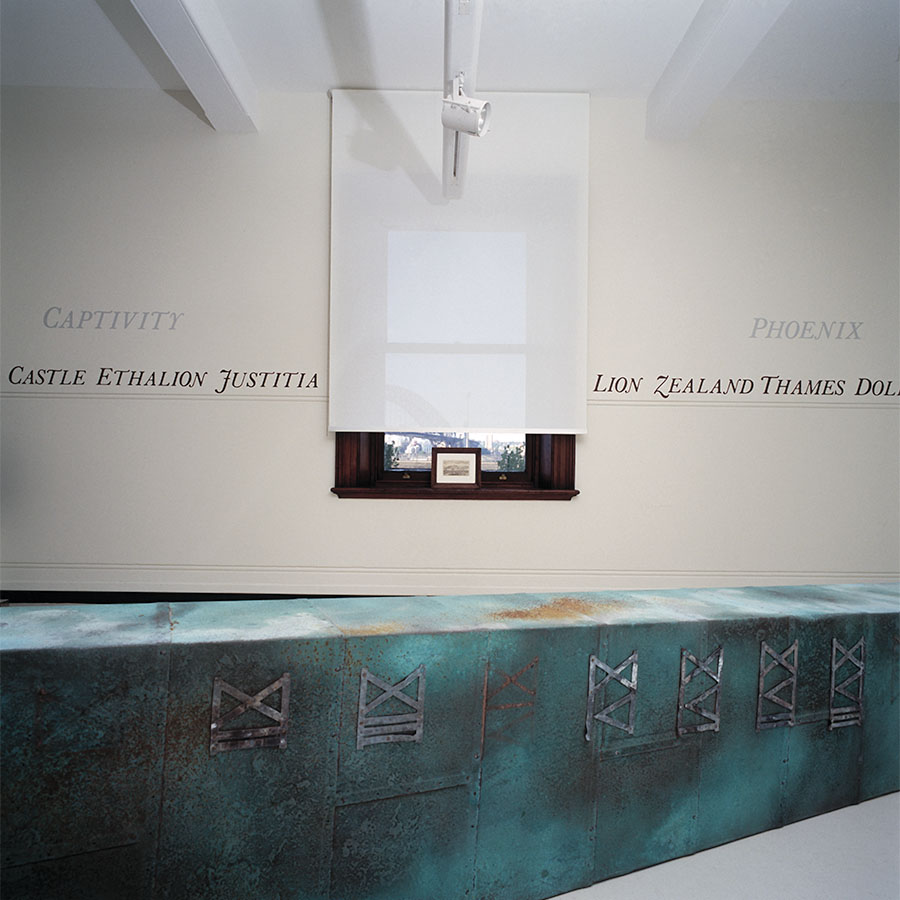
Below the Waterline
The rotting hulks: in the eighteenth and nineteenth centuries, convicts waited out the time between sentencing and transportation to the colony of New South Wales in the holds of wooden ‘man of war’ ships fitted out as prisons.
The rotting hulks had names. Many of the names referred to other places – York, Canada, Stirling Castle, Dunkirk, Chatham-reminding us that these decrepit ships fitted out as holding prisons were both places and non-places. The cargo housed in storage below the waterline was human. For convicts awaiting transportation between 1777 and 1857, the hulk was where-and when- home was irretrievably lost, and the new home still inconceivable.
Men who received colonial convictions after transportation from Britain were held on the Phoenix, moored in Hulk Bay (now Lavender Bay) from 1826 to 1837. In dreadful waiting, they anticipated the terrors of Norfolk Island.
Below the Waterline explores the theme of exile and return, both as constitutive of Australian history and character, and as an imaginative, creative process. The point of departure is also the point of return for the artist Nicole Ellis, who commenced this work during her residency in the Docklands are of London in 1995. The exile and return is both a spatial and a temporal experience.
The lettering recalls the traditional craft skills that convicts and settlers brought here. The Baskerville font, designed by John Baskerville in 1750, was used for maps and charts, and is still used today. Nicole Ellis describes it as ‘a touchstone to the traditional craft of typefounding’. Handwriting and the material trace of hand skill implies an accumulation of human experience and of immersion in everyday life, in contrast to the dehumanising process of detachment from family and community implied by the term ‘awaiting transportation’.
Hand worked lettering is also employed on the copper-clad wooden structure, representing a ship’s sternpost, left on the floor here like an ancient artefact. The vertical line of Roan numerals, hand-cut in lead, recalls the measurements which appeared on the side of ships from the 1680s to indicate draught and displacement of the hull below the waterline. The humanity of the cargo is suggested by the hand-lettering, the dehumanising waiting and liminal status of the convicts is signalled by the starkness of the markings which essentially measure cargo weight.
Displacement is indicated literally by these measurements and metaphorically by the experience of involuntary detachment from home, family and community in anticipation of transportation into an unknown, unimaginable place. The use of metaphor here is apt, since metaphors themselves are displacements producing new figurations. It is unlikely that the convicts experienced their hulk imprisonment or their subsequent transportation as colonial displacement, though they may have registered their exile acutely and been transformed profoundly by their new lives. We make vicarious sense of their lives historically by understanding them in the contact of colonisation. Distance across time is as much the subject of Below the Waterline as distance across space. This temporal distance is conveyed by the patination of the copper sheets, evoking the transformative effects of salt water on the ship’s protective cladding below the ‘wind and water line’.
The connotations of protection implied by the copper cladding, used from the 1750s to prevent wood worm damage, seems ironic in the context of harsh imprisonment. But the copper imparts a particularity to the need for protection from water for both prisons and inmates. The patination evokes the passage of time, the abstract hand of history. The ‘pastness’ of hand-lettering and the patination of the copper both inflect history with a sense of erasure. But in this work, the most poignant reference to the passage of time is water itself. For a brief moment, hulks displaced water. Water becomes a metaphoric medium of history, of memory. As a medium, the ways in which water changes our capacity for sensory orientation is suggestive of the mediation of memory that interposes itself between an event and its recollection. Just as water accommodates and erodes material objects, so the historical memory may absorb and deplete traces of formative events.
A small engraving from the London Magazine, c. 1760, shows convict hulks moored on the Medway river at the Royal Naval Dockyard in Chatham. Its inclusion here as a document that evidences the ‘fact’ of the hulks reinforces the irretrievable loss of material evidence. As an image of the skeletal body plan of Captivity is both instructive in identifying the modifications to the ‘man of war’ ship to form the prison, and a further reminder of the lack of the ‘flesh’ of the ship itself. These emblems are complemented by 3D animations of the mooring sites themselves. These underwater ‘cages’ are inferred from the spot levels of early water charts. From the displacement of water we trace out the presence of the hulks. Their human cargoes long departed on their own journey of exile and ambivalent re-settlement. The hulks no longer force the waters to part and surge around them.
Once again, the co-existence of the original eighteenth engraving with the digital imaging of computer technology reinforces the doubling strategy that underpins this installation: displacement is treated as a temporal notion as much as a spatial one.
‘Sites of memory’ are formed, says Nicole Ellis, ‘where the curve of tidal displacement in a body of water, its ebb and flow, suggests an equation for the leaving-returning motion, often associated with the colonial experience’. In this work, water is the central motif. As an image, it connects the rivers of the great cities, such as London, and bays around which embryonic settlements where formed, such as the town that grew on the shores of Port Jackson, on the precise site of this exhibition. Noting that former seamen made up a very large majority of the first male convicts, Alan Atkinson, comments in his recent study, The Europeans in Australia: ‘settlement was a product of maritime life and therefore shaped very much by the sensibilities of seamen’ 1. On the water and on its banks and shores, history is shaped by the lives and activities of men and women – then and now – here and there. But Ellis asks, how does water carry the memories of those who lived on the shores and even on the water and below the waterline, as our convict forefathers did? Toni Morrison writes of the Mississippi River in flood that it is remembering where it used to be before it was ‘straightened out’. All water has a perfect memory and is forever trying to get back to where it was’ 2. As a metaphor, water implies that memory shares its fluidity, its ebb and flow, its insistence and its inexorable erosion of even solid rock.
This work builds on previous works by Ellis, to set up histories for which little material evidence remains in the public domain and to re-people them: to claim history for human experience and agency. Recently, her public artwork Rollcall (1996) at Casula Powerhouse pays tribute to all those people who had worked at the Liverpool Power Station between 1952 – 76. Other works include her ‘skin works’, in which the imprints and residues of floors were lifted to become wall or floor pieces which resonated wit the life of the shearing shed or clothing factory and artists’ studio 3. The underpinnings for these recent installation works can be traced through the linear modelling and the subterranean threads figured in her paintings, at least from work shown in Discontinuous Proportions (1990).
The choice of the Customs House on Circular Quay reinforces the thematic considerations of her work. Customs House is directly linked to the English mooring sites as it was built in 1845 on the site of the landing of the First Fleet. And like the hulk prisons, Customs House was to become a site of transition and waiting, marking the beginnings and ends of the journeys of exile and return.
Professor Sue Rowley
October 1998
School of Art History and Theory
The University of New South Wales College of Fine Arts
1 Alan Atkinson, The Europeans in Australia: A History, Volume 1: the Beginning, Oxford University Press, Melbourne, 1998, p. xvi.
2 Toni Morrison, ‘The Site of Memory’, in Russell Ferguson, Martha Gever, Trinh T. Minh-ha and Cornel West, Out There: Marginalization in Contemporary Cultures, The New Museum of Contemporary Art, New York and MIT Press, Cambridge and London, 1990, p. 205
3 See Nicole Ellis, Arrested Sites (exhibition) catalogue, Hyde Park Barracks Museum, Sydney, 1993.
‘Nicole Ellis Engram’, 3 September – 4 October 1997, Greenaway Art Gallery Adelaide, Australia, 1997
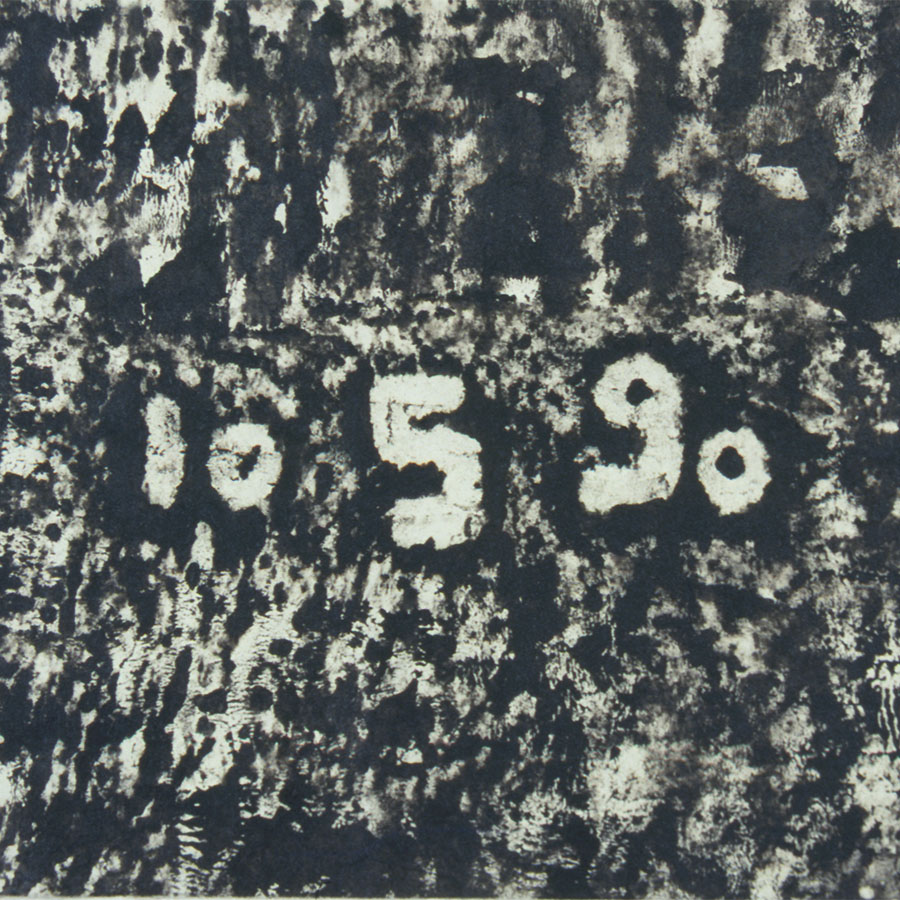
Engram
Nicole Ellis’ work investigates the material, cultural and historical traces which register a human presence. Involving painting, installation, historical record, architecture and archaeology, layers of association are invoked through the interrelation of material and provoke a subtle questioning and stimulus for the memory.
Subject to Wear and Tear from an earlier series, comment on the obvious signs of wear apparent in the paint skins, and the people who ‘worked’ on the floor boards being subjected to wear and tear.
Nicole Ellis
Nicole Ellis ‘Stripped Bare’, 22 March – 16 April 1995, Greenaway Art Gallery, Adelaide, Australia, 1995
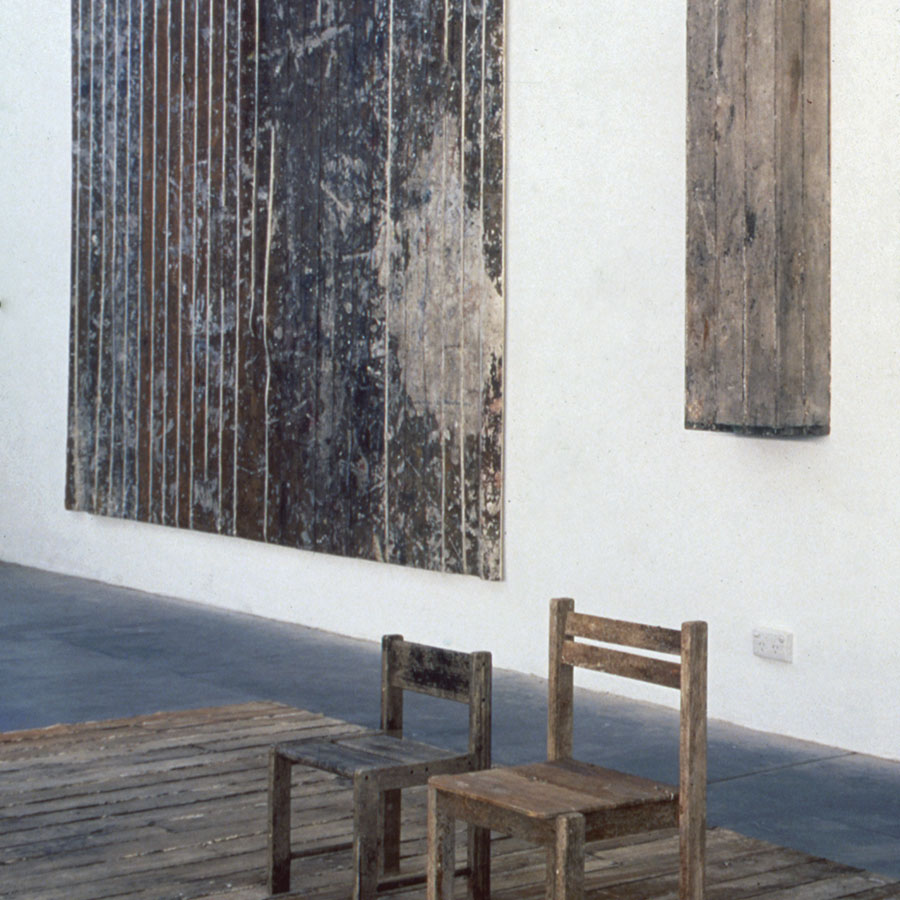
Under my skin
Stripped Bare is a series of large flat surfaces or skins stripped off old wooden floors with the use of acrylic emulsion, a similar technique to that used by German artist Nikolaus Lang in his works which strip a layer of the surface off the sunset-coloured cliff at Maslins Beach. If you have ever had a splinter stick under your fingernail from an old wooden floor, Ellis’ work can make you feel a bit edgy. The sense of touch as much as the eye is called on in these works. Getting this close to a floor usually means you are scrubbing it or waxing it. Site Work 3 (#4) is the fourth to be lifted from a particular site and thus is blond rather than grey-brown. Thus is becomes possible to distinguish between layers or levels of floor, to make out trapdoors and stains, to remember peeling skin in the bad old days of sunburn, to think of spills, of the residue from work, the marks that you get on your body from certain chairs and the stiffness, the pins and needles from sitting on the floor. Ellis has commented: “My work seeks to reaffirm the critical status of the body” and it would seem to return a sense of daily corporeality both in a sense of discomfort and in collected experiences over time.
Stephanie Radok
The Adelaide Review April 1995
‘Nicole Ellis Arrested Sites’, 4 October – 24 October 1993, Hyde Park Barracks Museum, Sydney, Australia
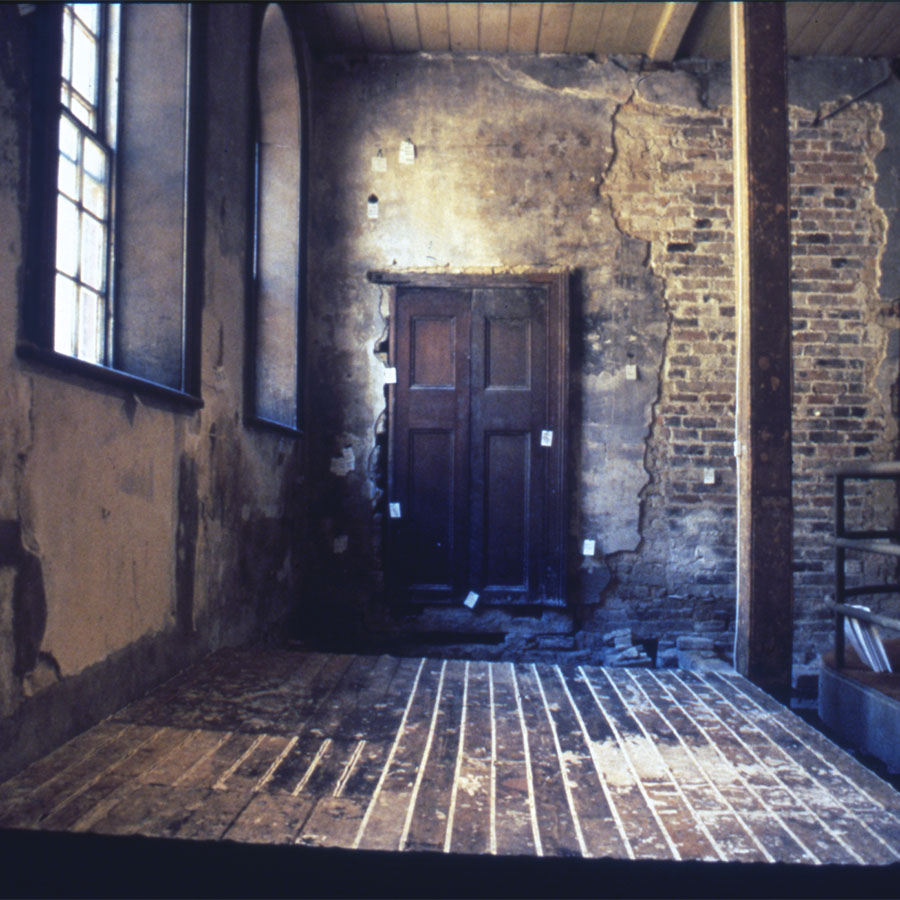
Into these environs Nicole Ellis has brought paintings that allude to the workaday lives of other people on different circumstances, from elsewhere in the city. Her “paint skins” comprise the marks and debris of a one time bustling Oxford Street sewing rooms, and artists’ studios for the past two decades…soon to be remodelled. Located at key points through the museum these enigmatic concretions interact with and derive piquancy from layers of distilled history of the Hyde Park Barracks.
Lynne Collins 1993
Curator, Hyde Park Barracks Museum
Nicole Ellis’ new work continues her preoccupation with the way we create hierarchies of attention. But while her painting of a few years ago did this by presenting a literal absent centre, her new work takes up this concern more subtly and thoroughly.
These strip paintings and hangings side-step the question of representation – which in itself presupposes basic protocols of attention – by using the particular properties of acrylic paint as a medium for something like two-dimensional casting. I say ‘something like’ because ‘casting’ like ‘imprinting’ doesn’t quite describe the process involved. The paint reproduces the patina of the floorboards by imprinting the grain of the wood and absorbing the substances that have stained and marked it. So one board, or group of boards, that have been repeatedly “painted” in this way produce a series of acrylic skins on which the stains and marks grow fainter while the grain of the wood remains – like a photocopier producing ghostlier images until only the white paper is left.
The method produces work where what’s represented – or reproduced – is truly random. We are forced to focus on the fact that there is nothing to focus on. But the works are evocative. I think it matters little that they are taken from the floor of a building that has been used as an artist’s studio for twenty years. Or that the building itself was once part of the rag trade. These paintings could be from any work place where results of waste, mistake and accident aren’t cleaned up. Where the act of labour cannot be cleaned up.
Which brings me to the title of this piece. In Calvinist theology God creates many more people than he intends to save. Those he does save are the Elect, like the paint that gets on the canvas. But those he turns His Face from are the preterite – the ones he disregards. We operate on a similar economy of focus and waste and these works are stark embodiments of its results.
John Forbes
Melbourne 1993
Selected Press
‘Nicole Ellis Preview’, Artist Profile Issue 37, Anna Johnson, 30 March 2017
‘Repurpose Interview Nicole Ellis’, ANU Drill Hall Gallery, Tony Oates, 2016
‘Time & Vision Interview Nicole Ellis’, Visual Arts Australia, VAAus, Bayley, P., 2013
A Water or a Light | Artlink Magazine, Issue 21:1, Stephanie Radock, March 2001
The Realness of Veneer | Artlink Magazine. Issue 15:2 & 3, Cath Kenneally, September 1995



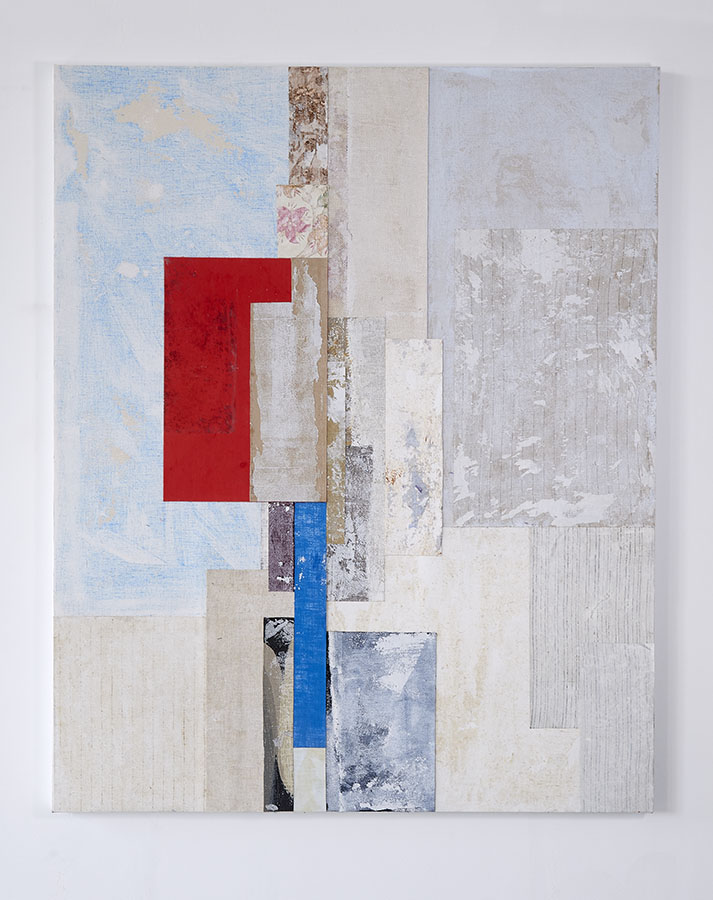
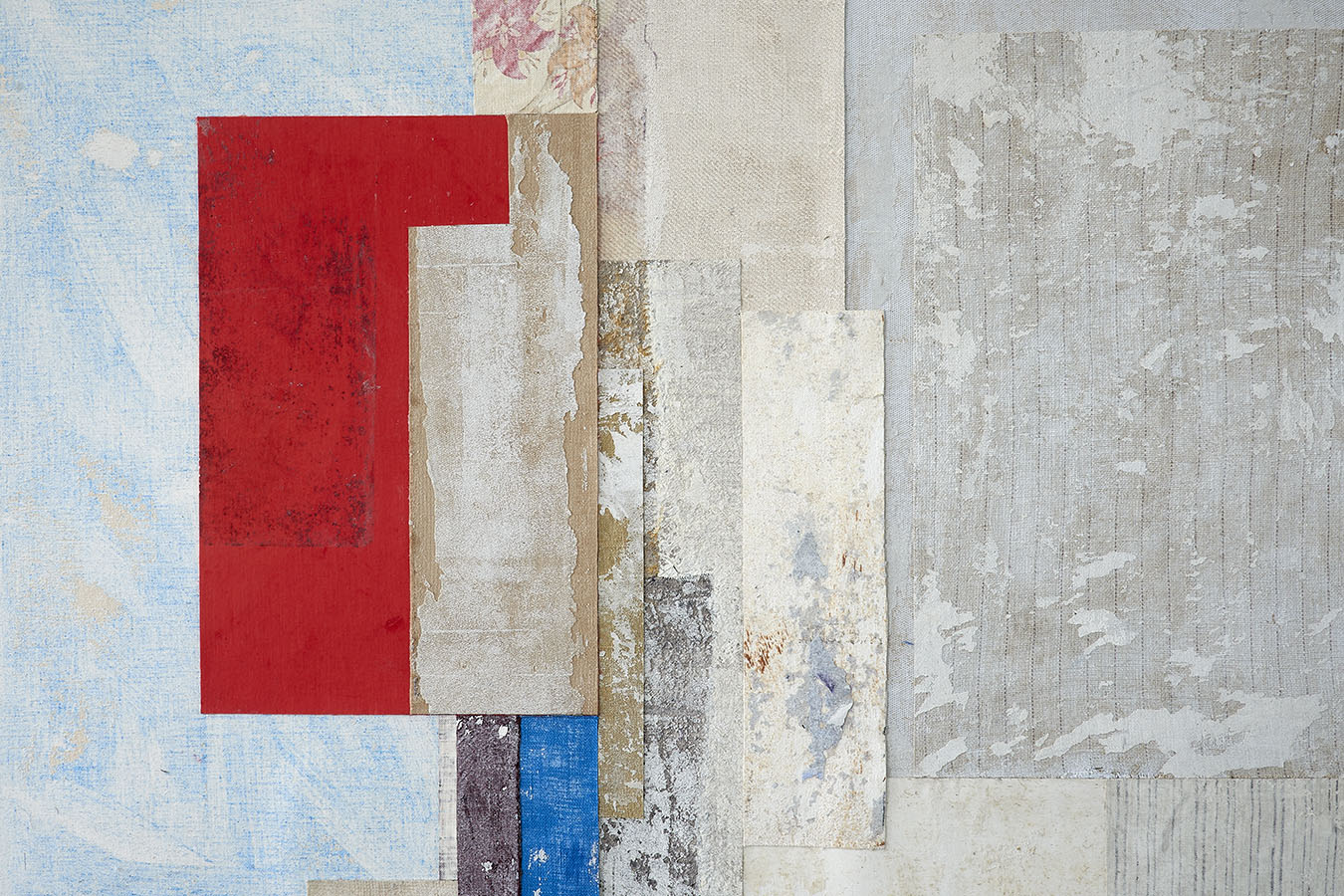

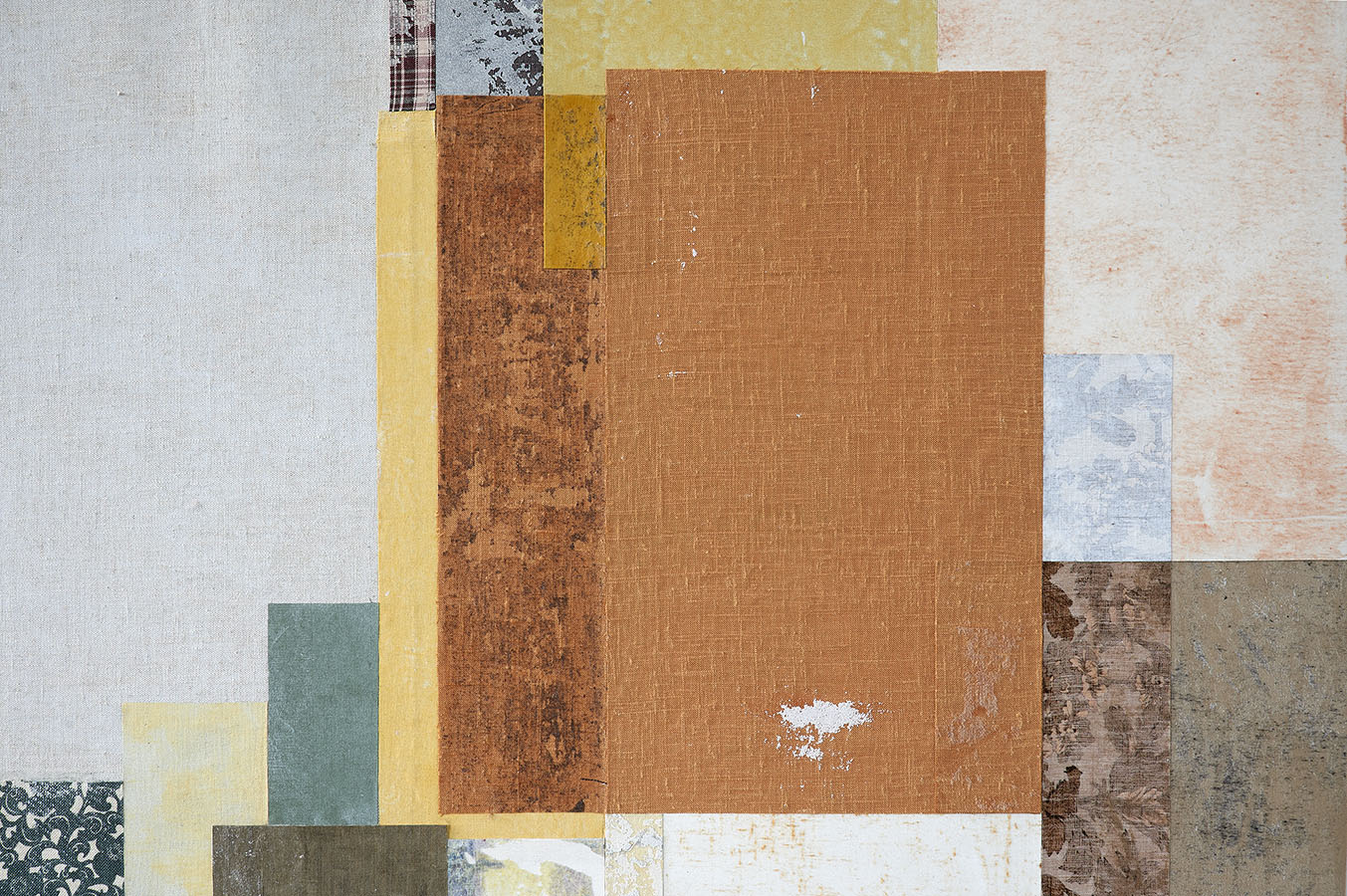

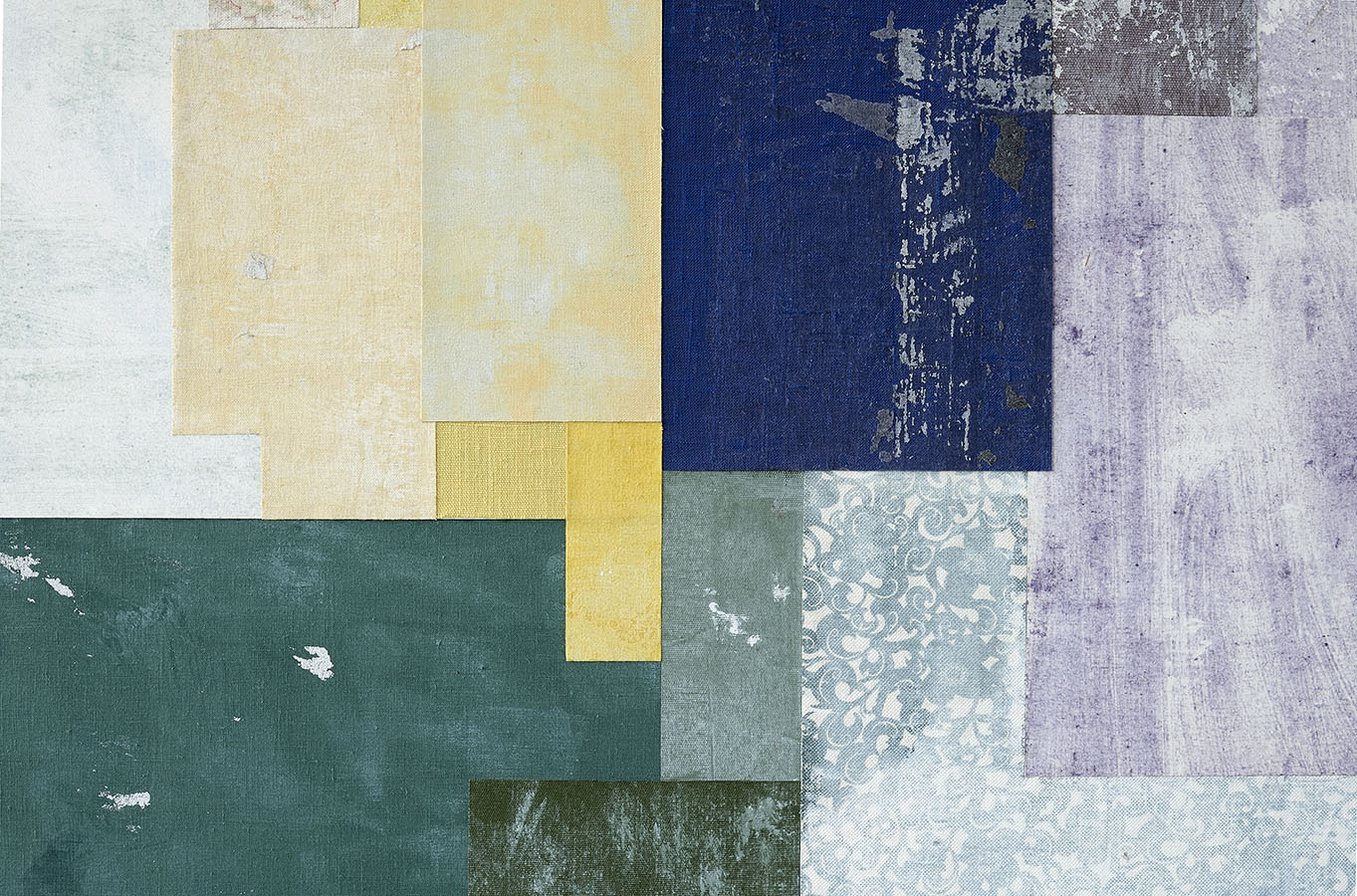
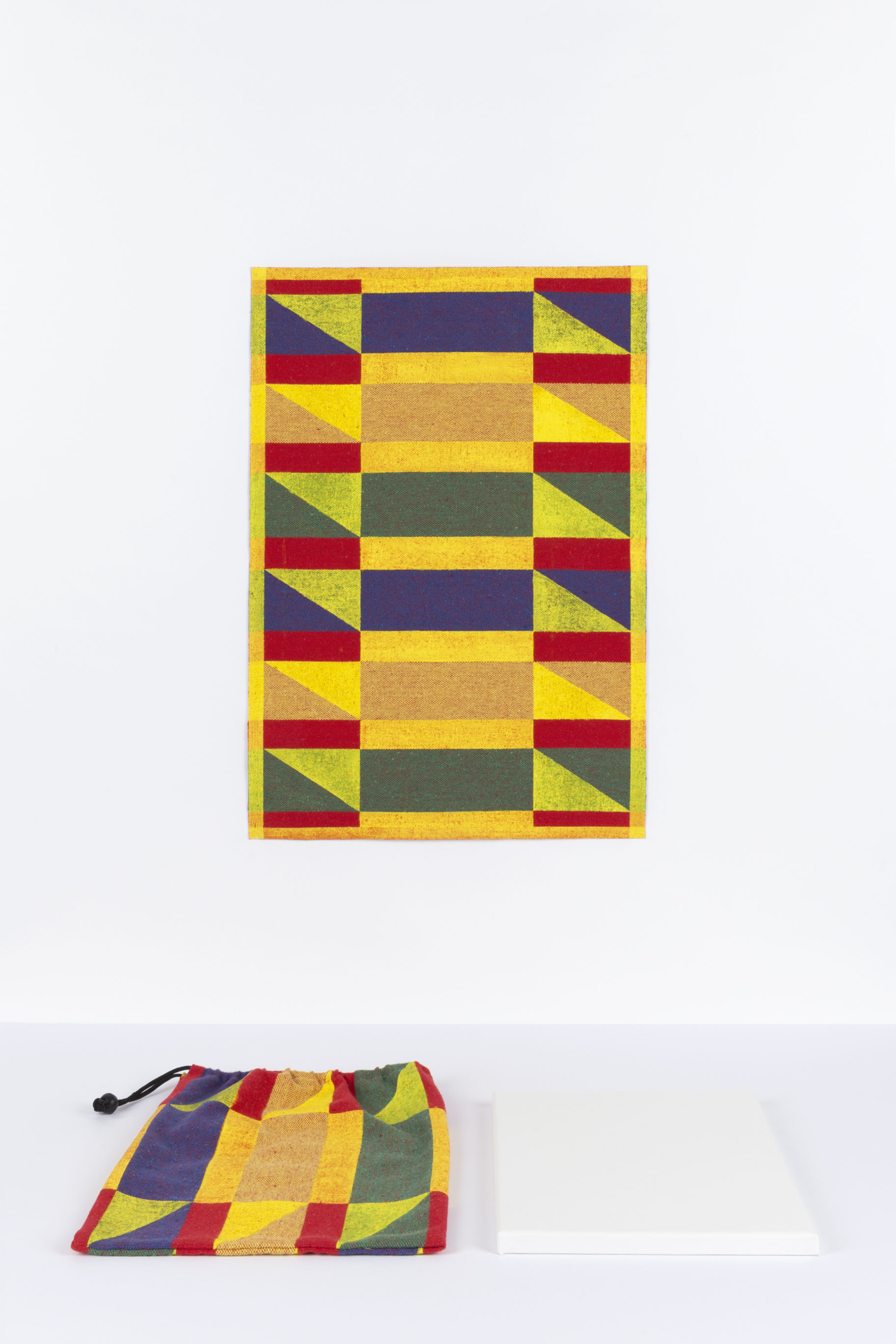
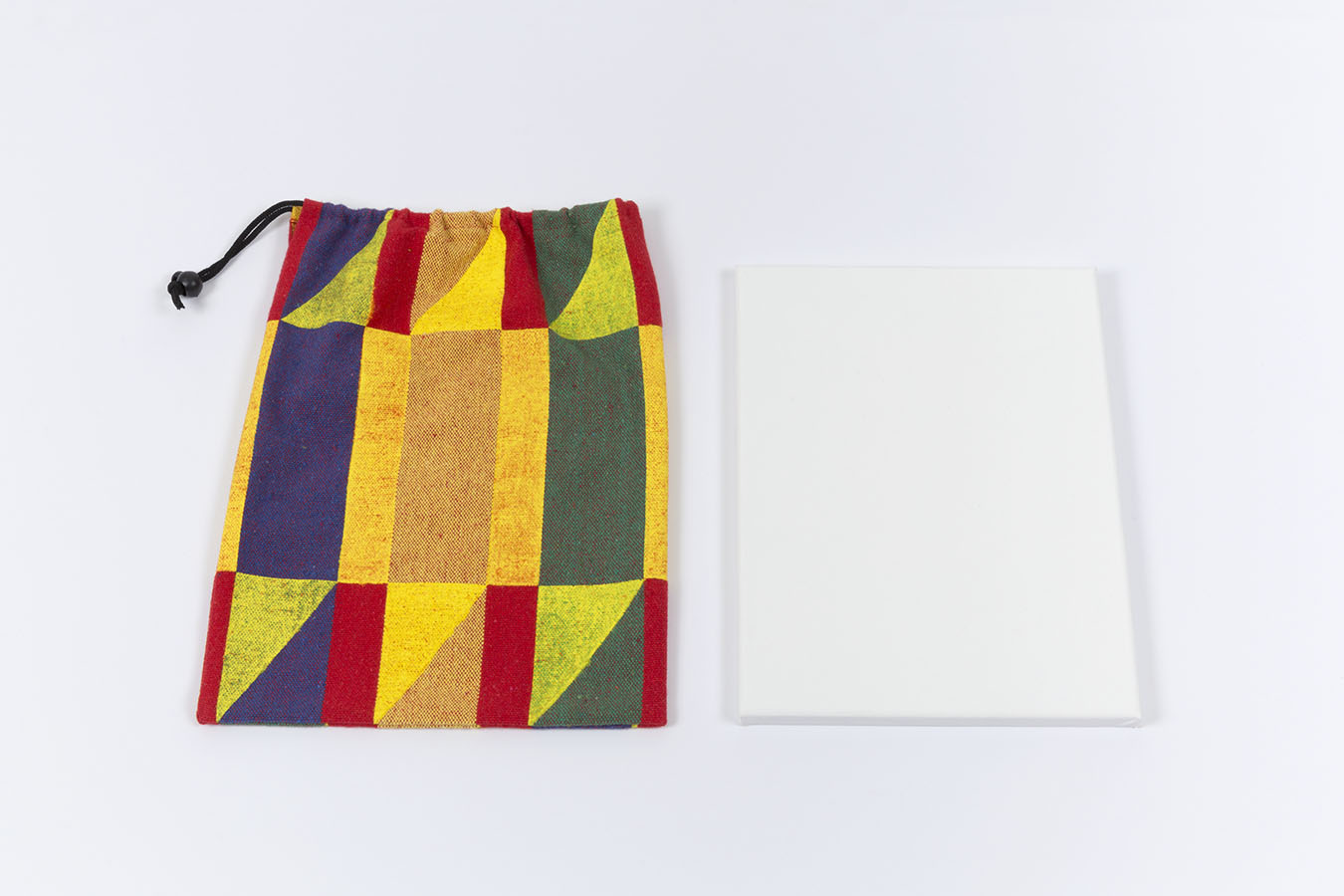
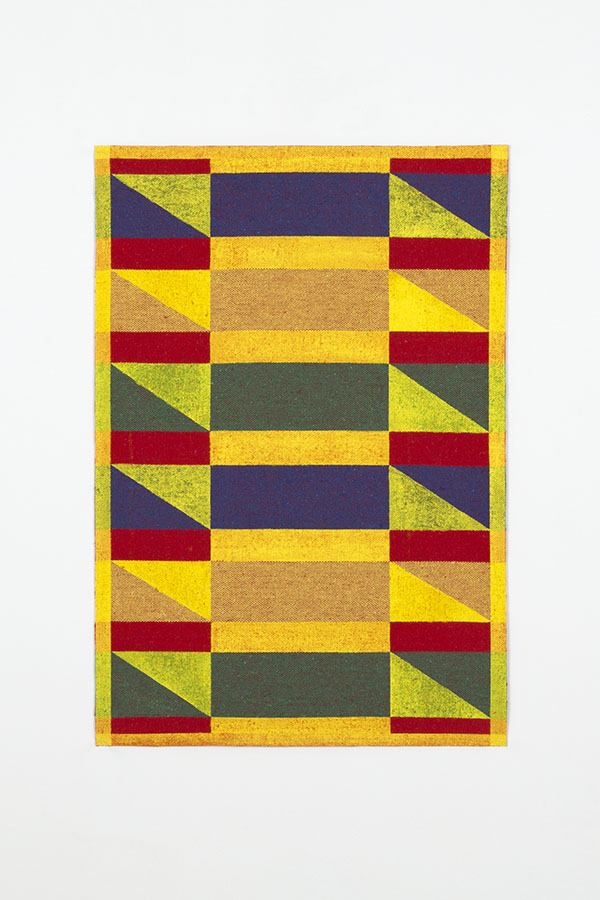
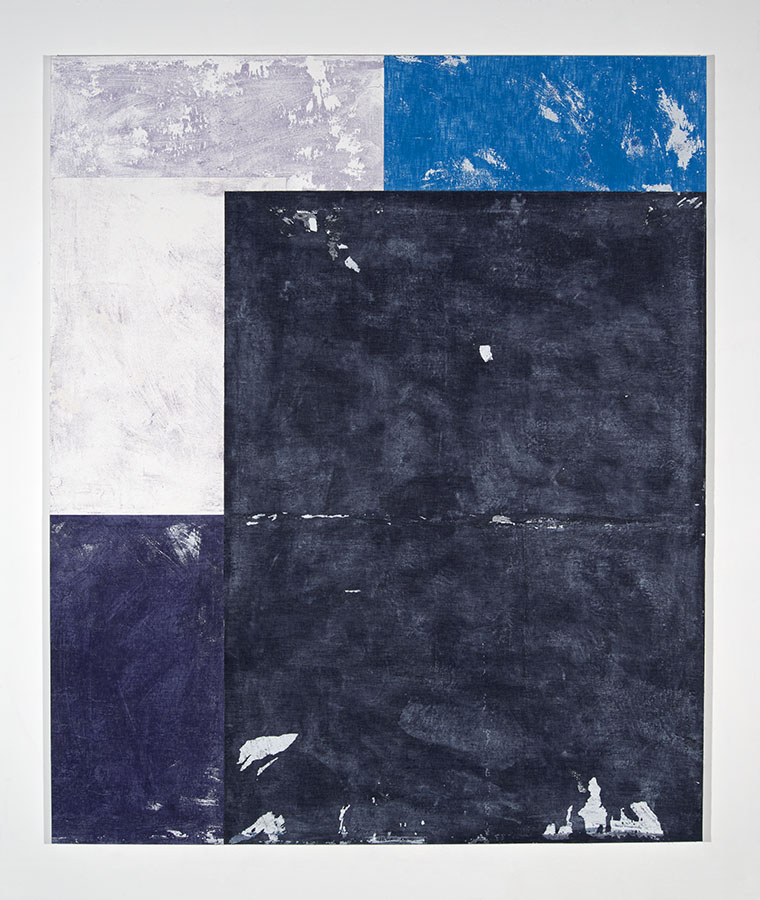

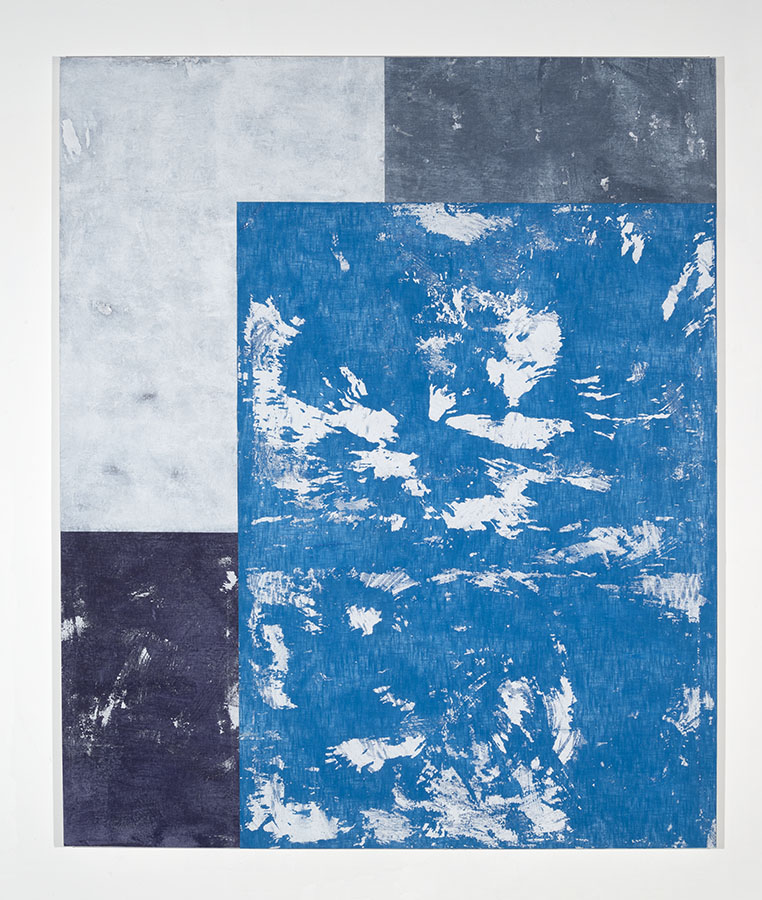
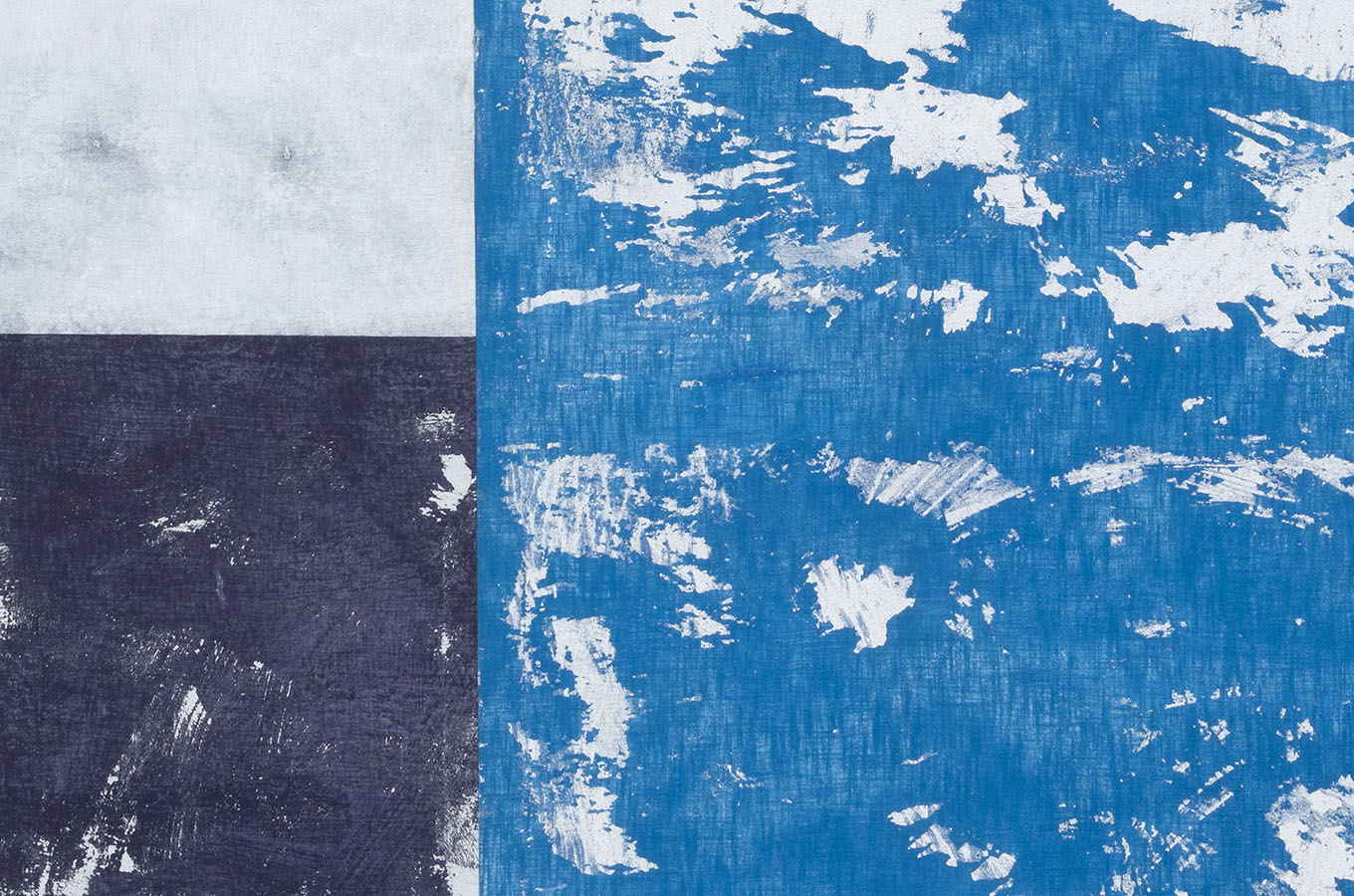
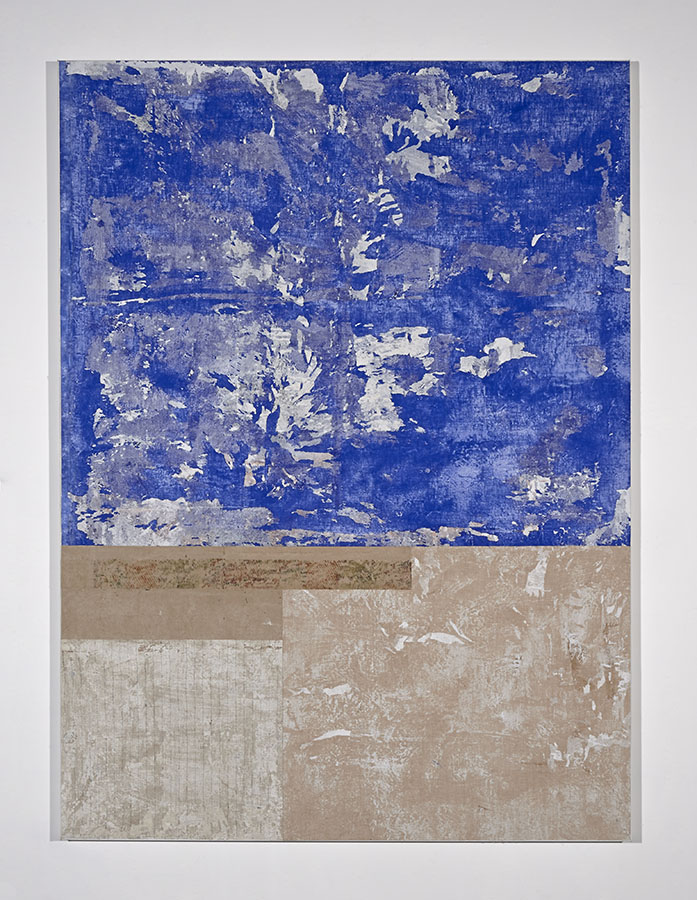
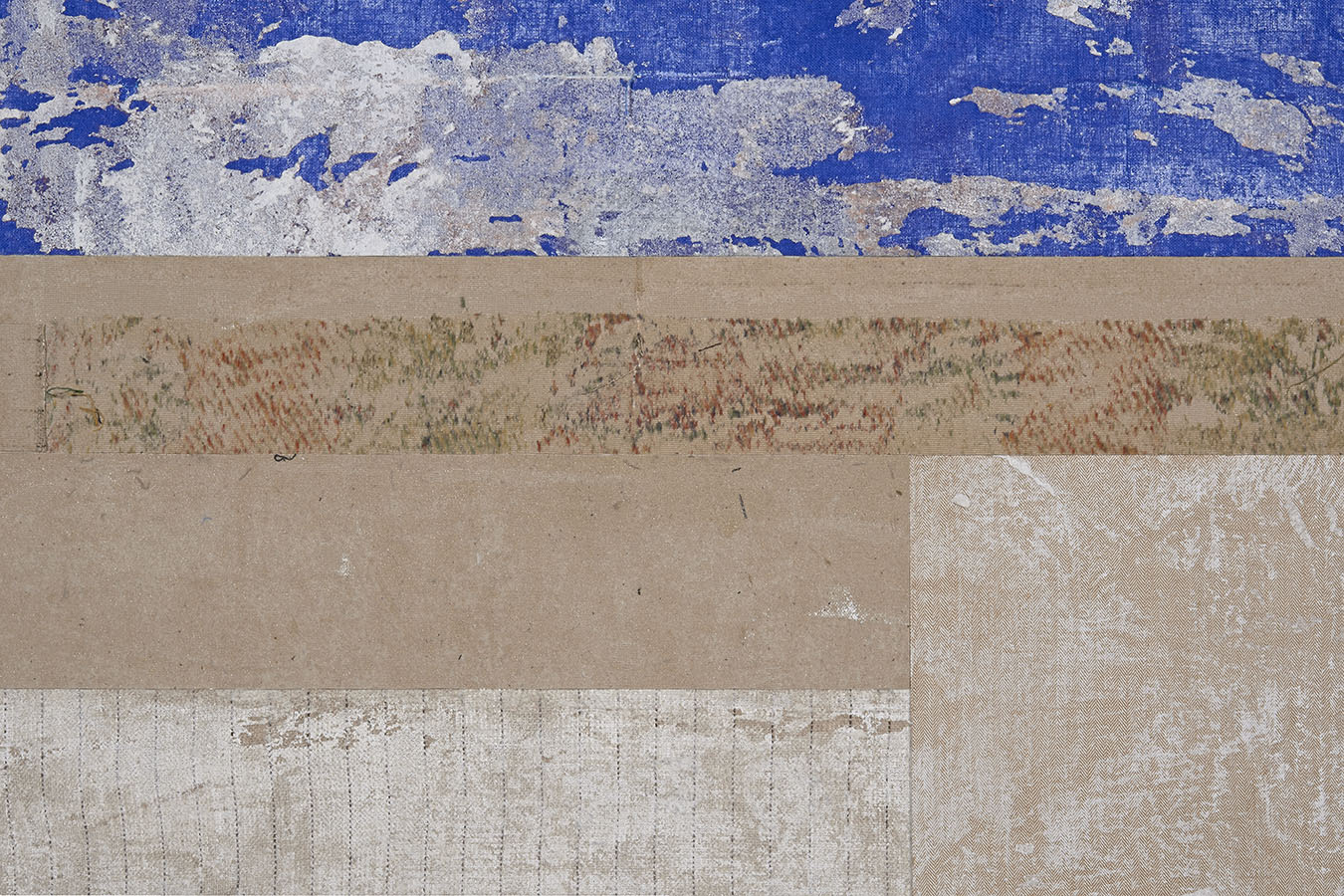
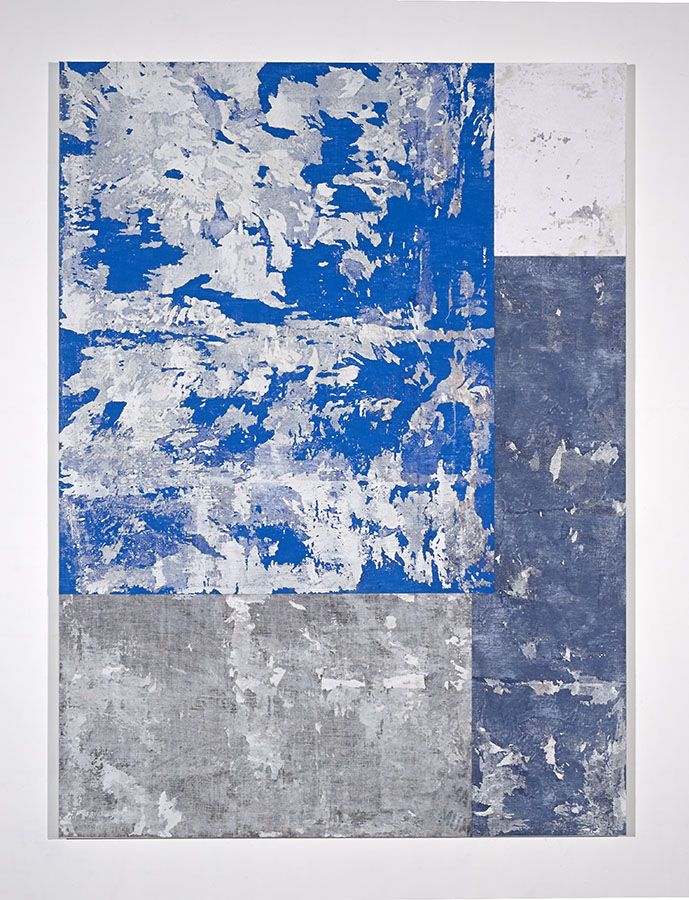
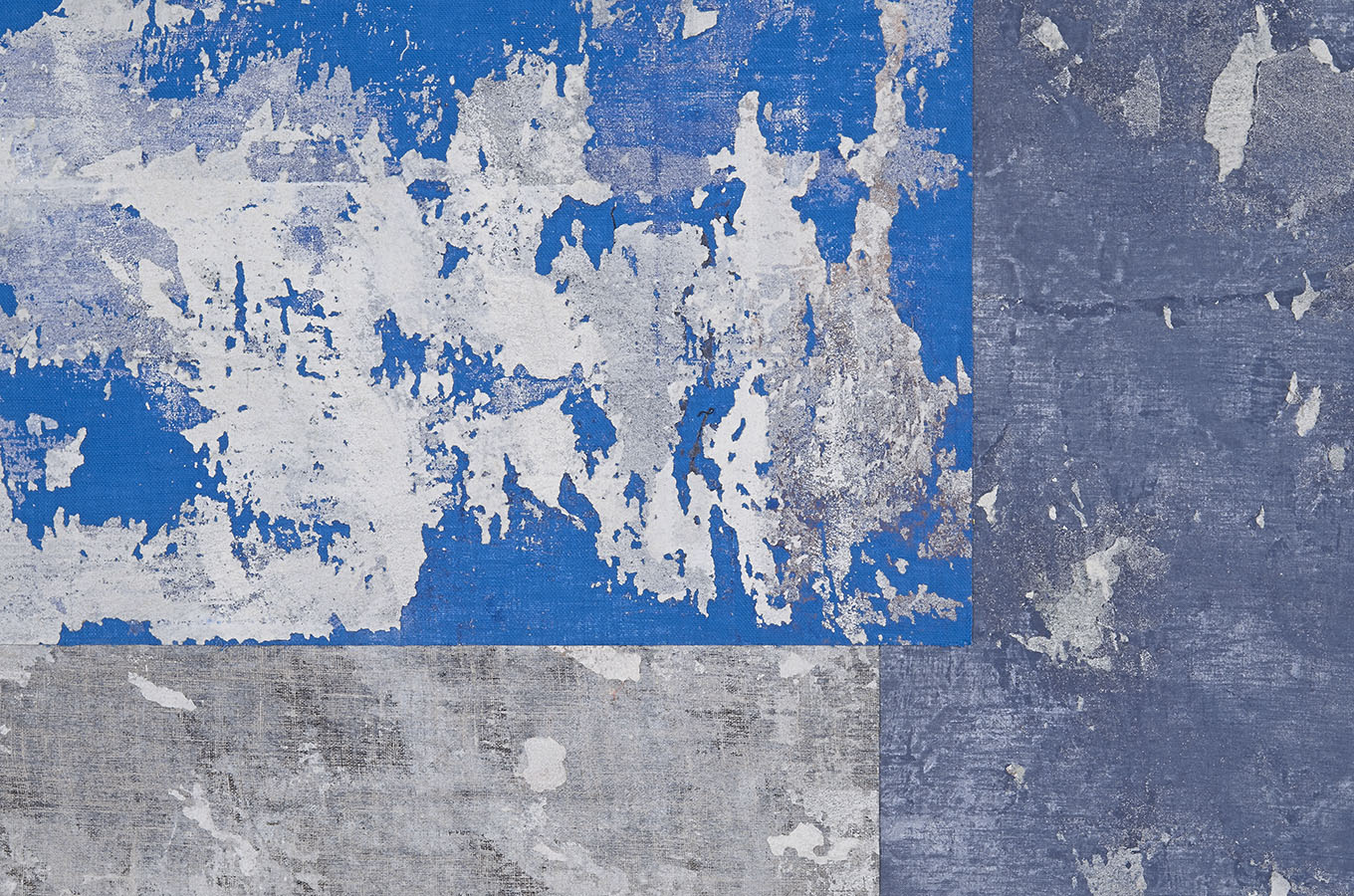
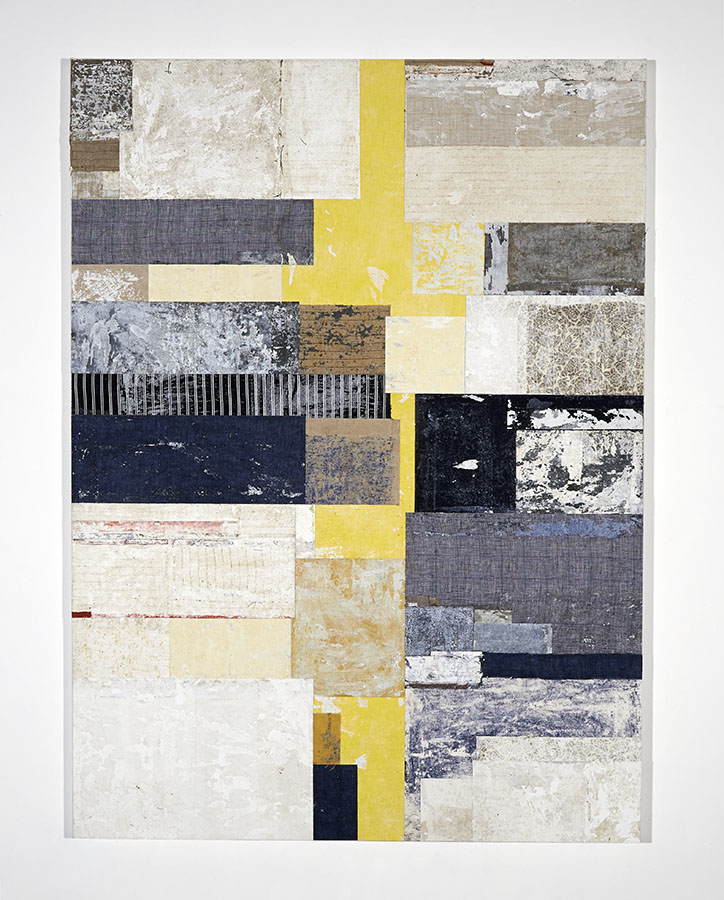

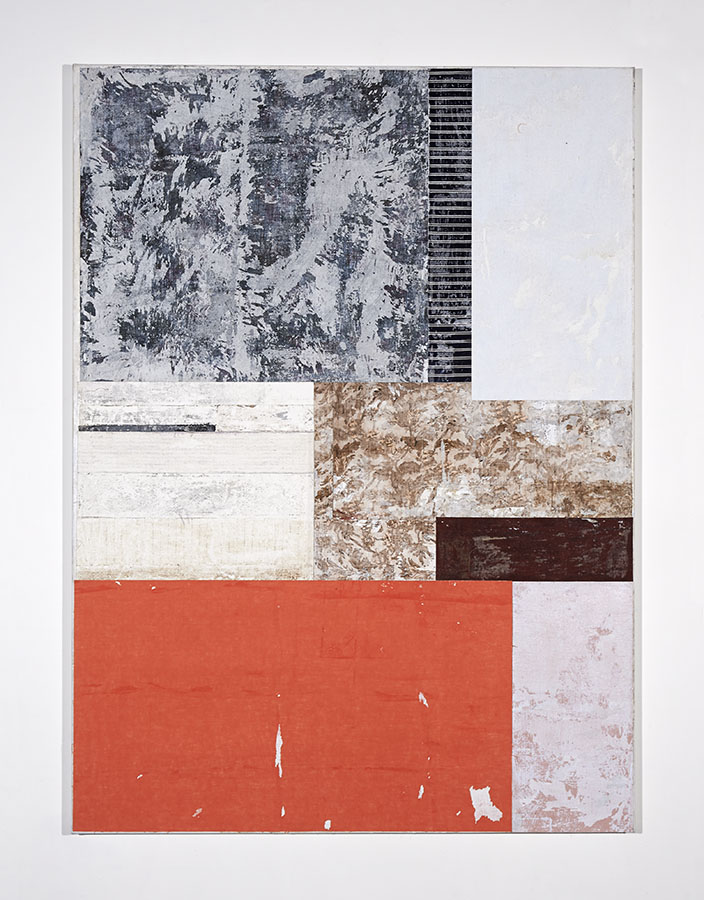
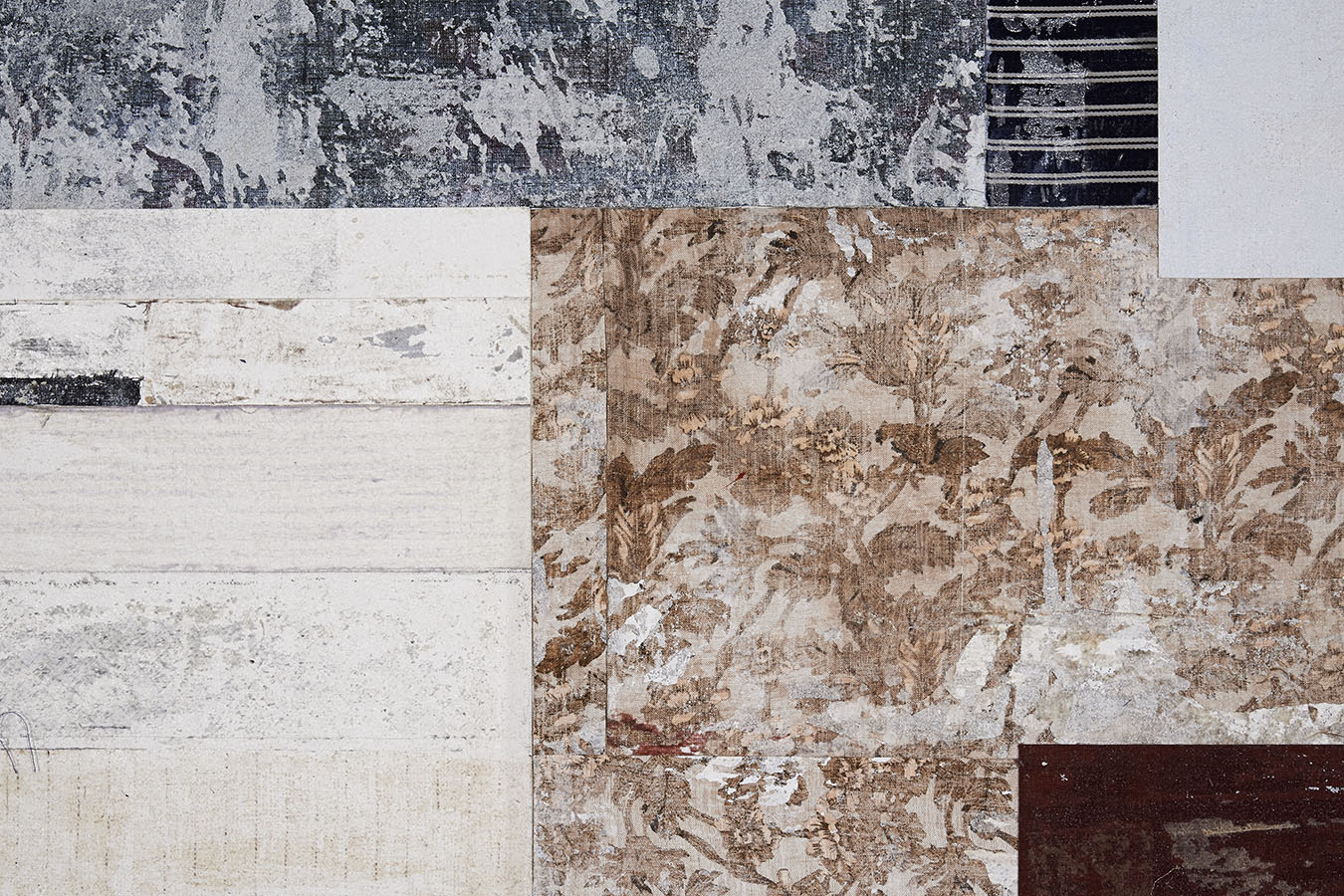
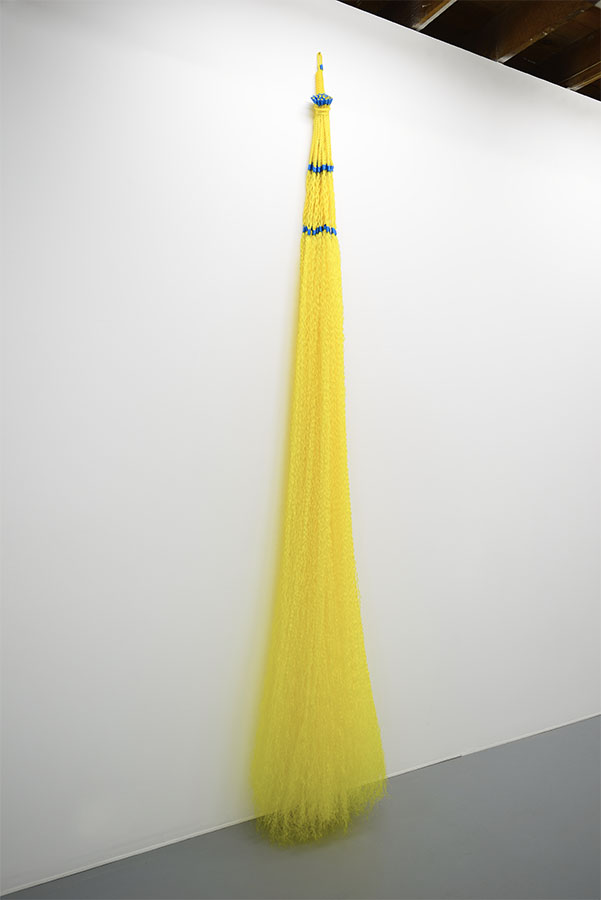
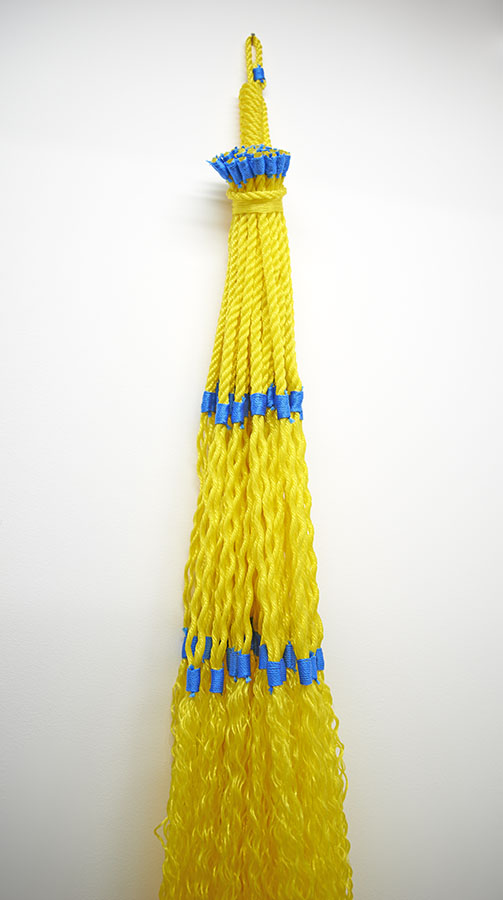
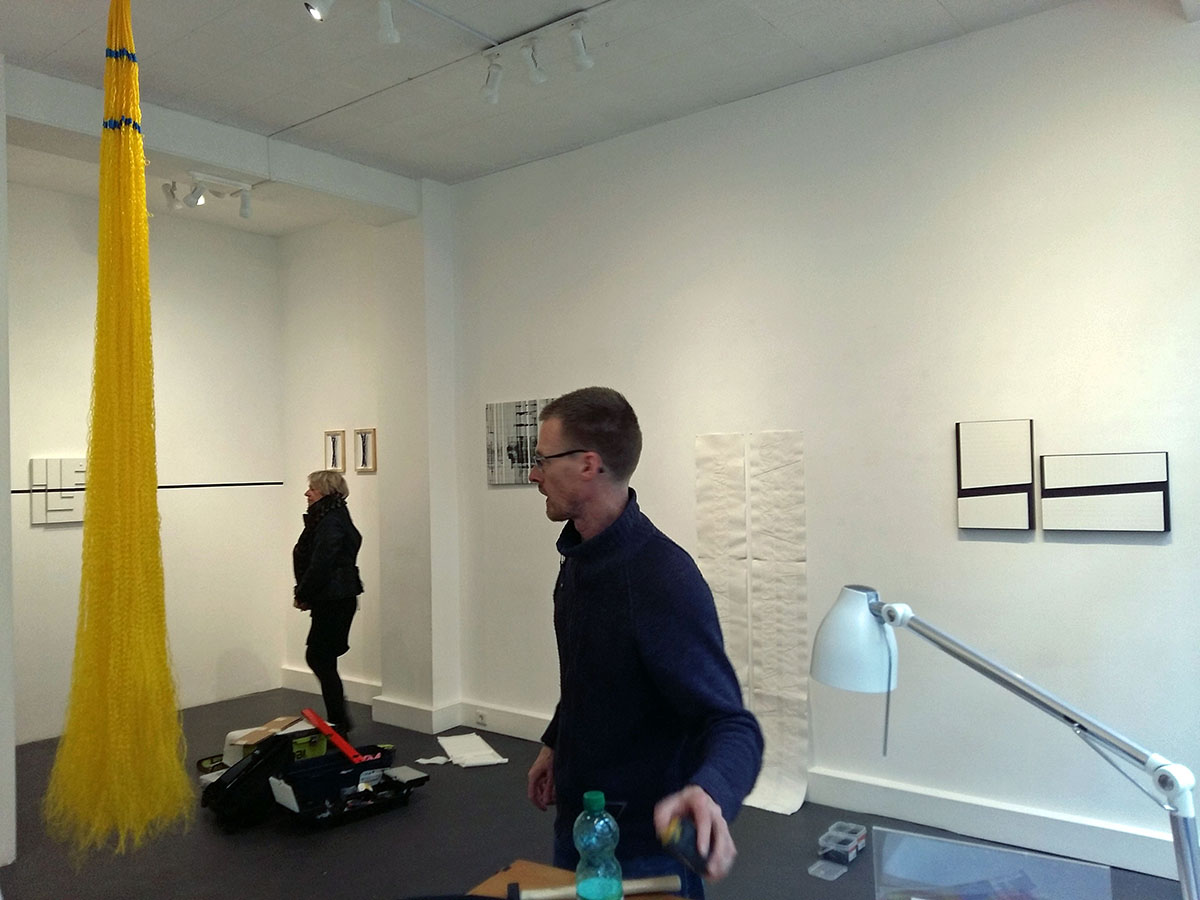
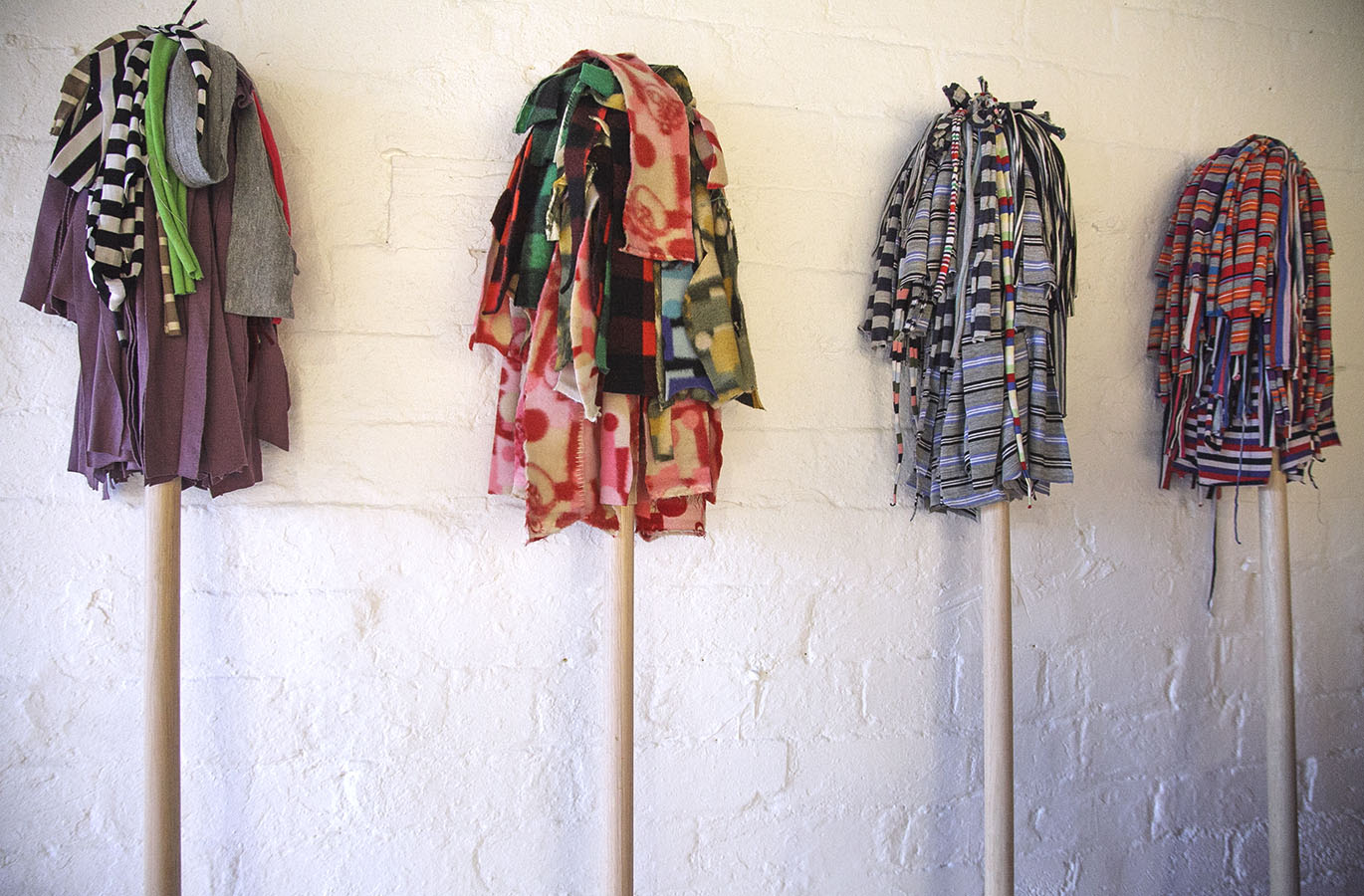
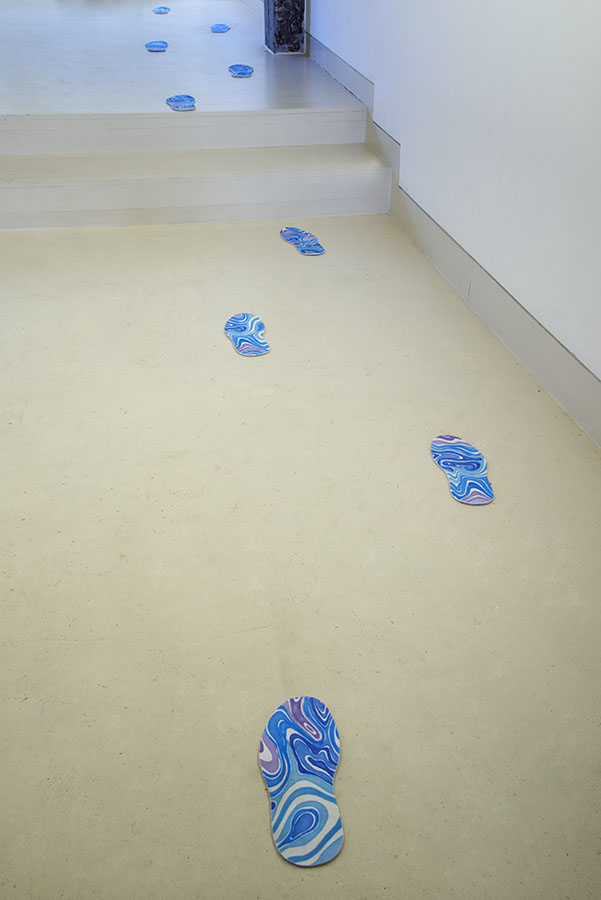
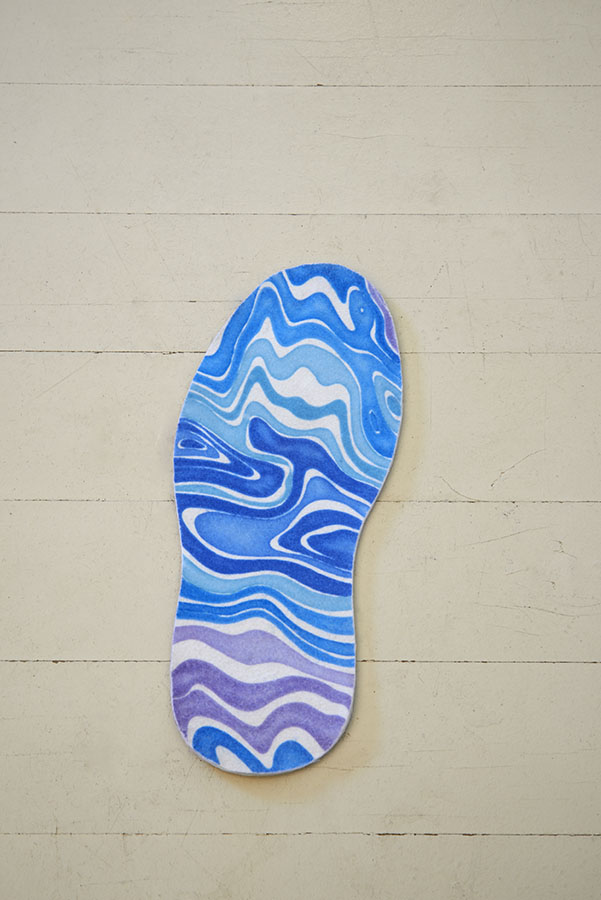

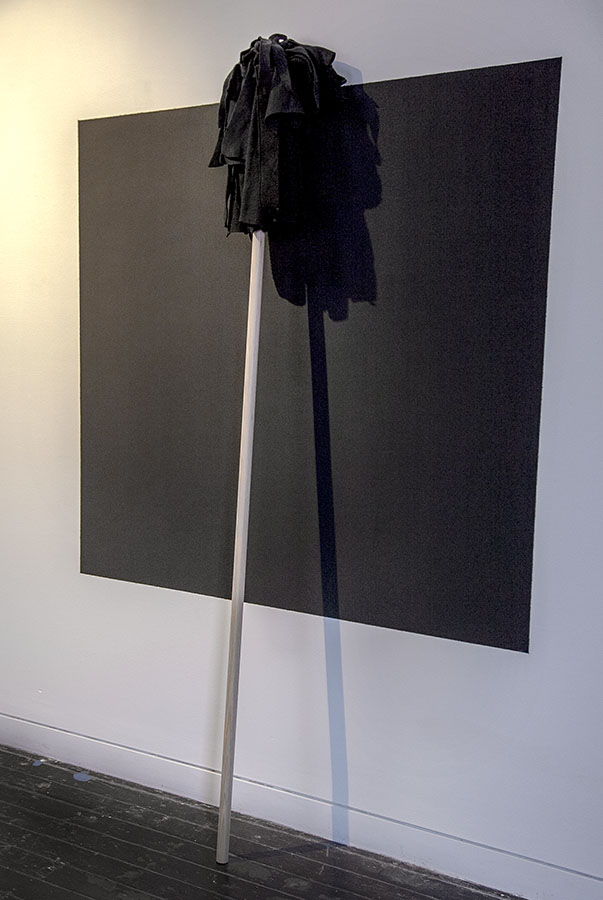

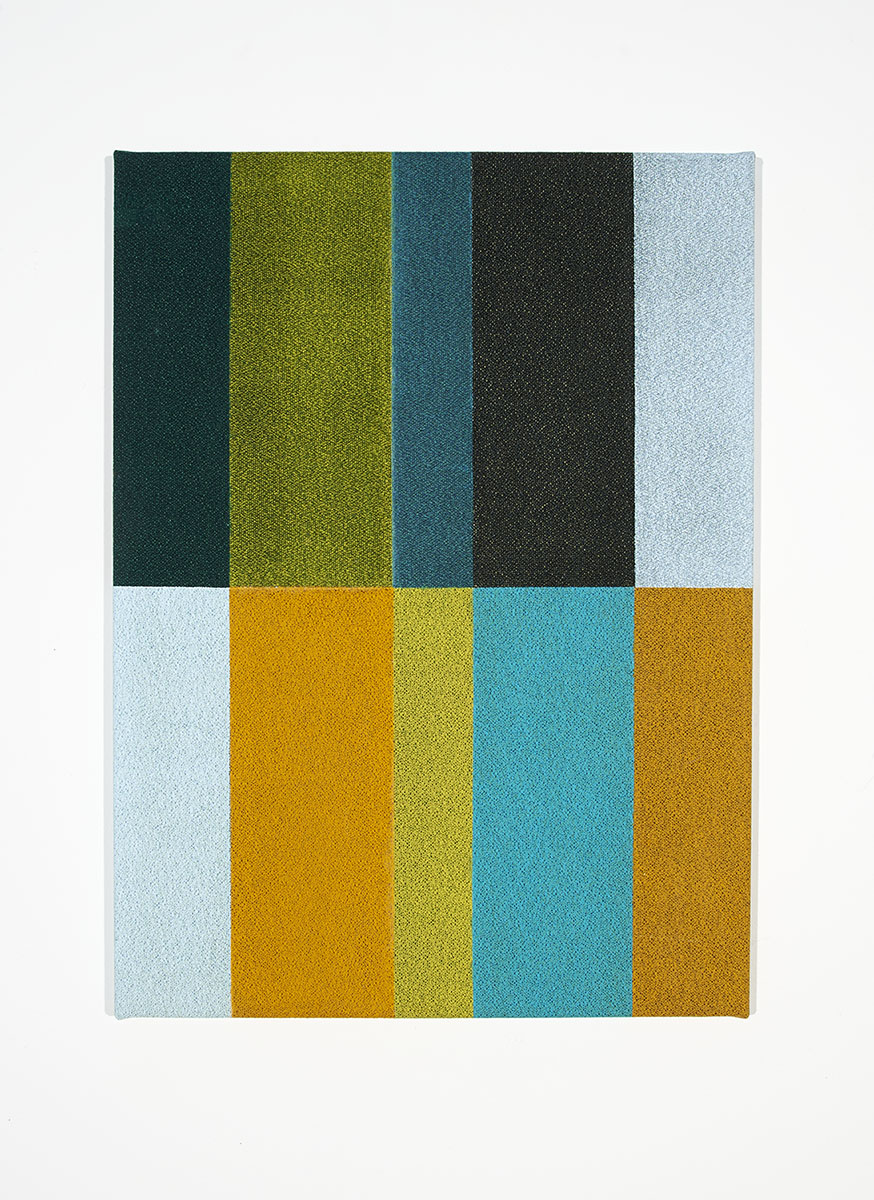
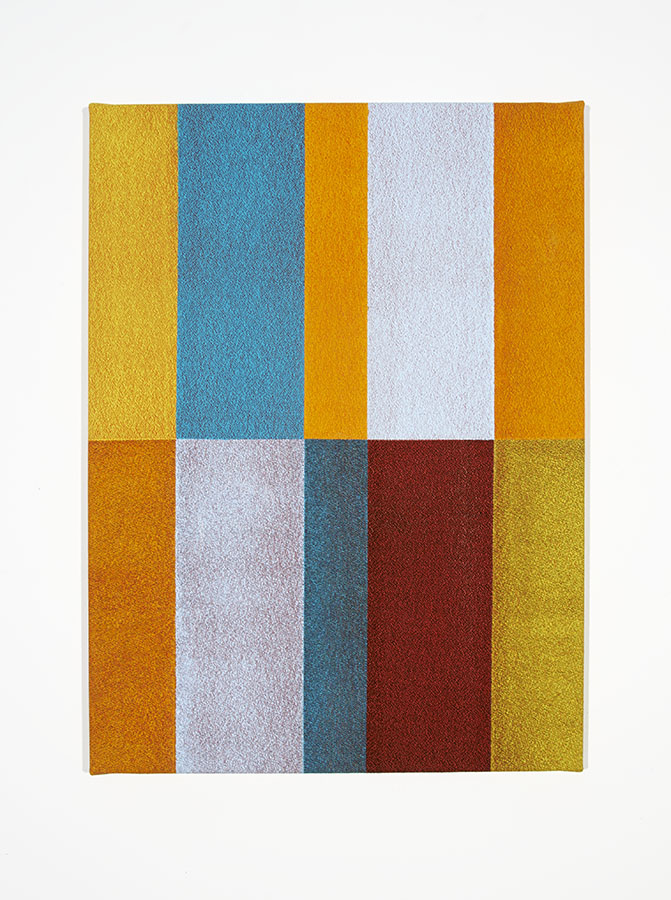
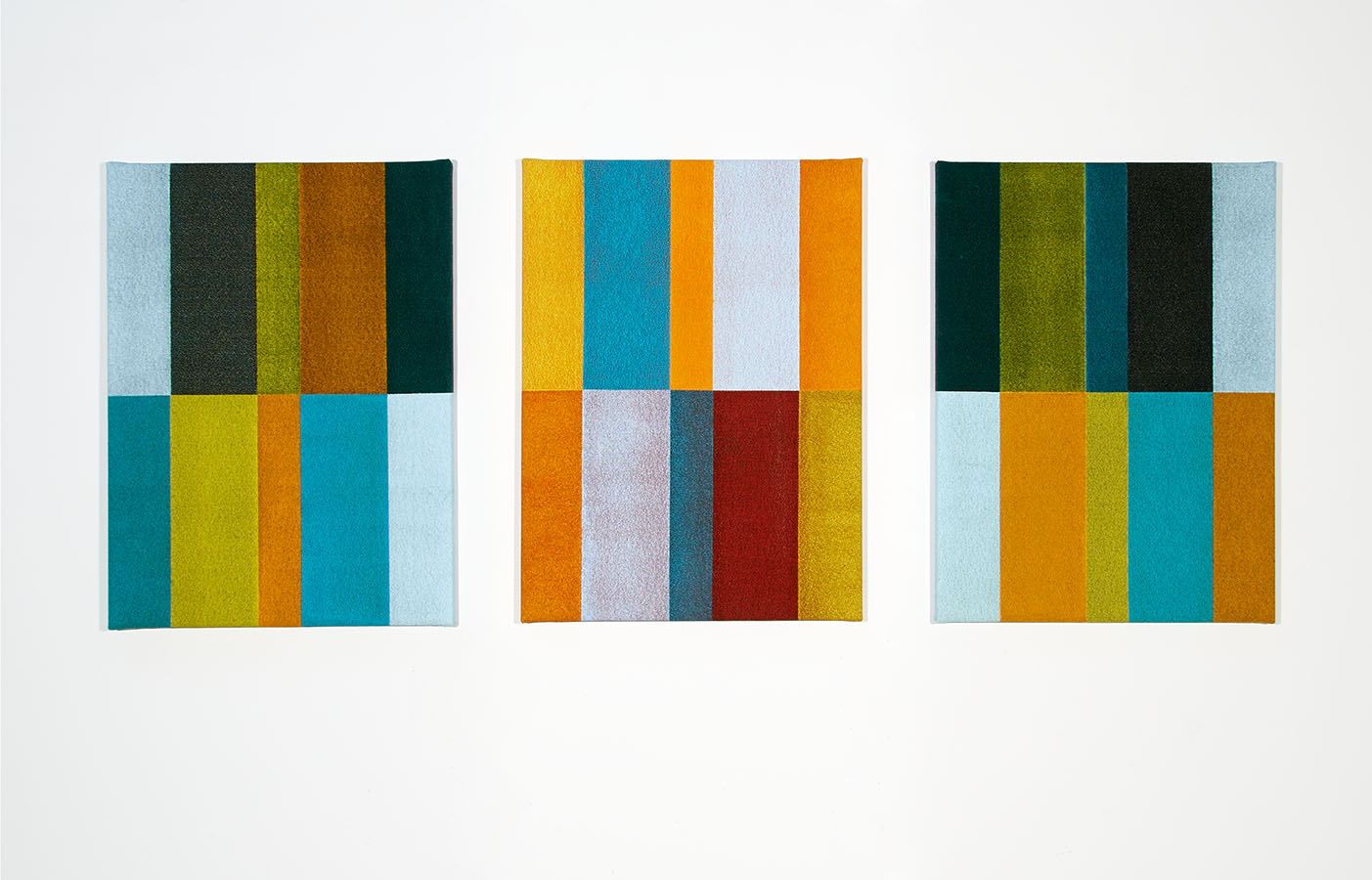
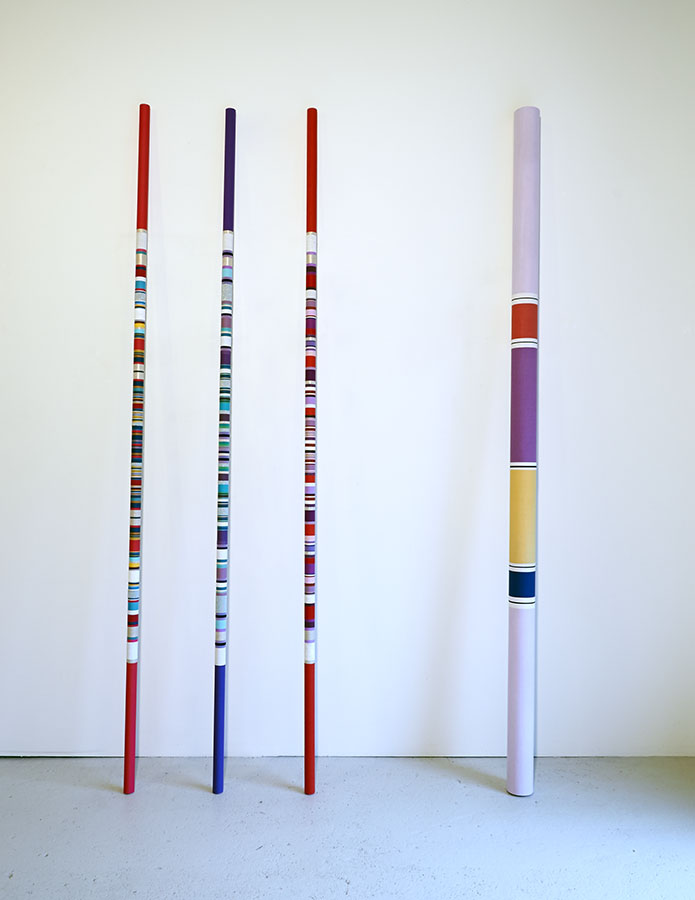
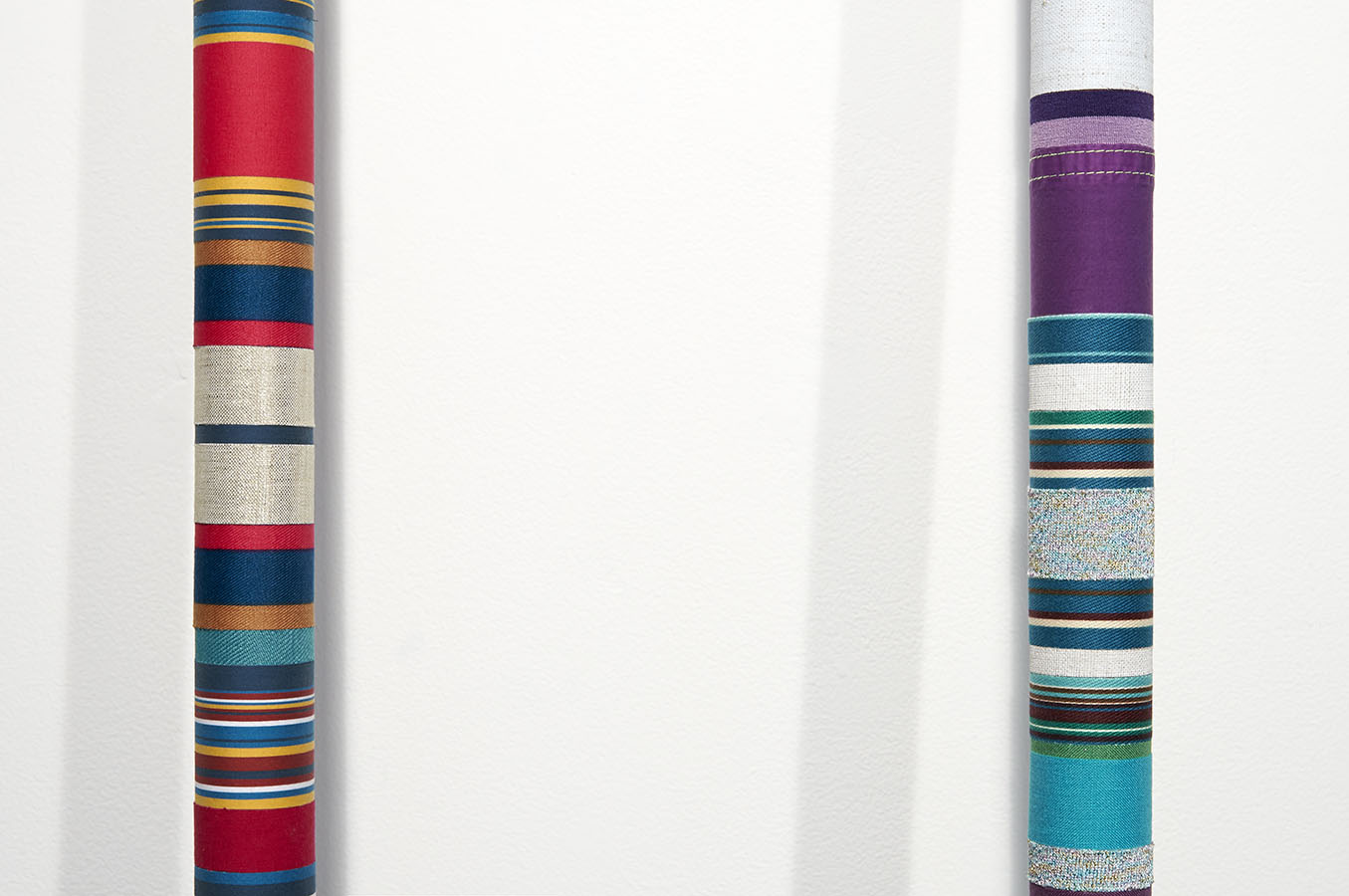
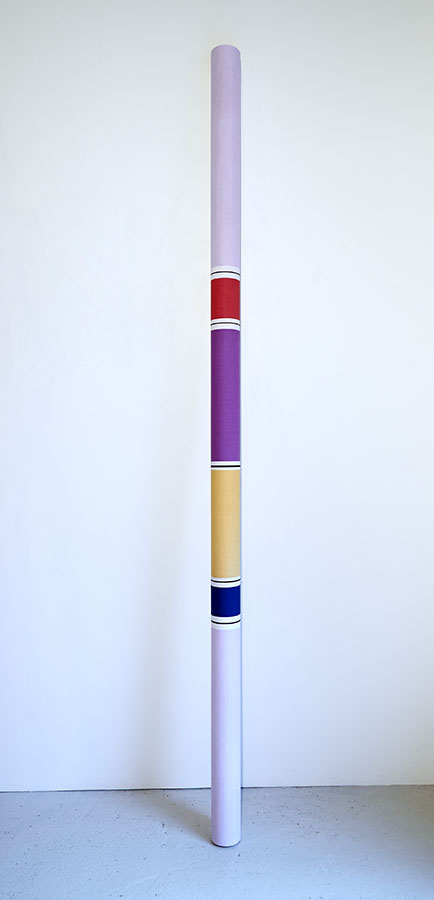
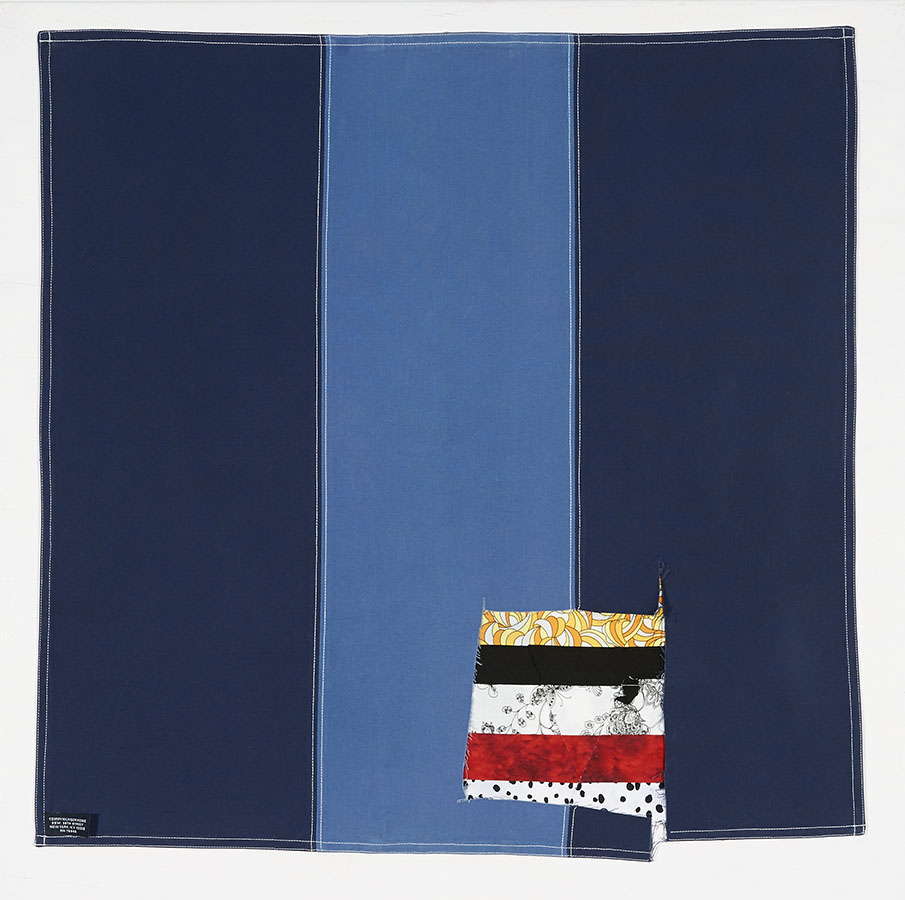
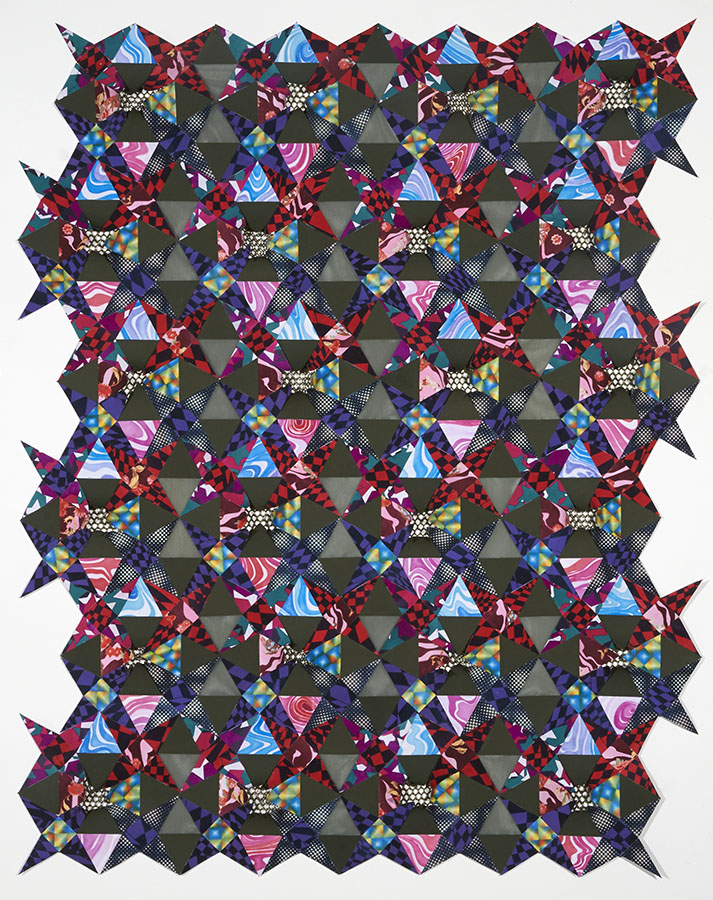
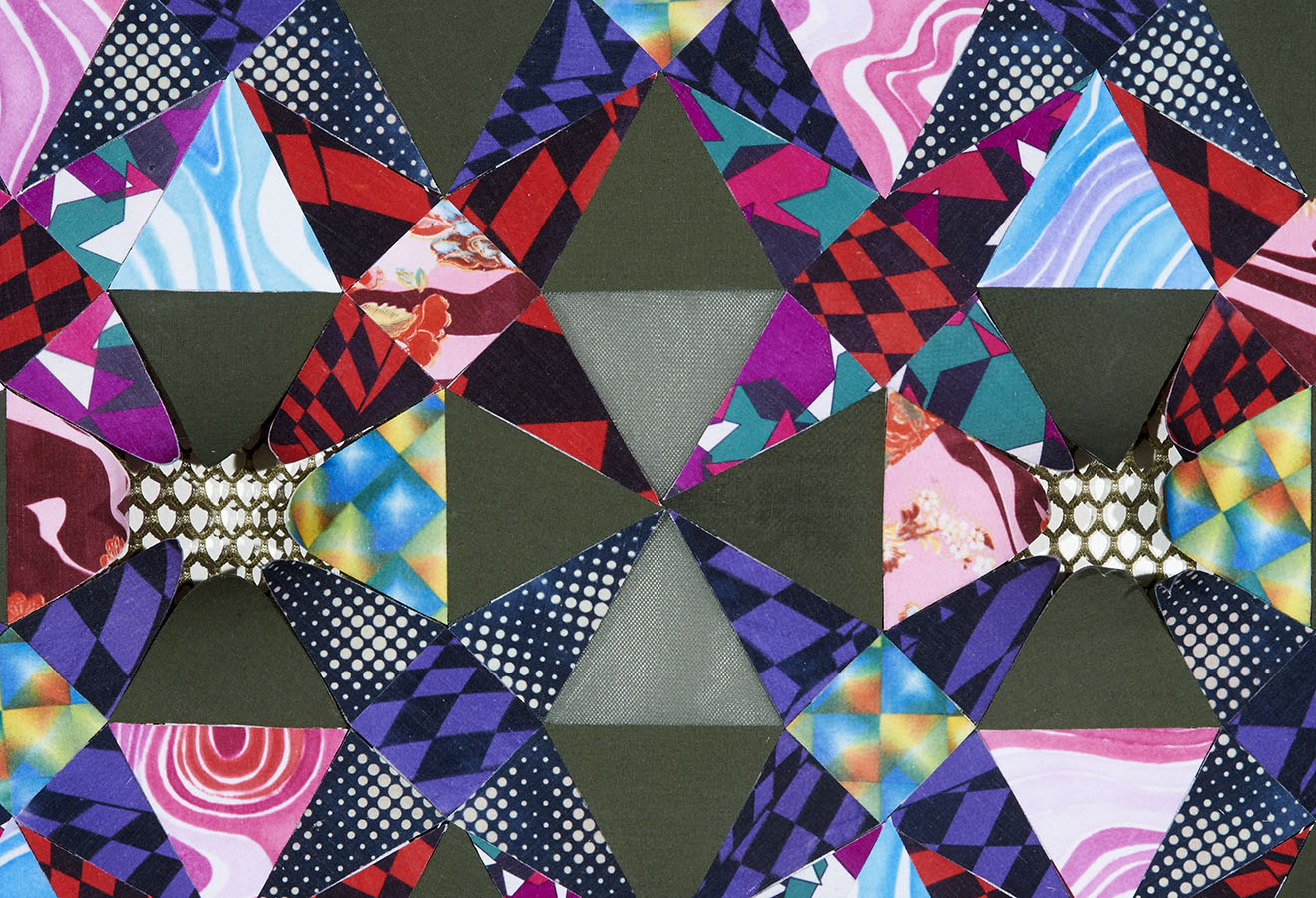
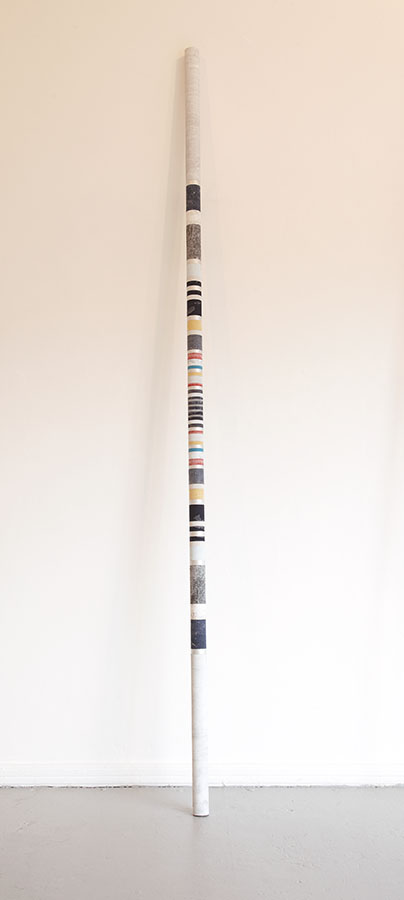
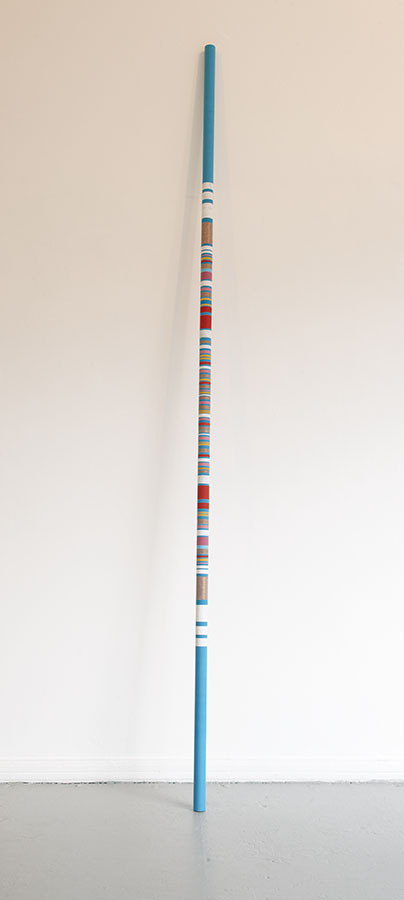
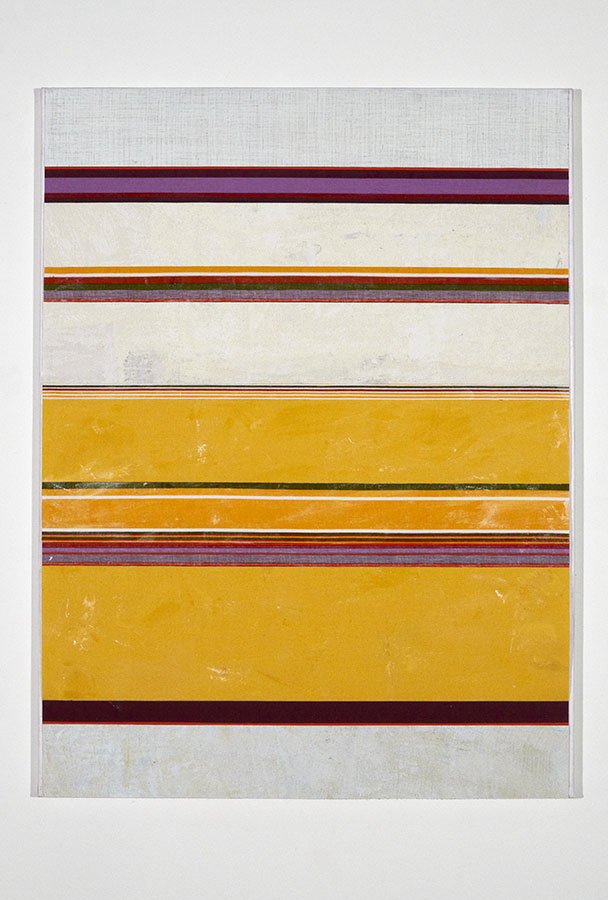
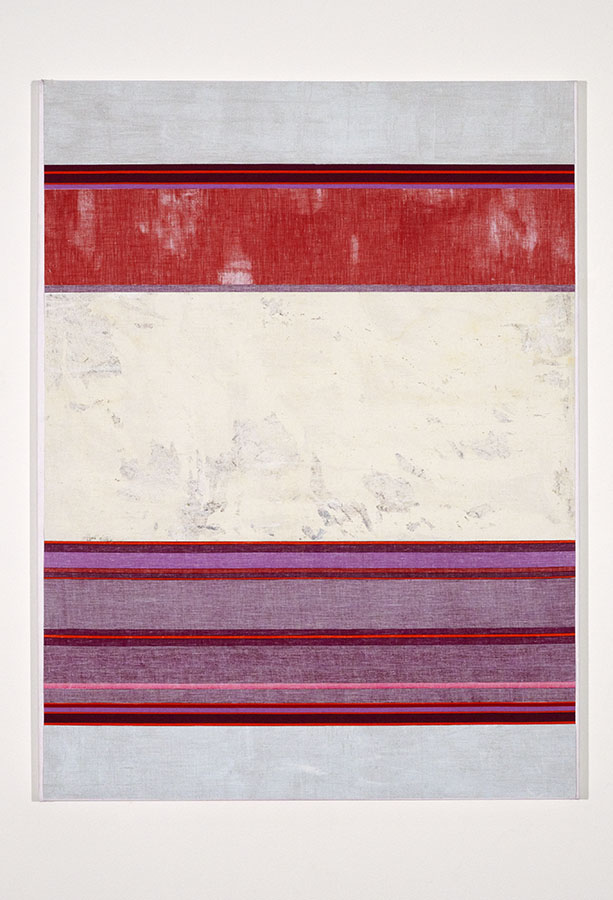
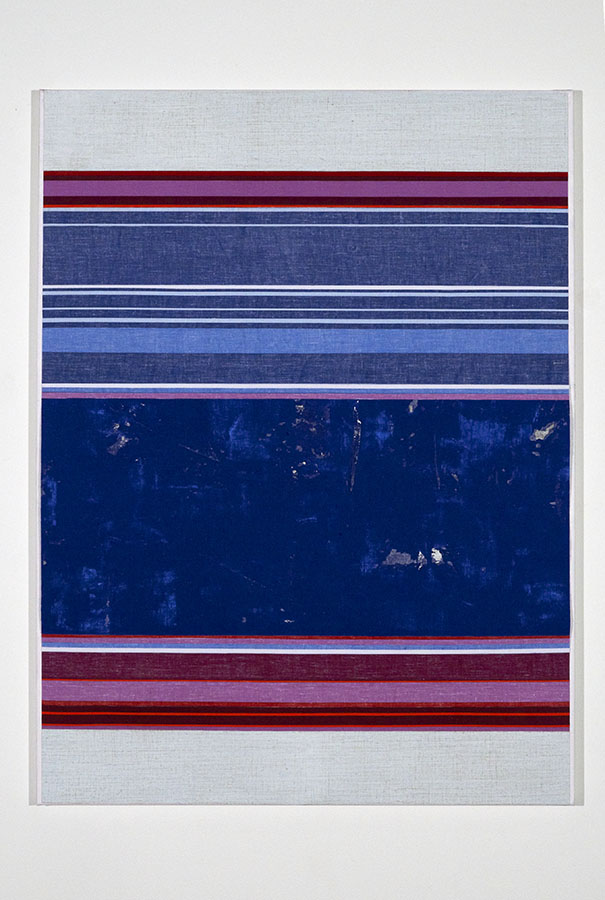
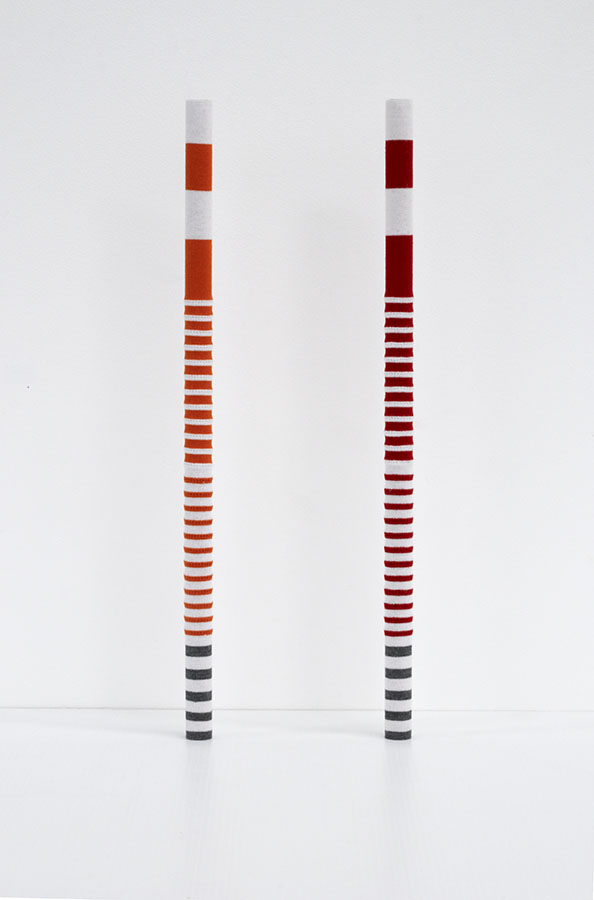
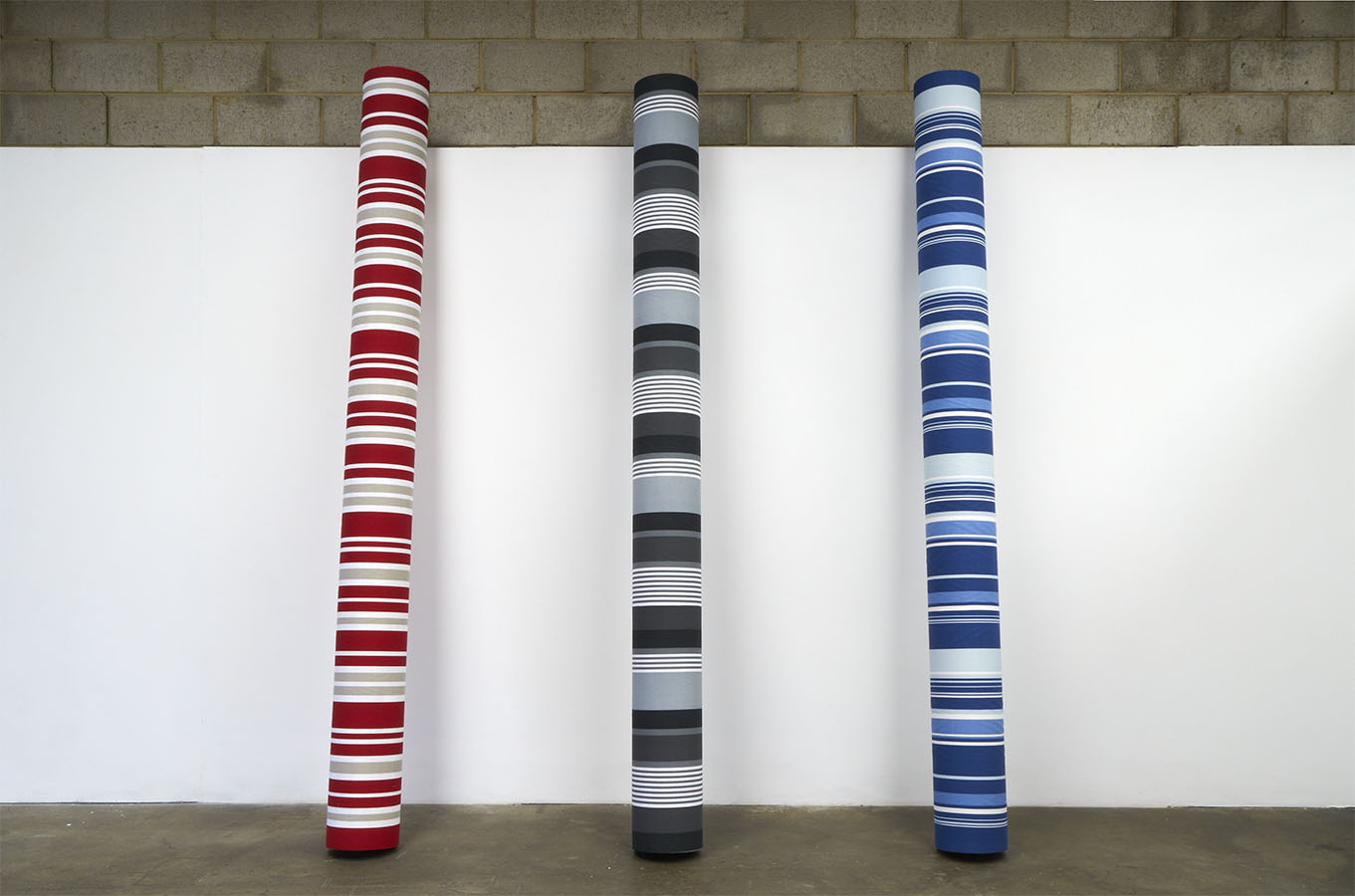
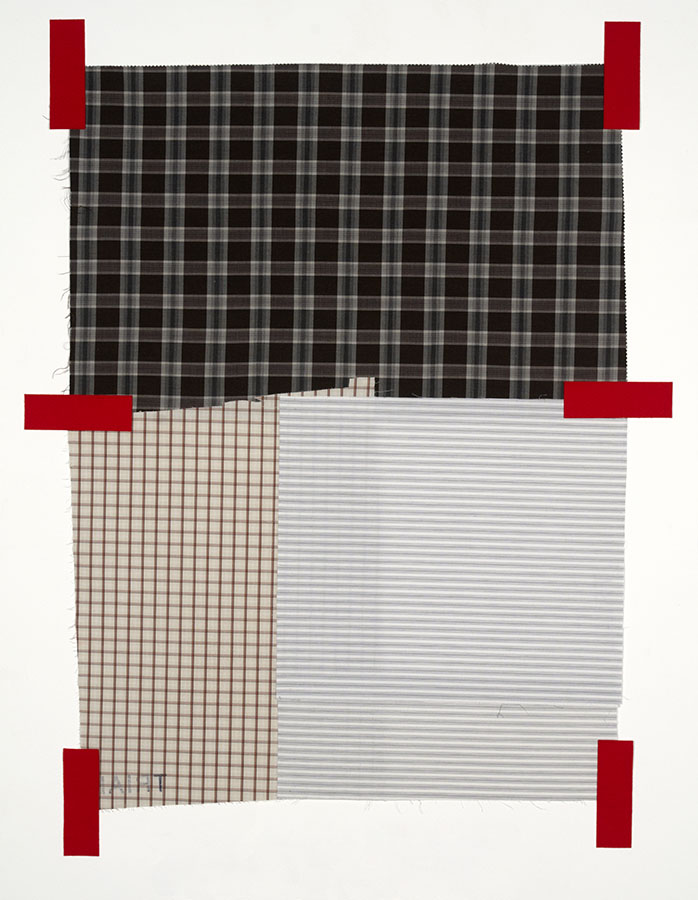


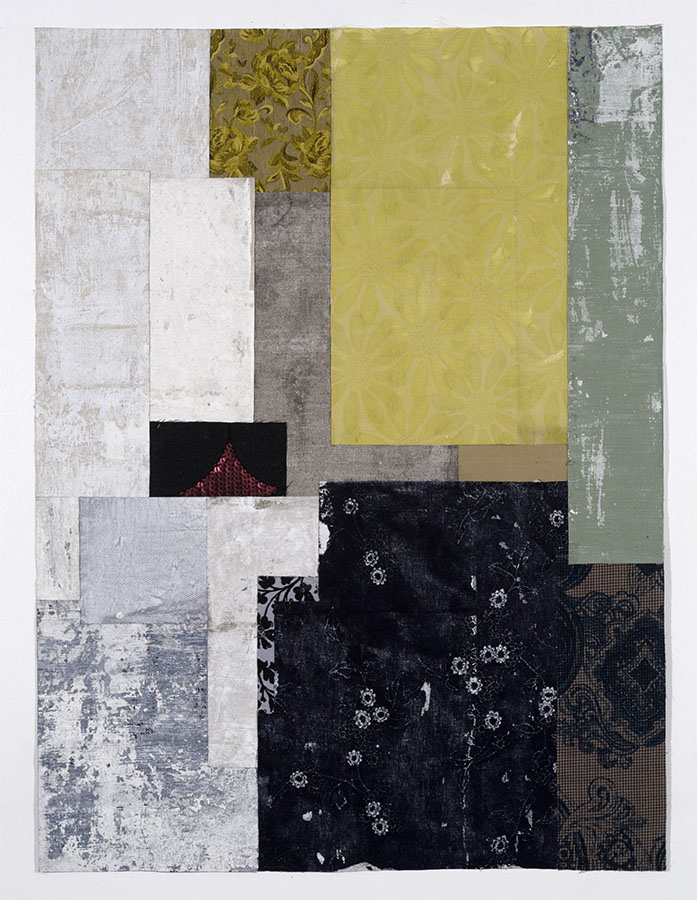
 ‘Re-Purpose’, 11 November – 18 December 2016, ANU Drill Hall Gallery, Canberra, Australia
‘Re-Purpose’, 11 November – 18 December 2016, ANU Drill Hall Gallery, Canberra, Australia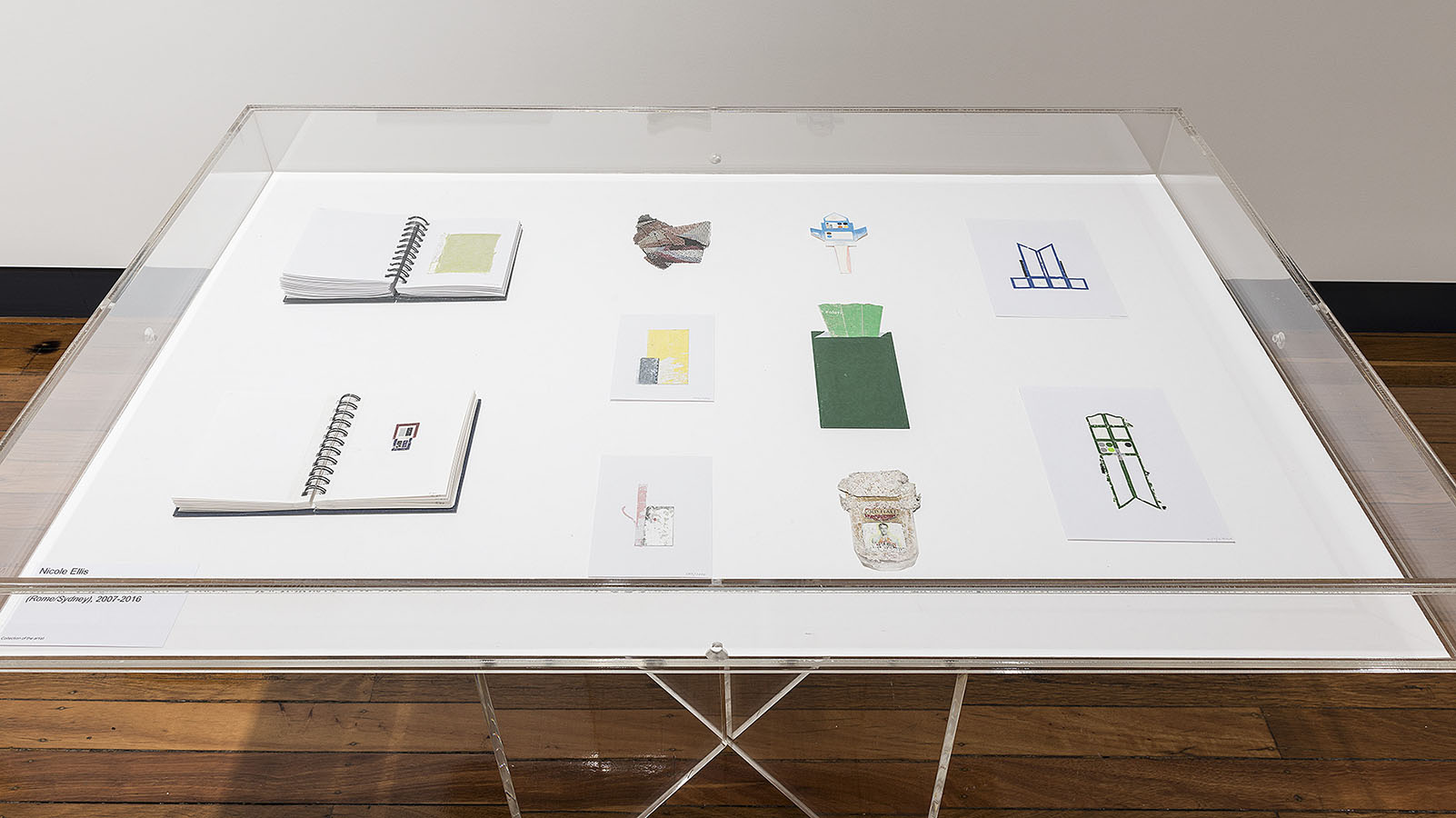
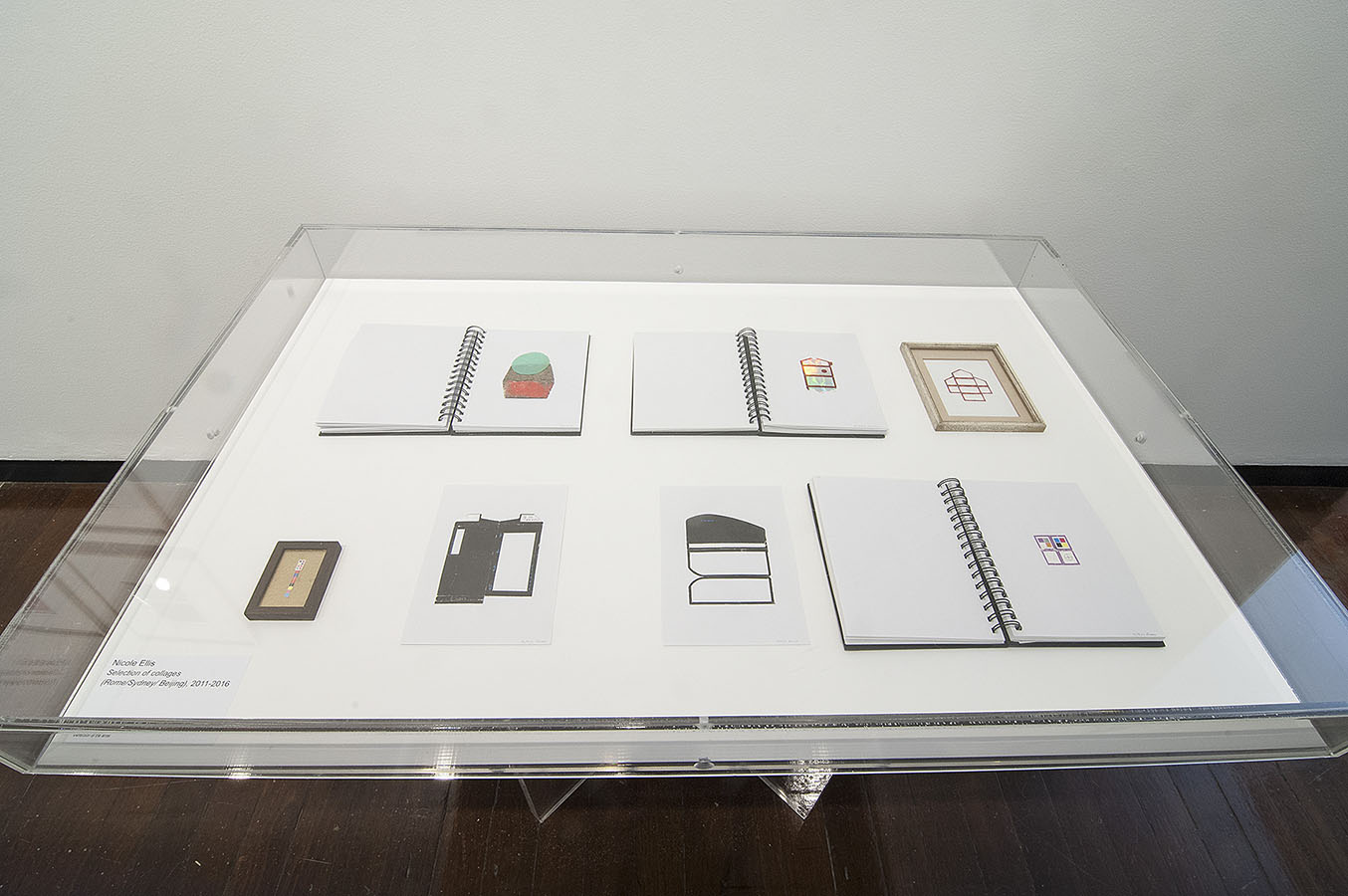
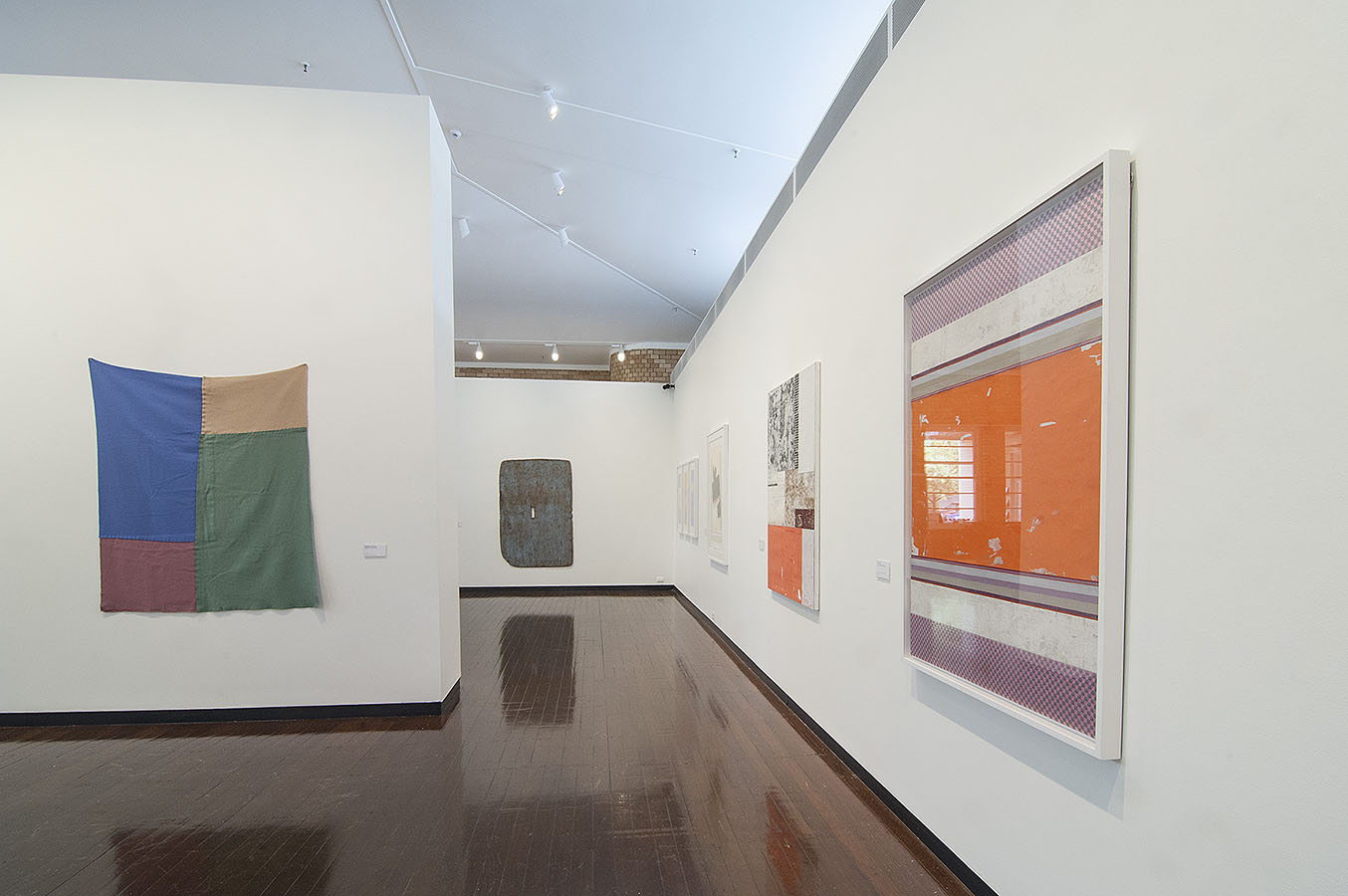
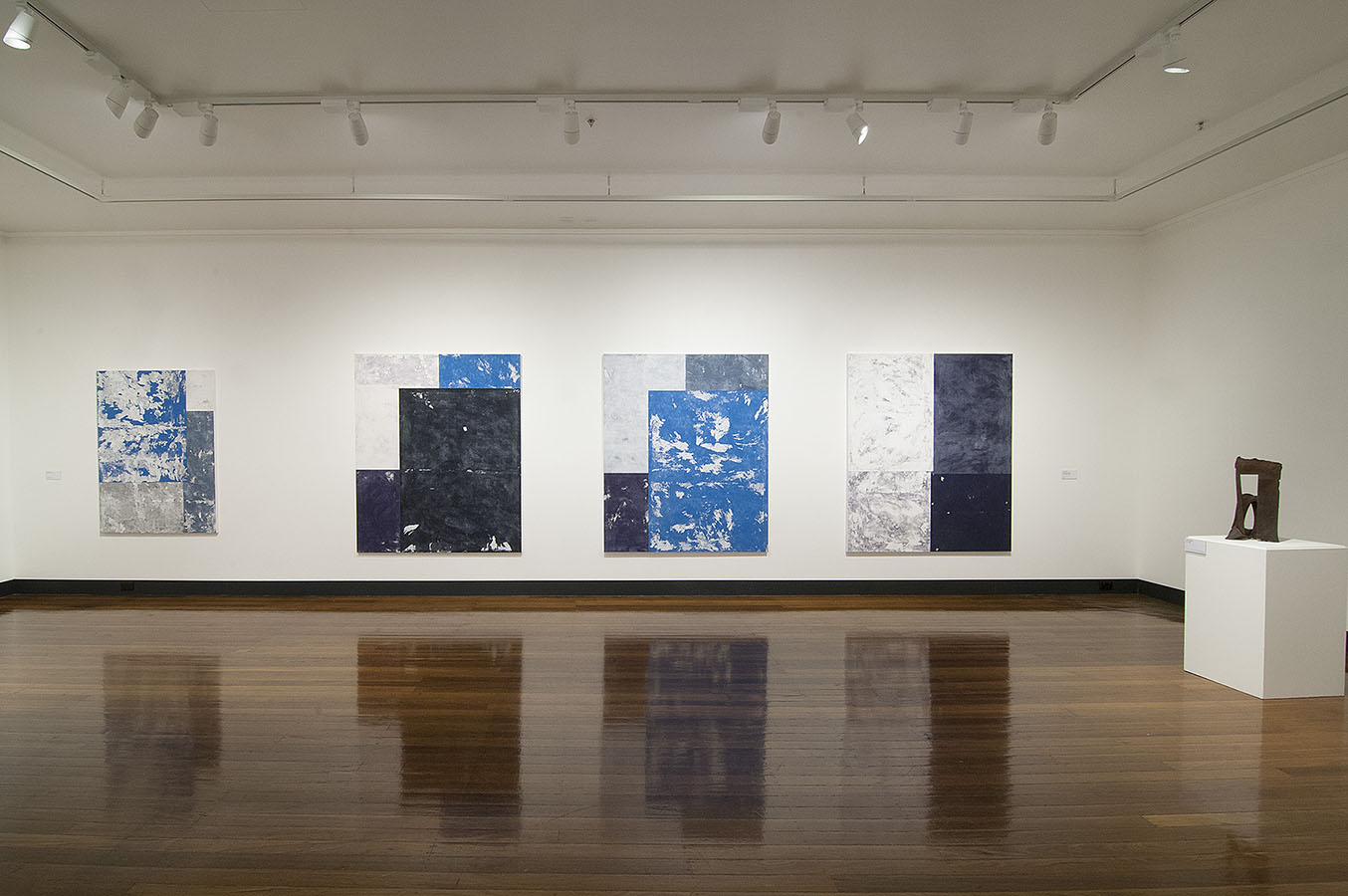
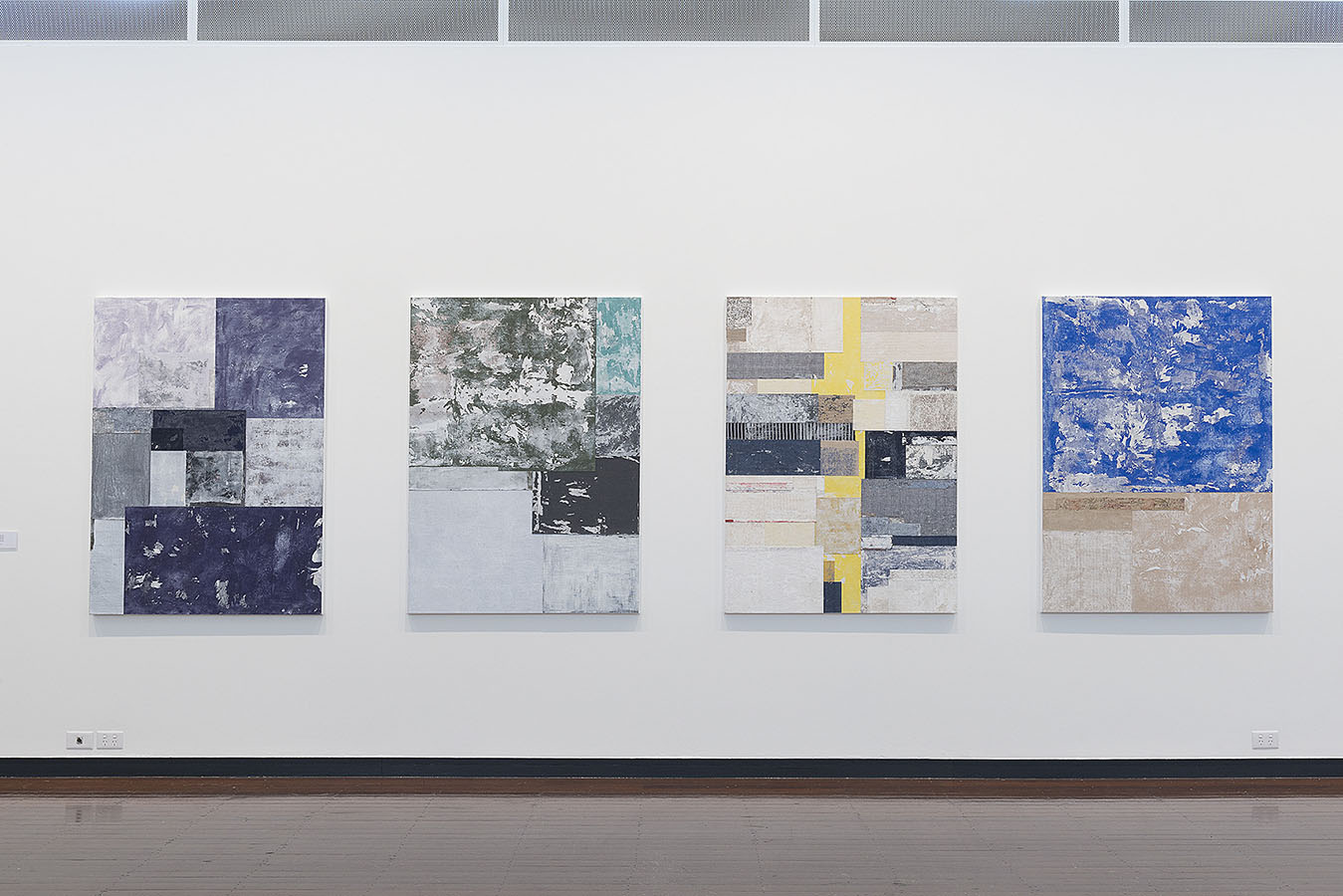
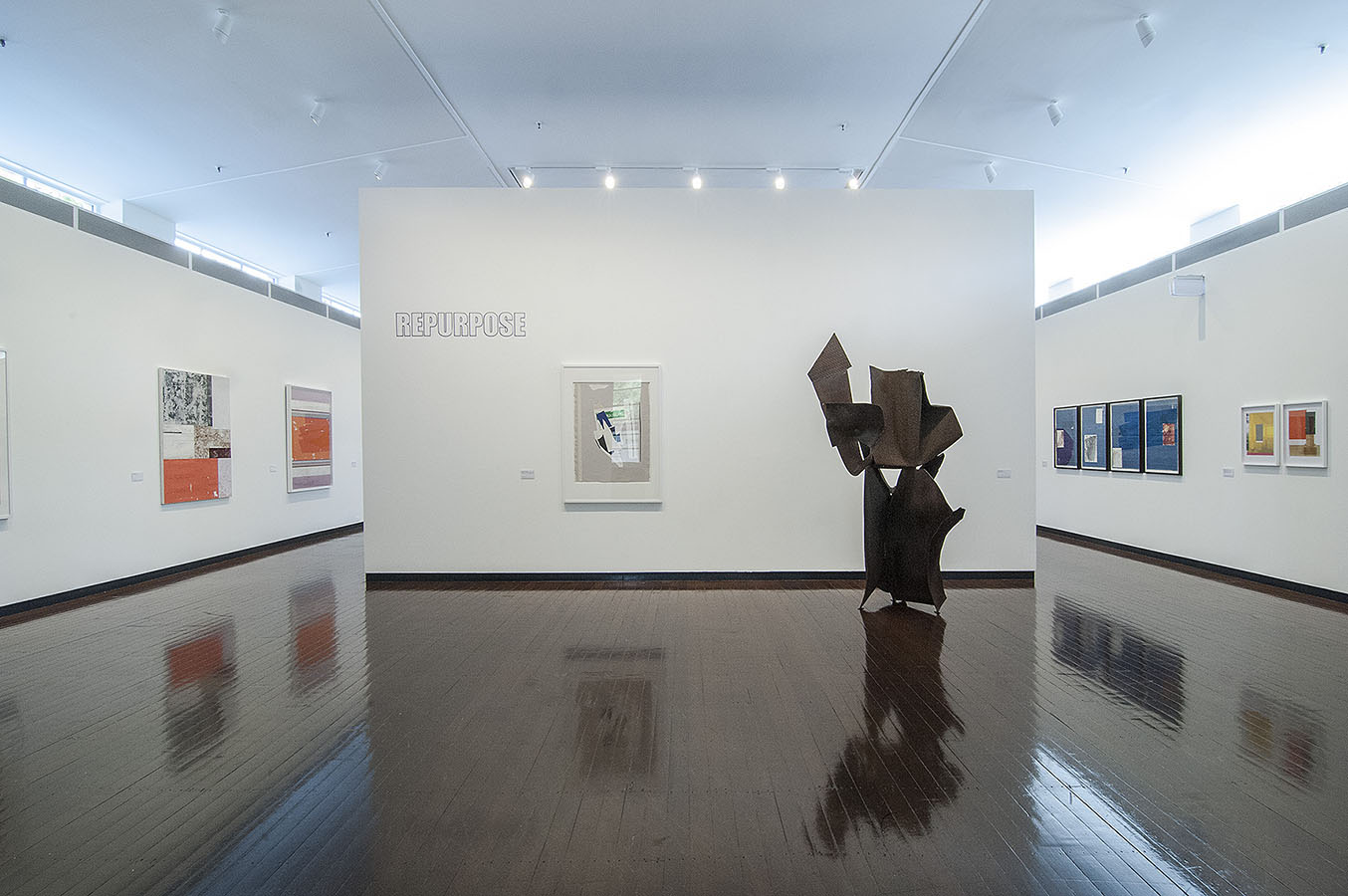

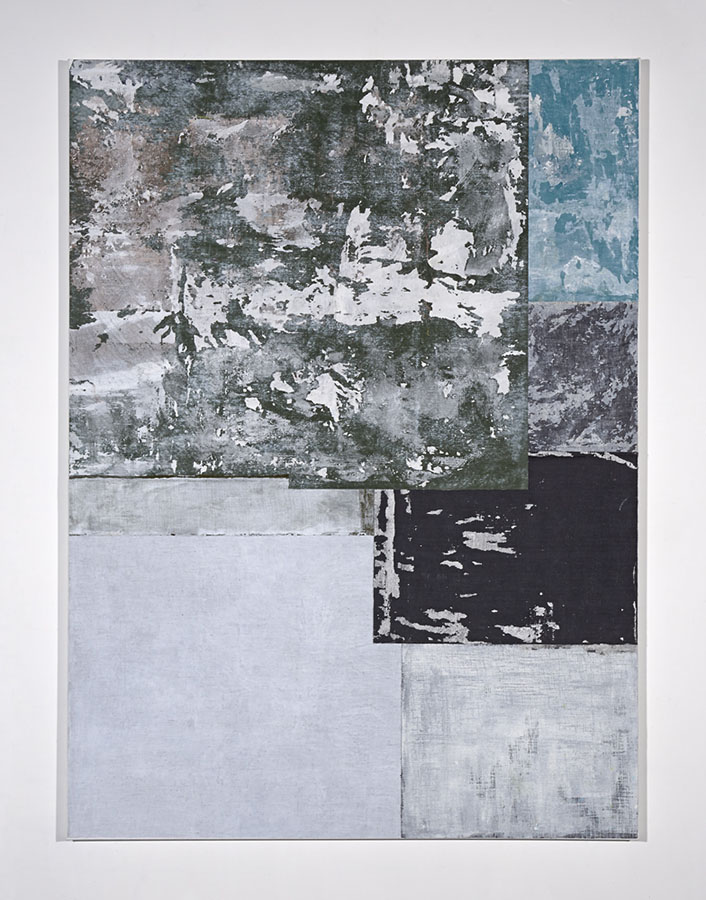
 ‘Time & Vision: New Work From Australian Artists, Australia Council for the Arts/Acme Studios’, 20 October – 11 November 2012, Bargehouse, OxoTower Wharf, South Bank, London, UK.
‘Time & Vision: New Work From Australian Artists, Australia Council for the Arts/Acme Studios’, 20 October – 11 November 2012, Bargehouse, OxoTower Wharf, South Bank, London, UK.